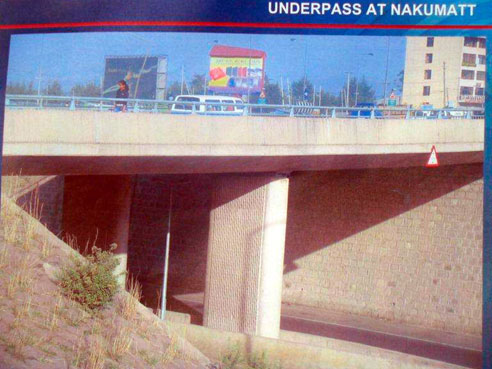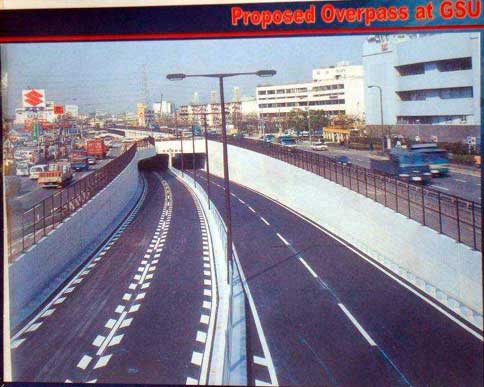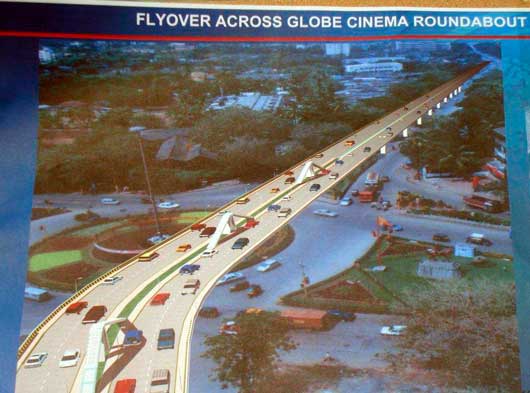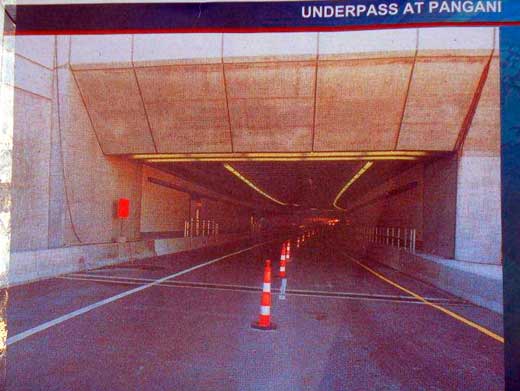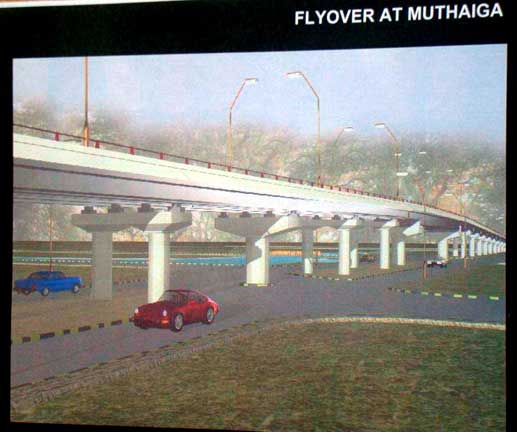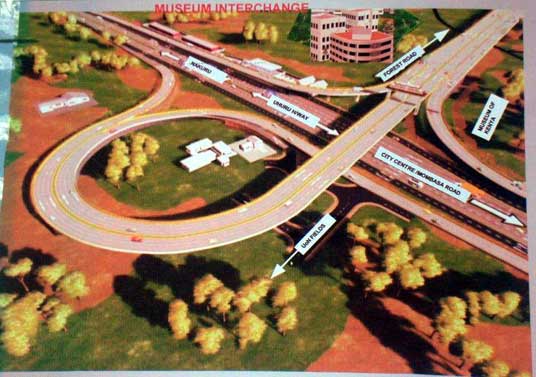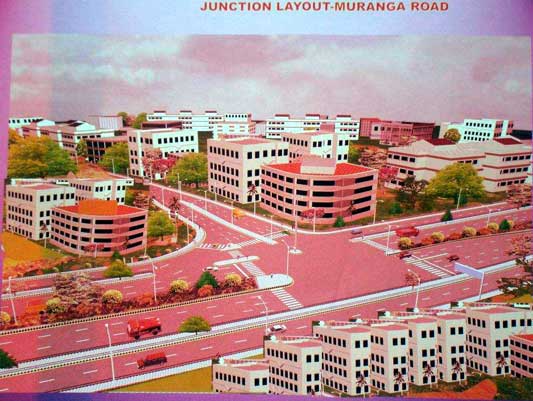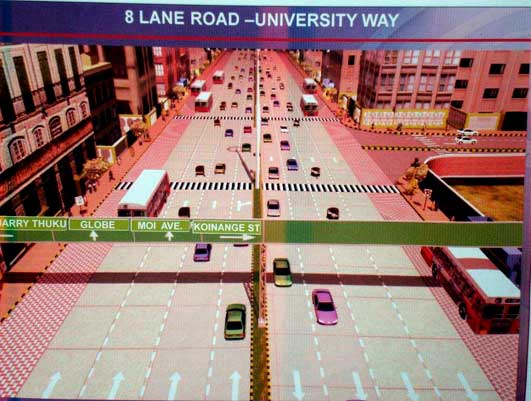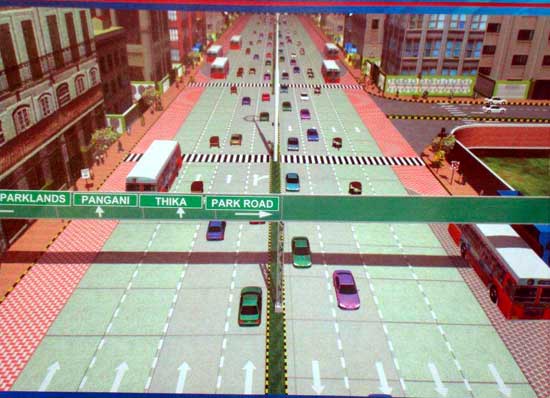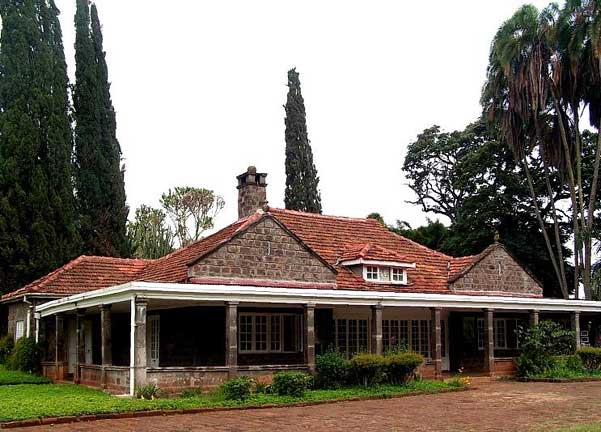NOSTALGIC EAST AFRICA
Nostalgic-other cities & towns
PRESENTING OLD & MEMORABLE PHOTOS, RELICS, ARTIFACTS ETC. - REMINDERS OF THE COLONIAL TIMES IN EAST AFRICA.
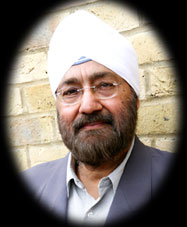
Harjinder Kanwal
If you have any material for this section, kindly e/mail me at harjinder@kanwal99.freeserve.co.uk
NAIROBI
Nairobi has a population of between three and four million. Situated on the Nairobi River, the city is not only the largest and fastest growing city in Kenya, but one of the largest in Africa.
History
The word Nairobi derives from a water hole known in Maasai (an Eastern Nilotic language) as Enkare Nyirobi, which means "cool waters." Nairobi, which was a swamp area, was founded in 1899 and was first a railway camp for the Uganda Railway. The city became Kenya’s capital, which was Mombasa initially, and it also became the capital of the British East Africa Protectorate in 1905. With the spread of plagues in the early 1900s, the town was burnt down and had to be rebuilt. Having a railroad system in the system helped it to have drastic growth, becoming the second largest city in Kenya behind Mombasa.
The city of Nairobi also grew due to administration and tourism businesses (mostly big game hunting). The British, who were one of Kenya’s colonizers, set up shop in Nairobi, leading to the creation of big hotels primarily for the British hunters. Also, Nairobi has an East Indian community from those who are the descendents of original colonial railway labourers and merchants. The following photographs are a memory to those stalwarts.
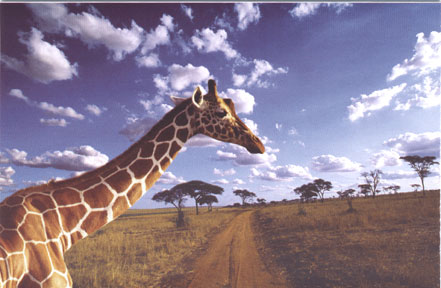
This is Africa................................
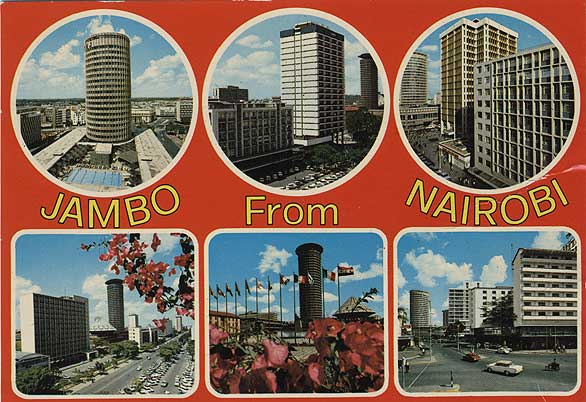
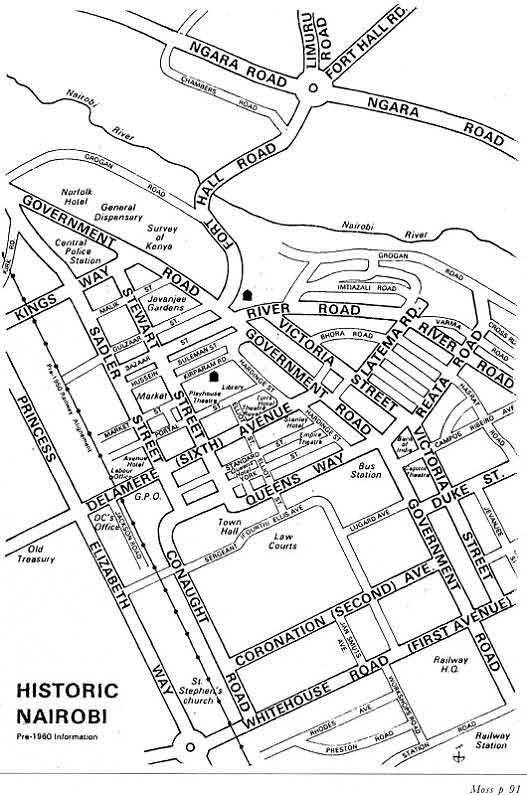
A street map of Nairobi 1960
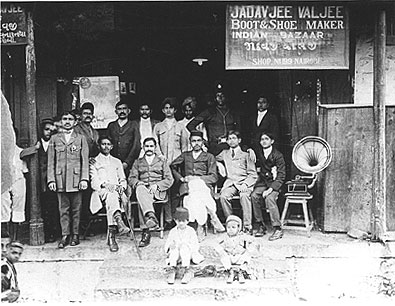
A shoes shop in Indian Bazaar, Nairobi with family members- around 1914. (courtesy Asians in EA) -Note the gramophone which was a luxury in those days.
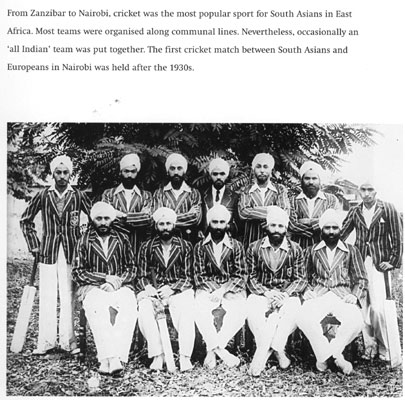
One of the first Sikh Union Cricket teams in East Africa (Courtesy Asians in EA)
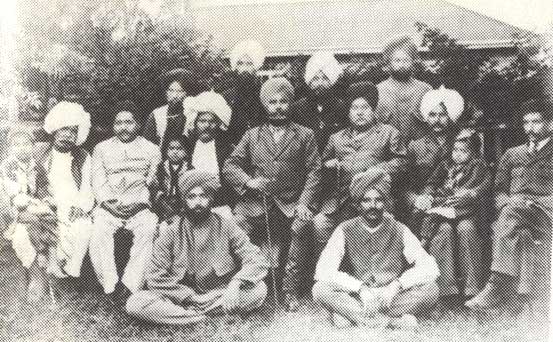
Asian Pioneers of East Africa (Courtesy Asian African Heritage)
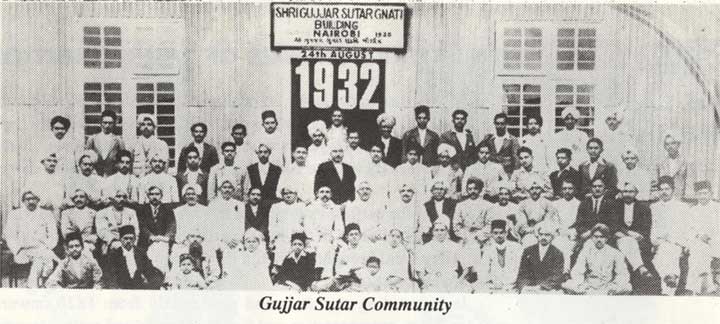
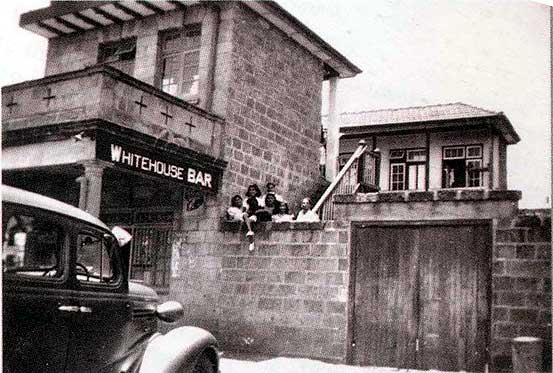
D'Souza's Whitehouse Bar & living House on Whitehouse Road, near Railway Station 1940's(courtesy We came in Dhows)
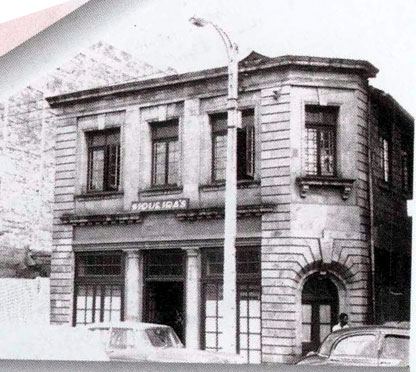
Sequeira's Bar & Billiards opposite Jeevanjee Gardens. (I remember playing snooker in this place quite often) {courtesy We came in dhows}
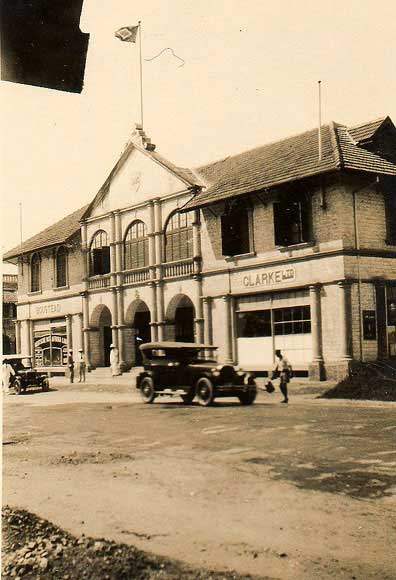
Premises of Bousted & Clarke in Nairobi early 20th Century. (photo sent by Robin Grayson){see also Mombasa}
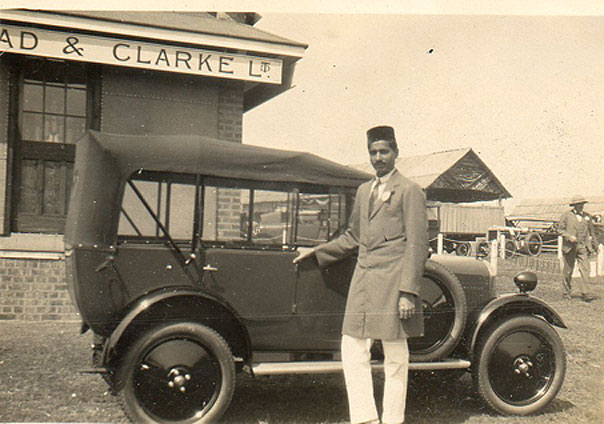
An Indian driver working for Bousted & Clarke (sent by Robin Grayson)
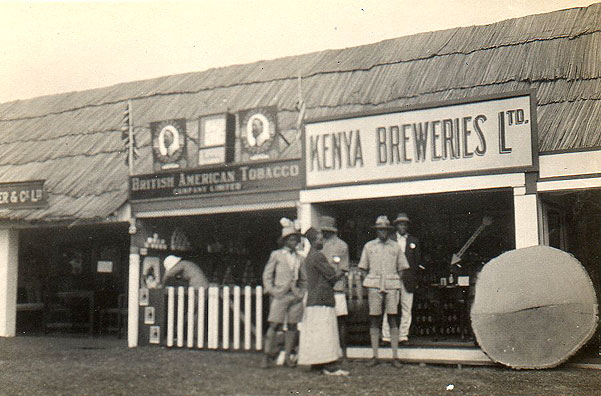
Offices of Kenya Brewery & British American Tobacco around 1920's (sent by Robin Grayson)
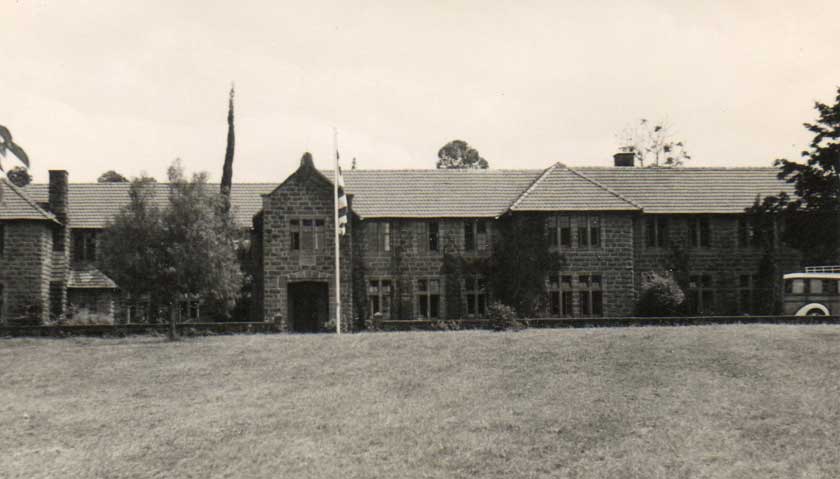
Kenton College Nairobi early 50's Pembrook House School must have been visiting as I remember the car shown as being theirs(Robin Grayson)
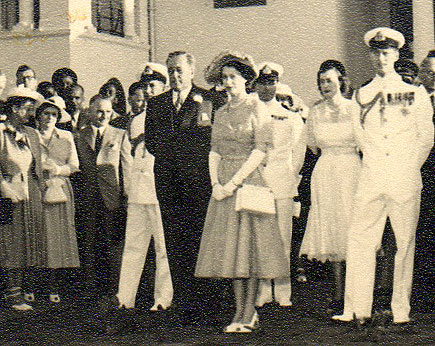
Princess Elizabeth with Prince Phillip day before she became queen. My mother 2nd from left with white handbag my father is beside her 1952.(Robin Grayson) [Thanks to Robin for all historic photos-Harjinder]
SEE OLD BUILDINGS WHICH STILL GRACE NAIROBI
(Link sent by Pushpendra Shah)
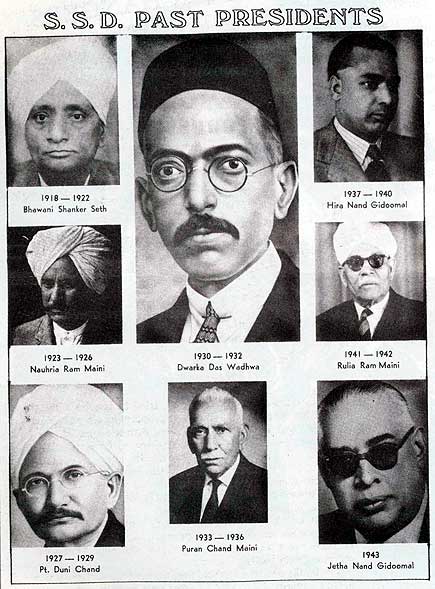
Past Presdents of Sri Sanatan Dharma Sabha, Duke Street, Nairobi (Courtesy We came in Dhows)
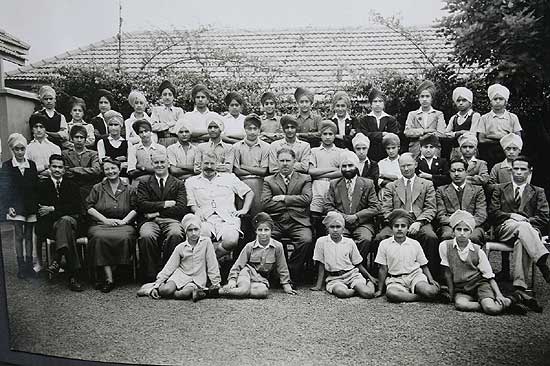
Students with teachers of Technical High School . Sikh teacher S. Hari Singh Chana. Photo circa 1955/56. (courtesy G.Bhari) - Any Recognitions?
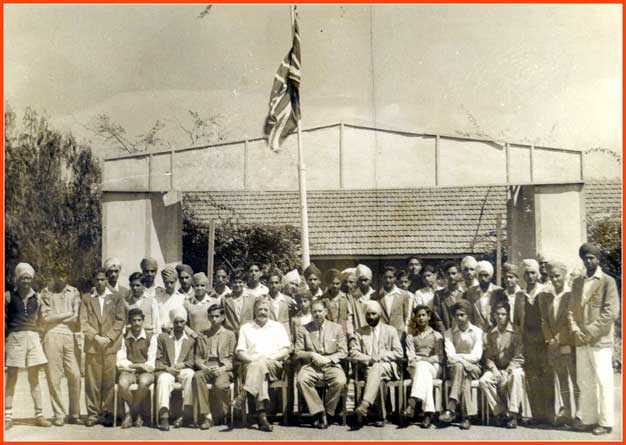
Teacher Hari Singh Chana with other staff teachers and students of Technical High School around 1955/56 (sent by Harry Chana)
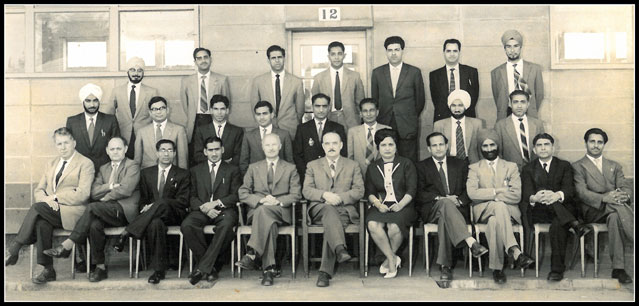
Teaching staff of Technical High School around the 50's (sent by Harry Chana)
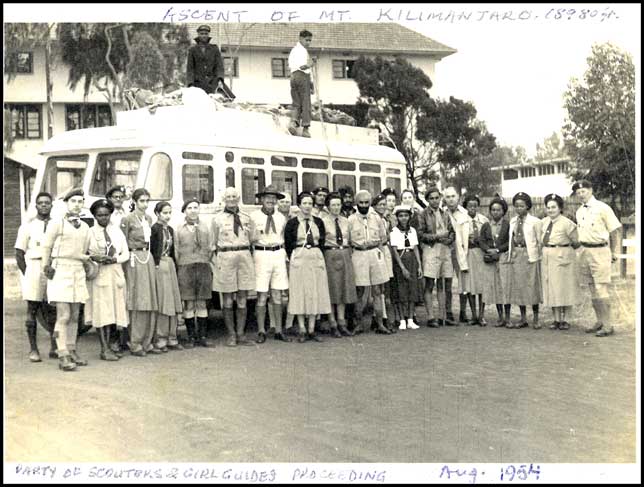
Scouts and teachers getting ready to scale the Kilimanjaro 1954 (sent by Harry Chana)
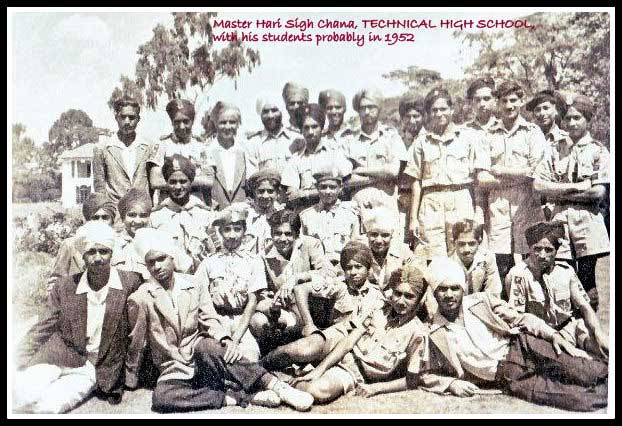
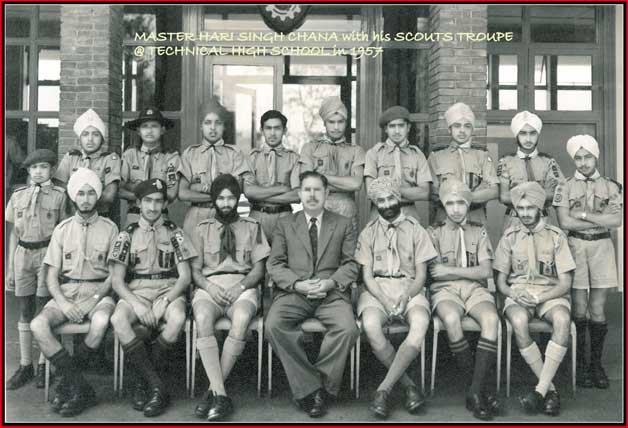
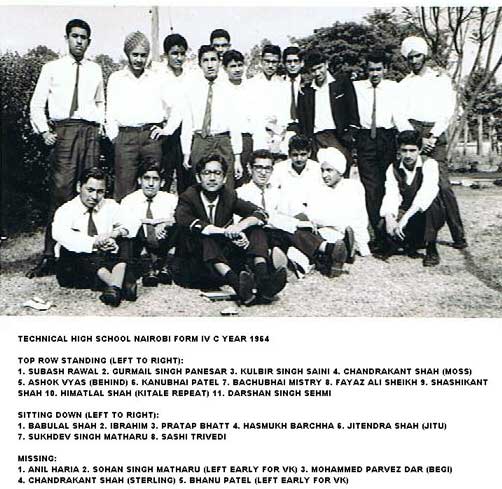
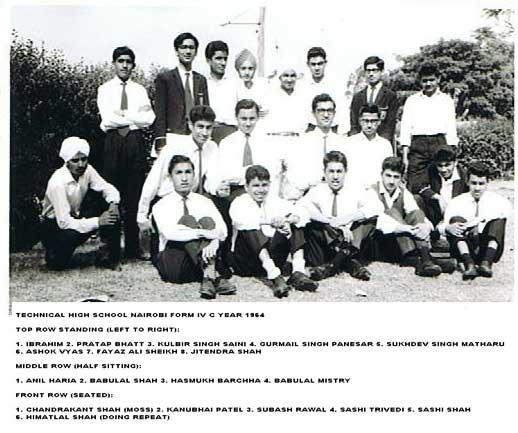
Above 2 photos sent by Jitendra Shah
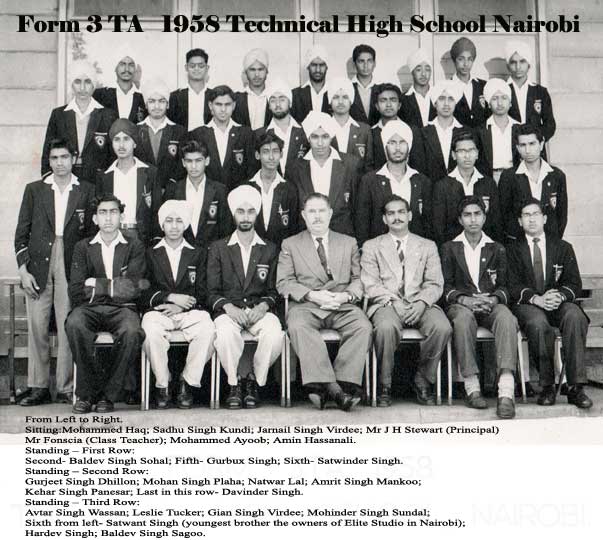
standing 2nd row is Gurjit Singh Mangat. Photo sent by Jarnail Singh Virdee
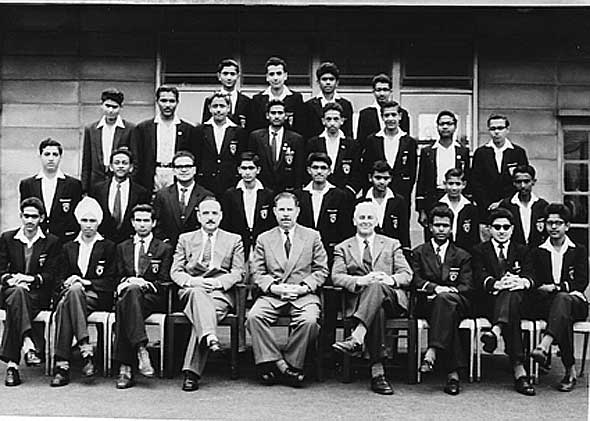
Class 4CA -1959 (sent by Vanraj Chavda)
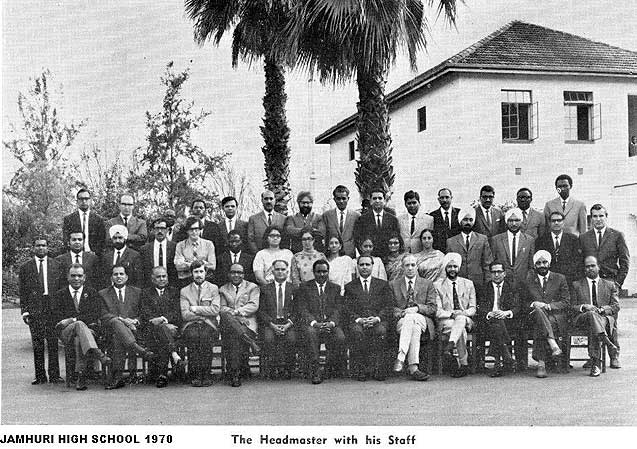
Do any of you old students know the names of these teachers? Please e/mail me or Pushpendra Shah student from 1970 -1973 at pushsplace@gmail.com- Some of the teachers are Lto R sitting: 2. Mr. Uppal. 10 Mr. Barha. 12. Mr. Karam Singh Second Row ( Standing ):Mr Gupta, Mr Sahdev, DK, Kamalludin,- The following names have been sent by Parveen Alladin (Bhatty) First row (seated) left to right:
#1 -- P.D. Patel -Head of science dept.
#4 -- Towgood (surname) - he was from Canada
#8 -- Vinayak (surname) - vice-principal
Ladies: left to right: #1 -- Parveen Alladin (me)
#2 -- Shamim Magre -- do not know married surname --
probably still in Nairobi. Married a fellow in the army.
Phys-ed & english.
#4 -- Divya Shah -- Married a fellow in England. Math.
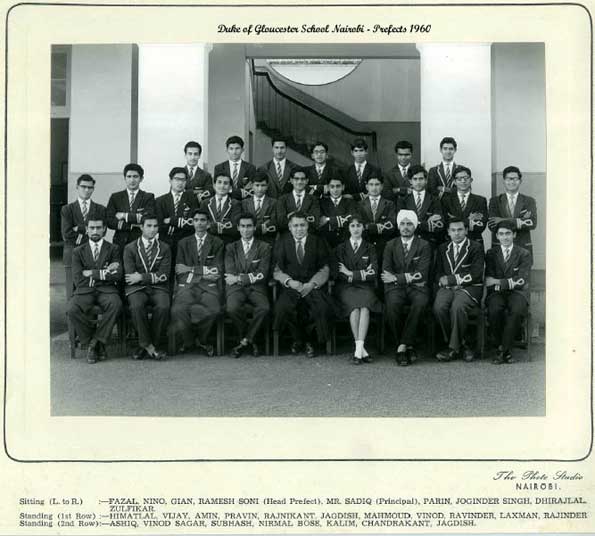
Photo sent by Jagdish Kothary
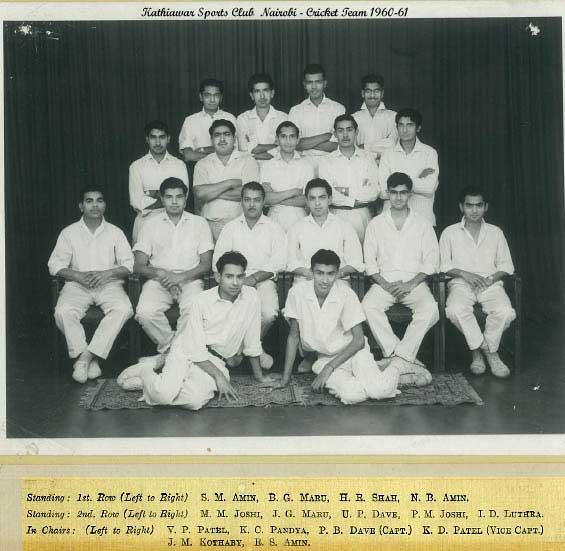
Photo sent by Jagdish Kothary
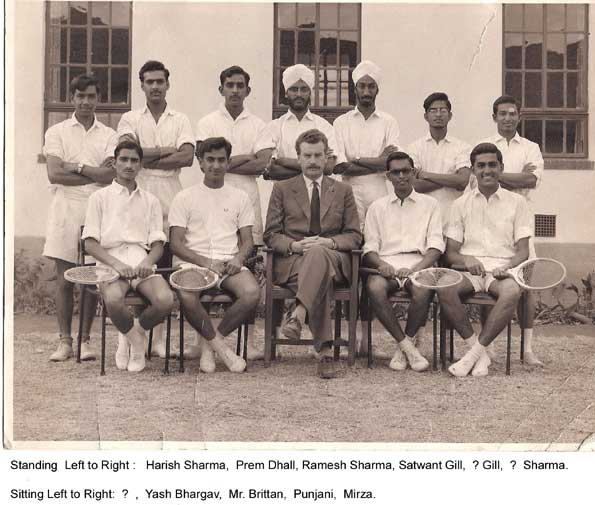
1959 Teachers Training college -Tennis group (sent by Harish Sharma (extreme left)
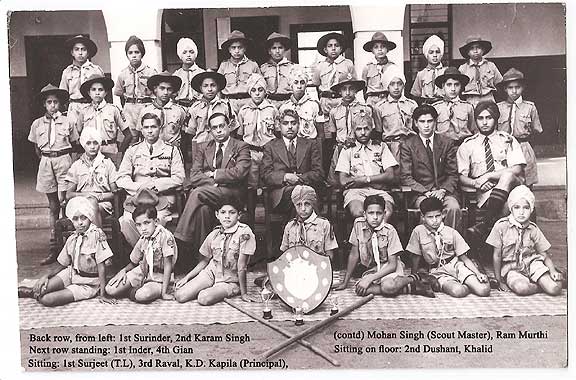
Boy Scouts of Government Asian Primary School (later called City Primary School)1950 (sent by Khalid Malik - 3rd on ground from left) 1 st on floor Tarlochan ( Tochi)
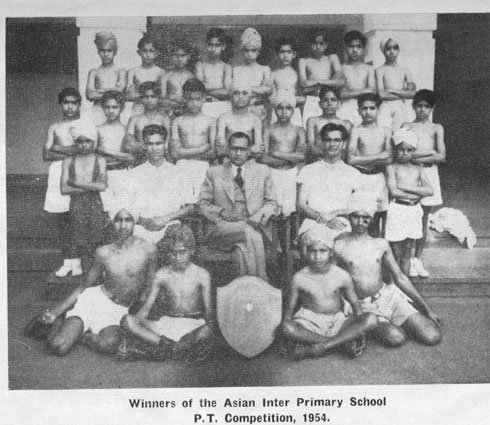
Students with Principal P.H.Patel of City Primary School, Nairobi
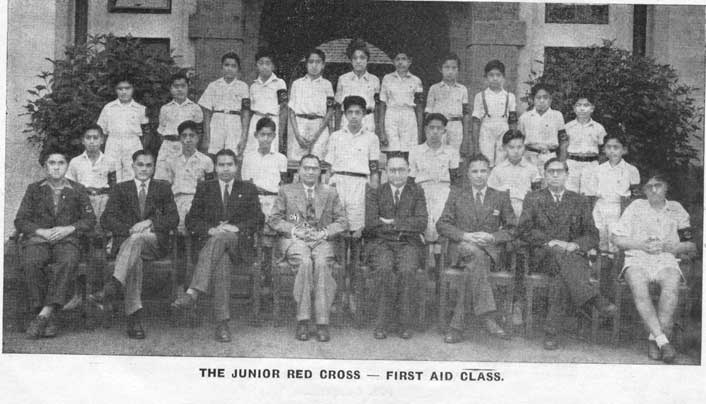
City Primary School, Nairobi 1954
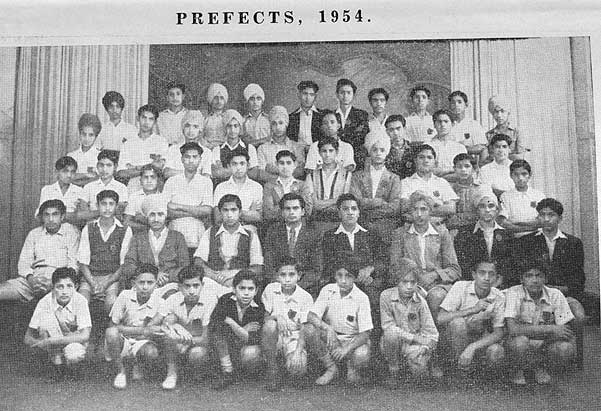
Prefects of City Primary School 1954 with teacher M.R.Sethi -1954

City Primary School (2012)
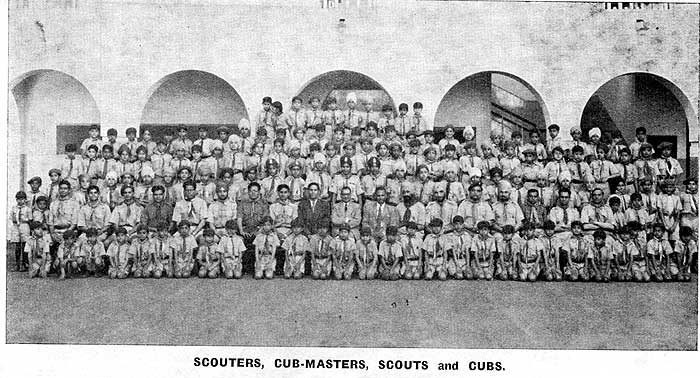
Scouts-City Primary School 1954
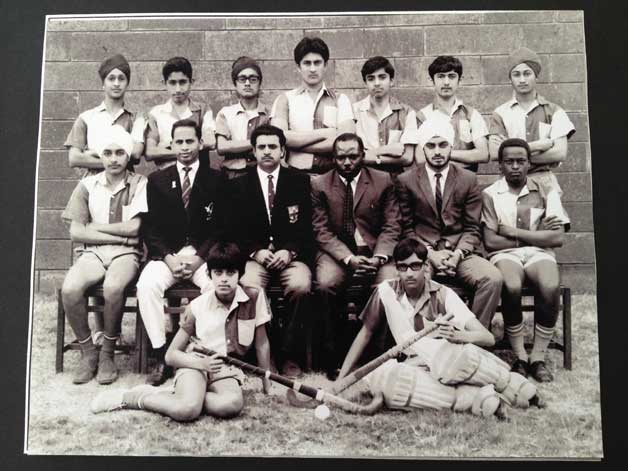
Highway Secondary School Hockey team.
Back Row, from left,1 Jatindar (DOC),3 Sajjad, 4 Rajan Bhalla, 5 Aslam, 6 Daljit,
Sitting from left 1 Gurnam Singh.2. Egbert Fernandes (Kenya Olympic Hockey Player)3. Surinder Sharma (teacher) [sent by Nandkishore Rajput] see also Blog for reunion photos
IMPORTANT EVENTS
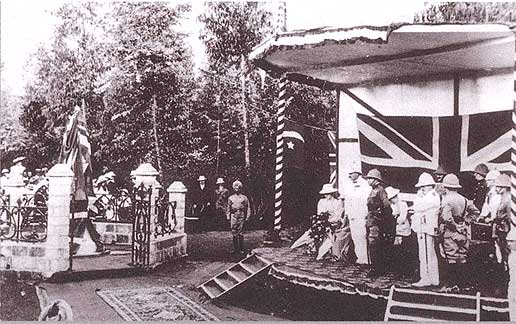
The Duke & Duchess of Connaught unveil a statue of Queen Victoria-the one presented by Mr. A.M Jeevanjee, which stood in the Jeevanjee Gardens also known as Victoria Gardens 1906. Mr. Jeevanjee, a pioneer millionaire, public benefactor in all charitable drives and first member of Municipal Committee of Nairobi. (courtesy we came in dhows)
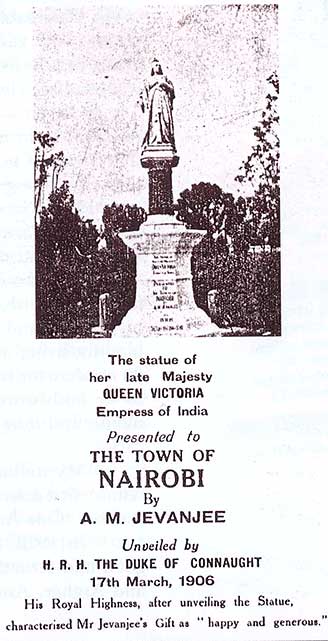
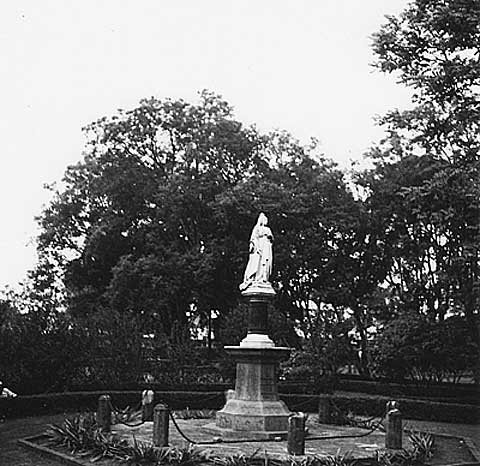
Queen Victoria graces the Victoria Gardens around 1956 (sent by Rajni Shah)
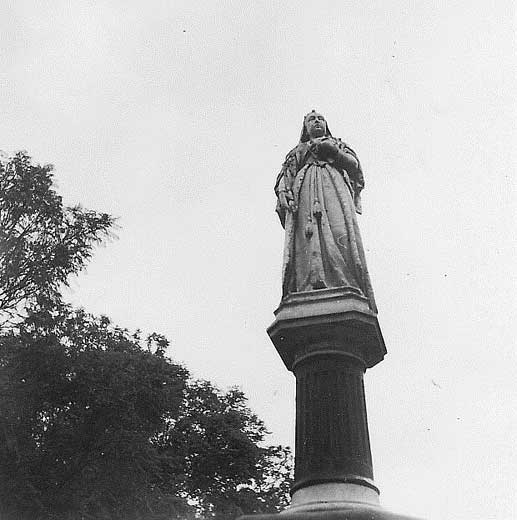
The grace of Queen Victoria 1956 (sent by Rajni Shah)
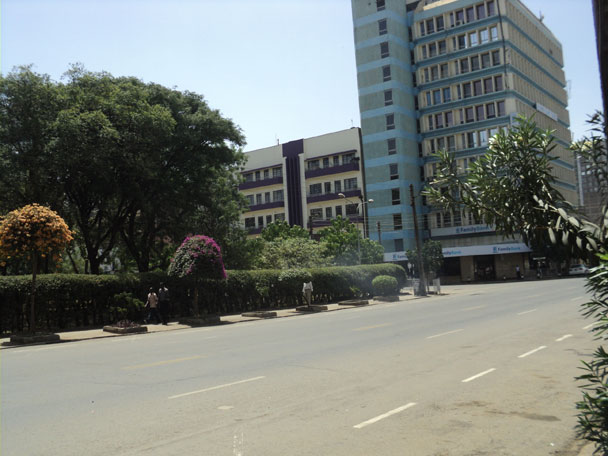
Jeevanjee Gardens or called Rani Baag (Victoria Gardens) preserved in 2012
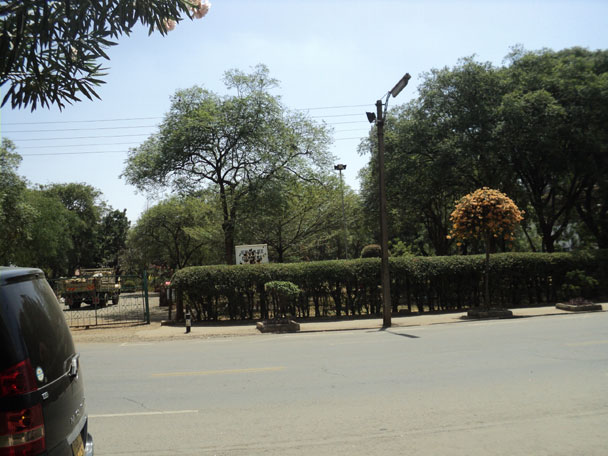
Jeevanjee Gardens (Victoria Gardens) preserved in 2012
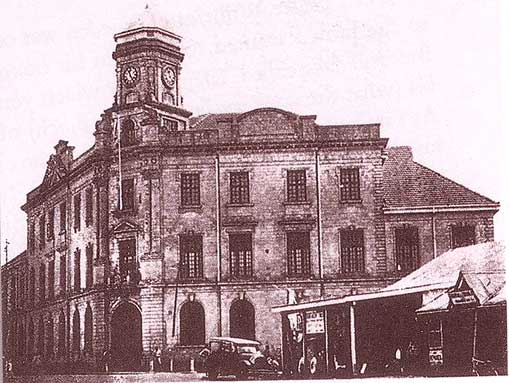
Khoja Mosque - A landmark of Nairobi- around 1920's (courtesy We came in dhows)
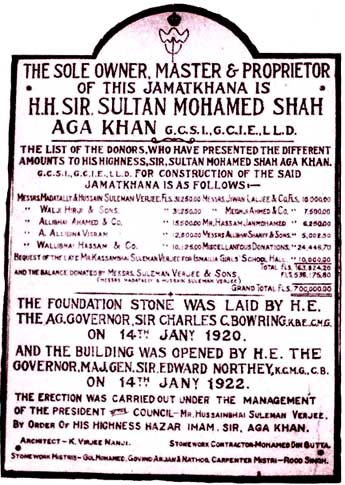
The plaque in the Khoja Mosque (Khana)
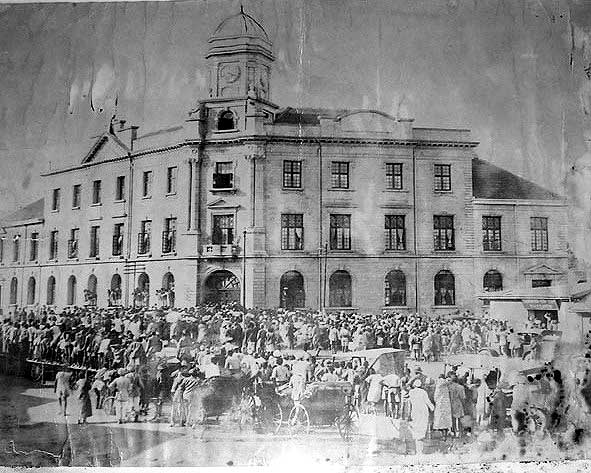
Public gathering at the Khoja Mosque 1920's (Sent by Rajni Shah)
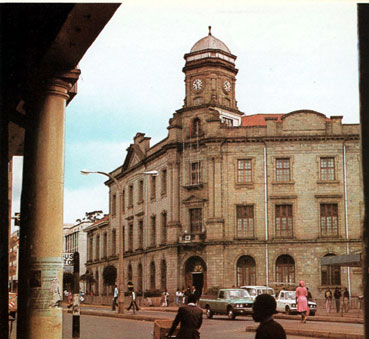
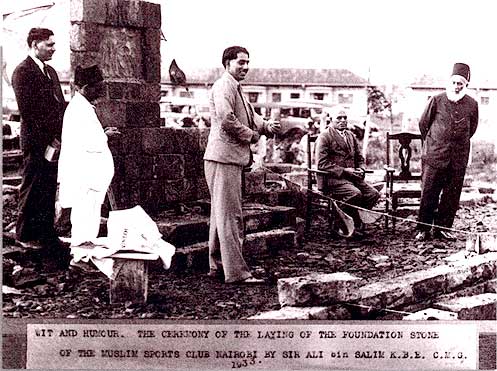
The Foundation stone laying ceremony of Sir Ali Muslim Sports Club in 1933. From Left to right: Mr. Samiullah, an Indian mason, Councillor Abdul Rehman Cocker, Abdul Wahid & Sir Ali Bin Salim (courtesy We came in dhows)
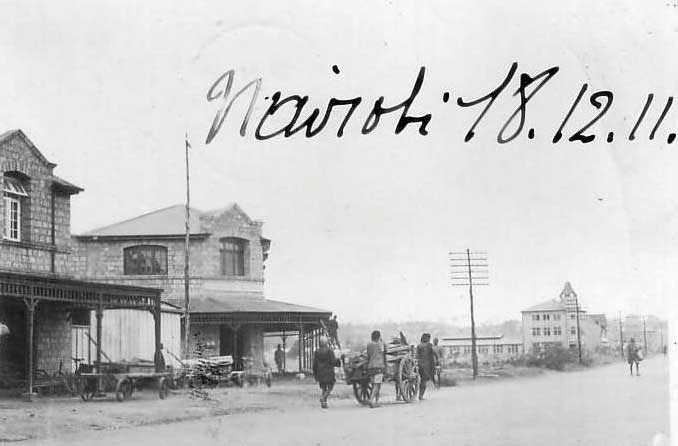
The advent of Nairobi 1911 (sent by Rajni Shah)
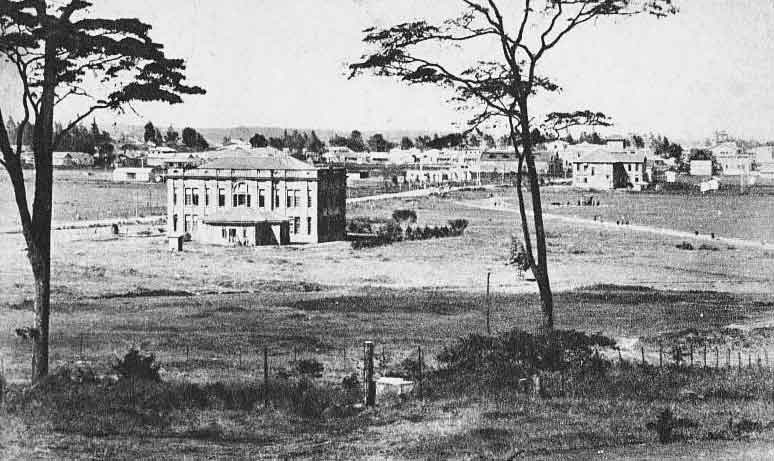
Nairobi 1912 (sent by Rajni Shah)
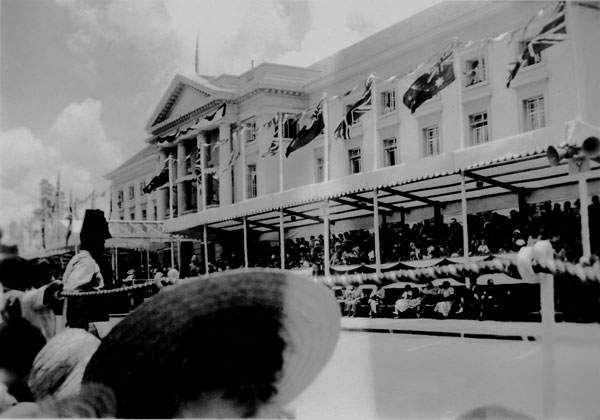
Nairobi Charter Day march 1950 (sent by Ron Bullock)
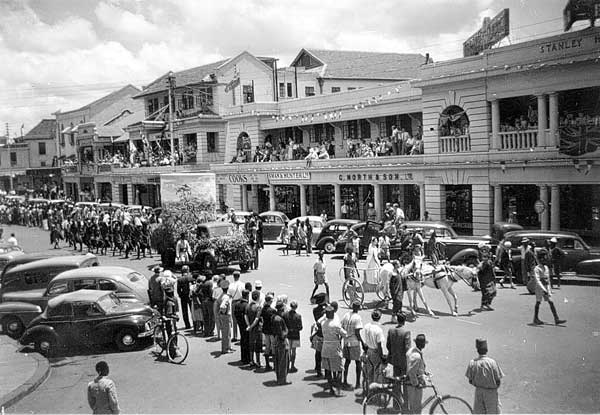
Parade on Hardinge Street 1950 (sent by Rajni Shah)
-----------------------------------------------------------------------
Princess Margaret visited East Africa in 1956 and to Welcome her to Nairobi, the various Asian Communities built gates on Government Road. Here you can see some rare photographs taken by my father and some more by different readers during that momentous occassion.(harjinder kanwal)
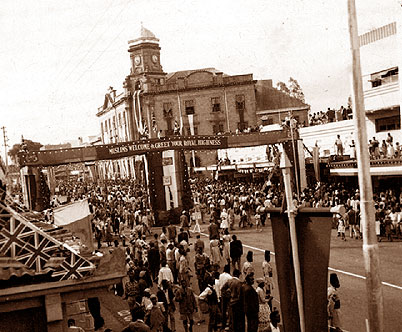
The Khoja Mosque towering above the gates constructed to bid welcome to Princess Margaret
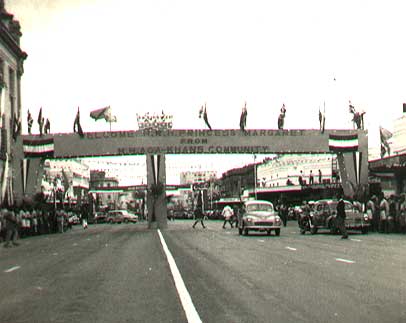
The Aga Khan Ismailia Community gate
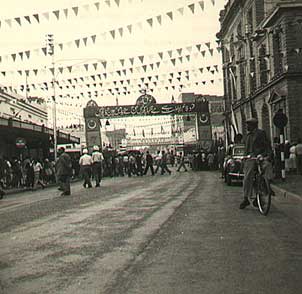
Gate by the Muslim Community
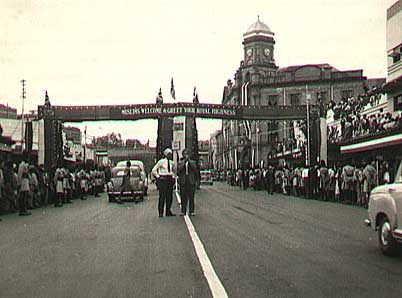
Another view of gate by Muslim community
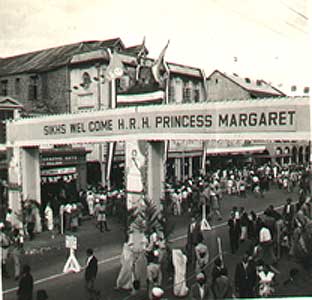
Gate by the Sikhs
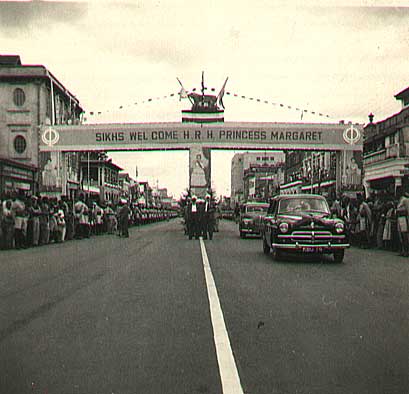
Another view of the Sikh Gate
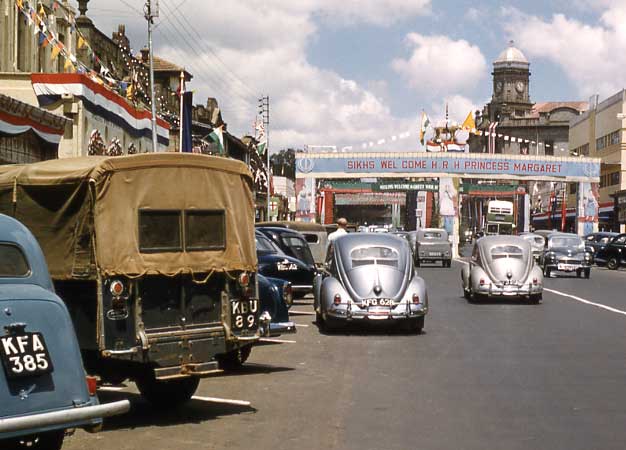
An excellent colour photo of the sikh gate sent by Ron Bullock
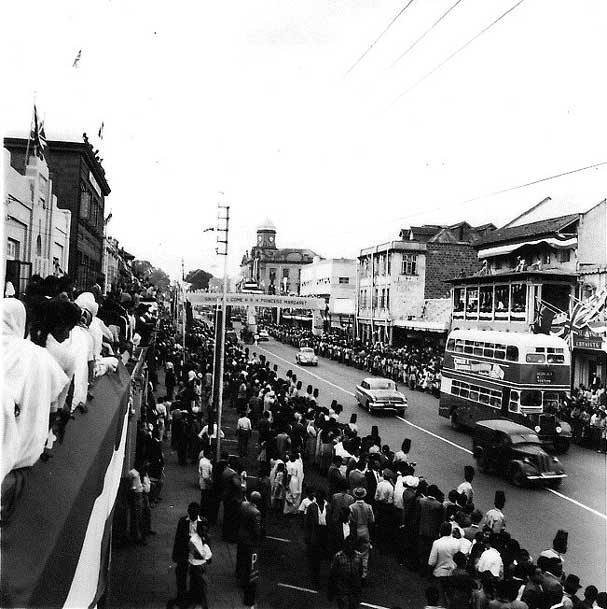
Govt. Road -Princess Margaret visit 1956 (sent by Rajni Shah)
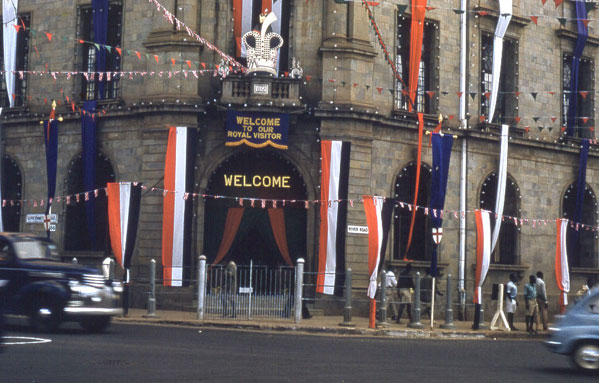
Khoja Mosque welcomes Princess Margaret (sent by Ron Bullock)
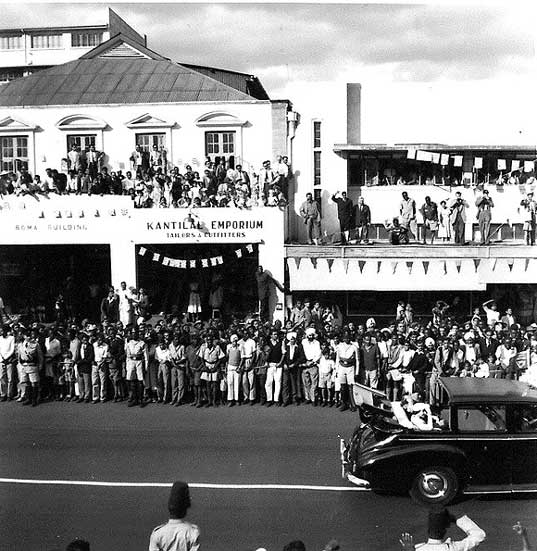
Govt. Road -Princess Margaret visit 1956 (sent by Rajni Shah)
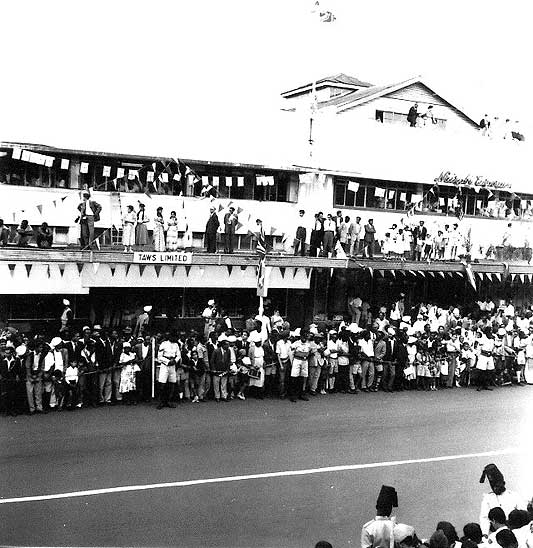
Govt. Road -Princess Margaret visit 1956 (sent by Rajni Shah)
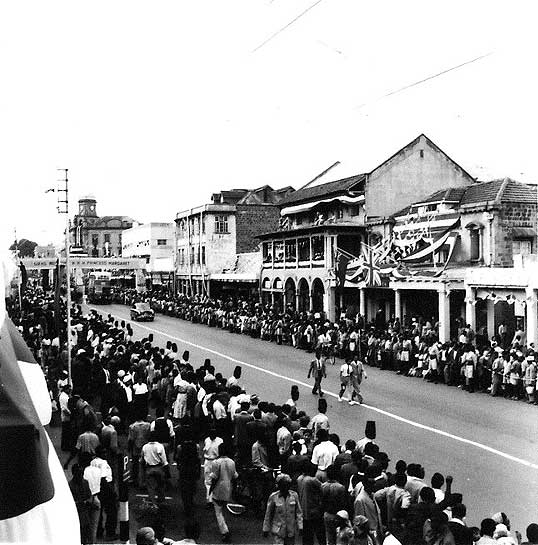
Govt. Road -Princess Margaret visit 1956 (sent by Rajni Shah)
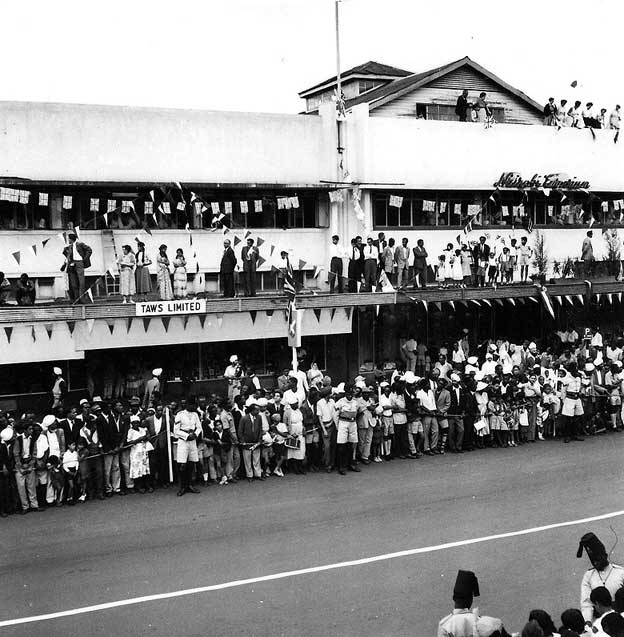
Govt. Road -Princess Margaret visit 1956 (sent by Rajni Shah)
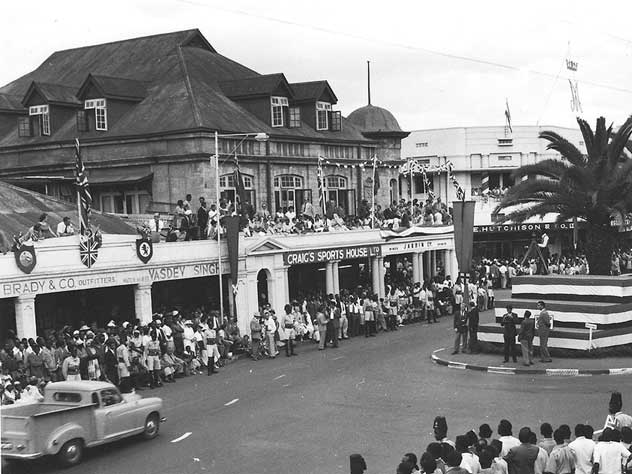
Govt. Road -Princess Margaret visit 1956 (sent by Rajni Shah)
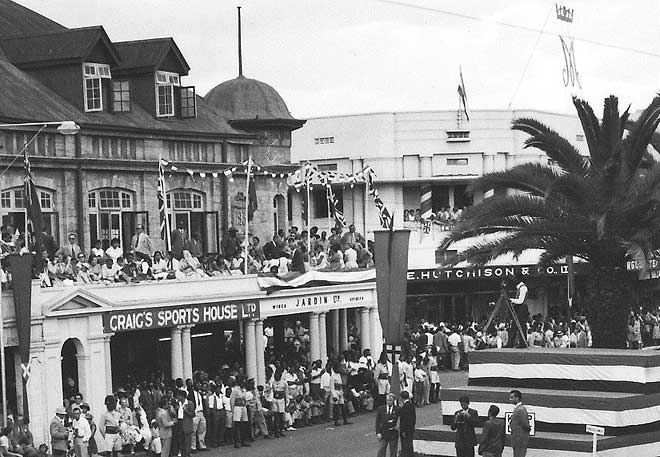
Govt. Road -Princess Margaret visit 1956 (sent by Rajni Shah)
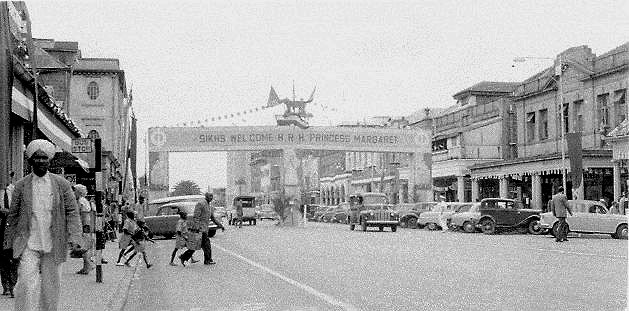
Govt. Road -Princess Margaret visit 1956 (sent by Rajni Shah)
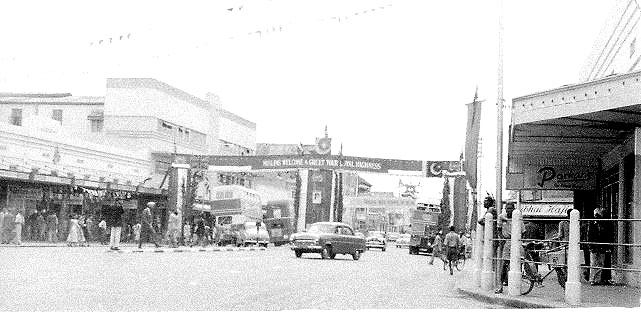
Govt. Road -Princess Margaret visit 1956 (sent by Rajni Shah)
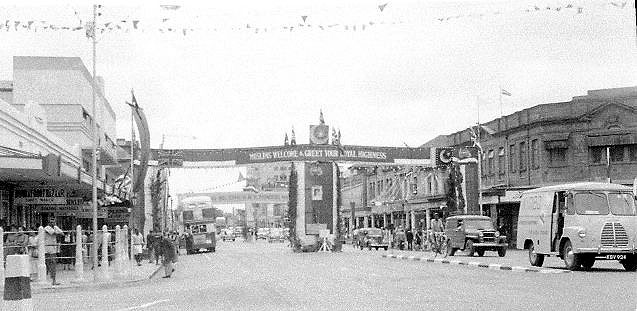
Govt. Road -Princess Margaret visit 1956 (sent by Rajni Shah)
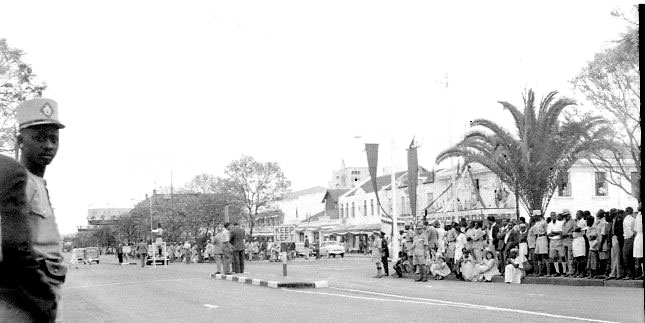
Delamere Avenue -Princess Margaret visit 1956 (sent by Rajni Shah)
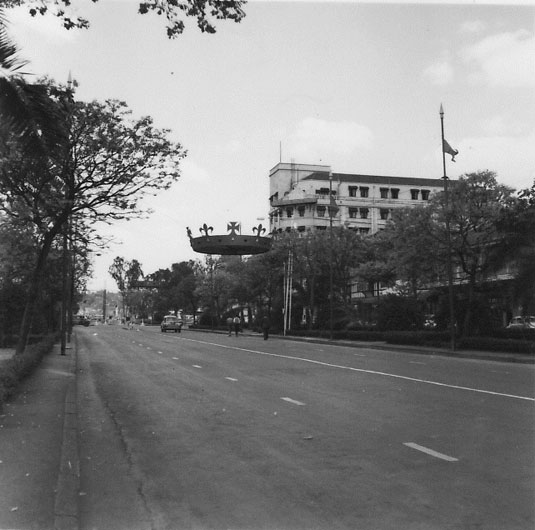
Delamere Avenue -Princess Margaret visit 1956 (sent by Rajni Shah)
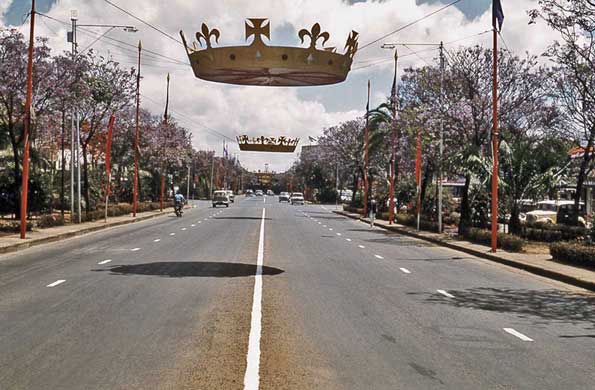
Another excellent picture of Delamere decorations sent by Ron Bullock
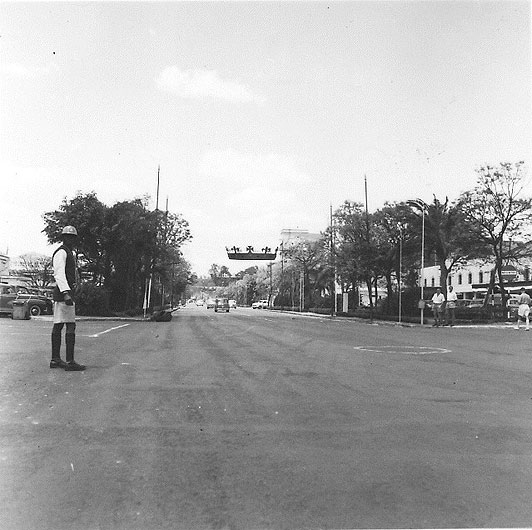
Delamere Avenue -Princess Margaret visit 1956 (sent by Rajni Shah)
The foundation of the modern day Kenyatta Avenue was laid down by one James Kerr Watson an architect and the owner of the huge Donholm Farm, which was where the estate with the same name stands today. The road was then known as 6th Avenue before its name changed to Delamere Avenue. After independence, the road was named after the President Mzee Kenyatta to the current Kenyatta Avenue.
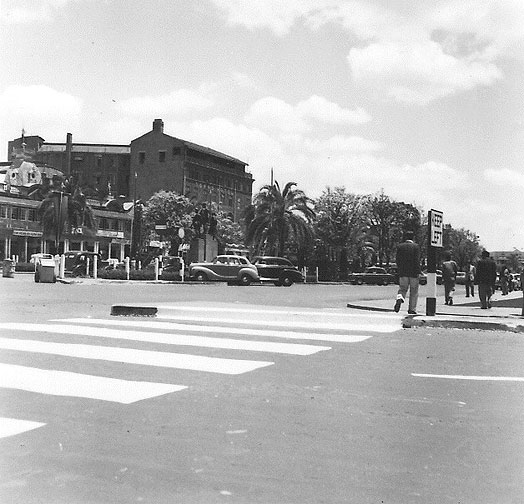
Royal Theatre, Delamere Avenue -Princess Margaret visit 1956 (sent by Rajni Shah)
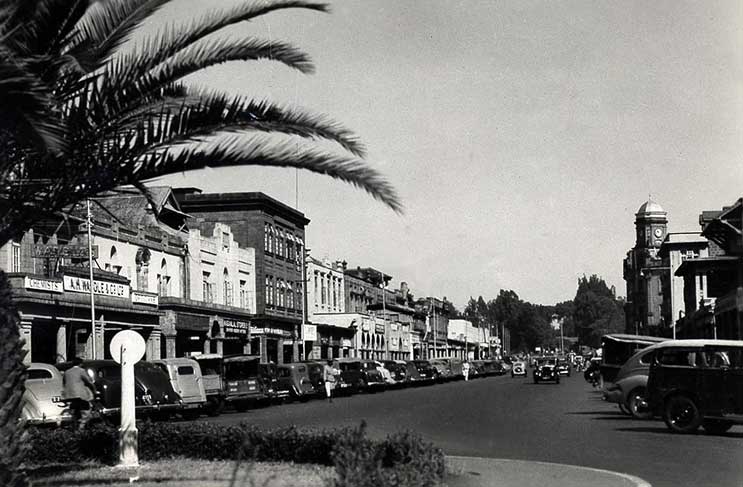
Government Road around the 50's (sent by Ron Bullock)
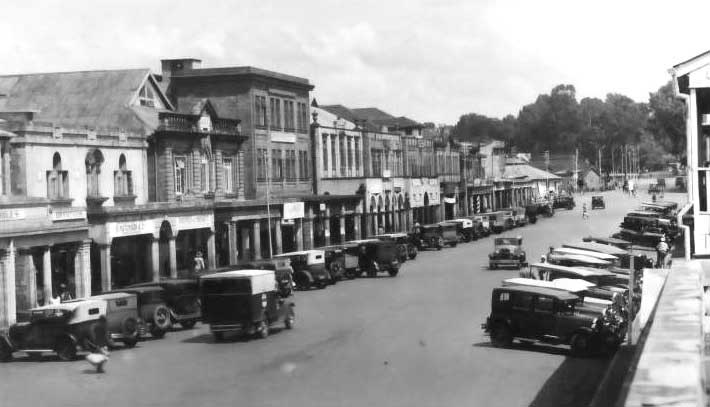
Early Government Road. (sent by Rajni Shah)
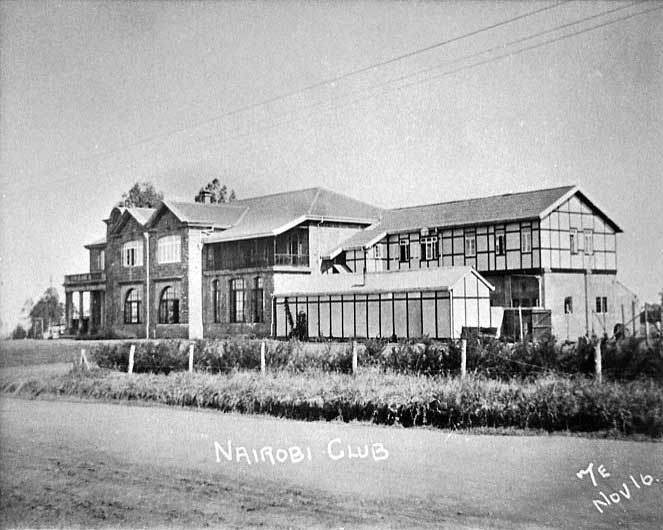
Nairobi Club 1916 (For Europeans Only)(sent by Rajni Shah)
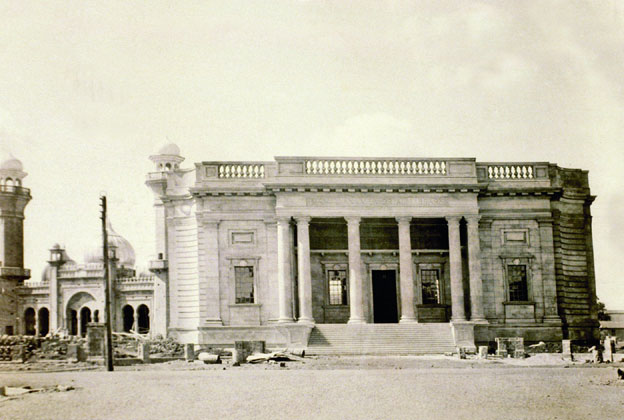
The Macmillan Library with the Jamia Mosque 40's
The McMillan Memorial Library was established as a private library in 1931 in memory of philanthropists Lord William Northrop Macmillan and wife Lucie. It was a private library from 1931 but became public in 1962
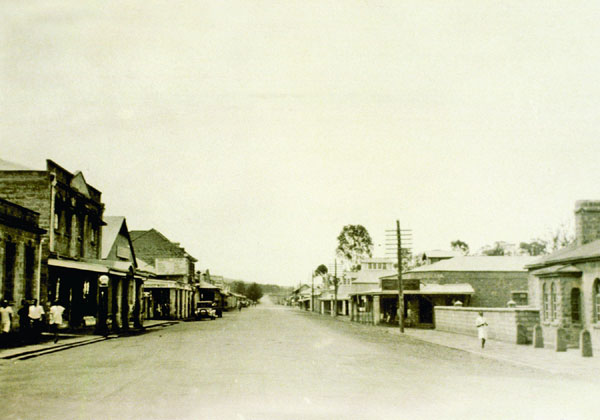
Government Road 20's
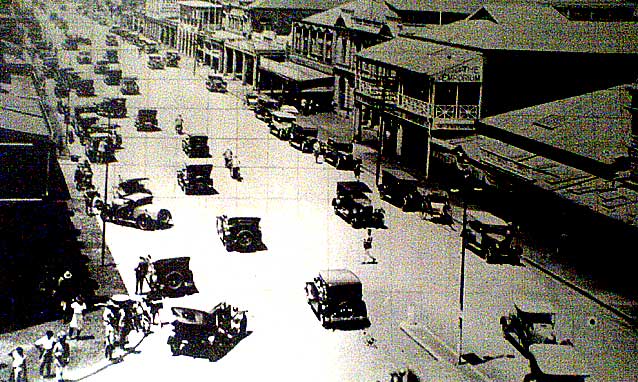
Government Road around 1930's (sent by Timothy Nganga)
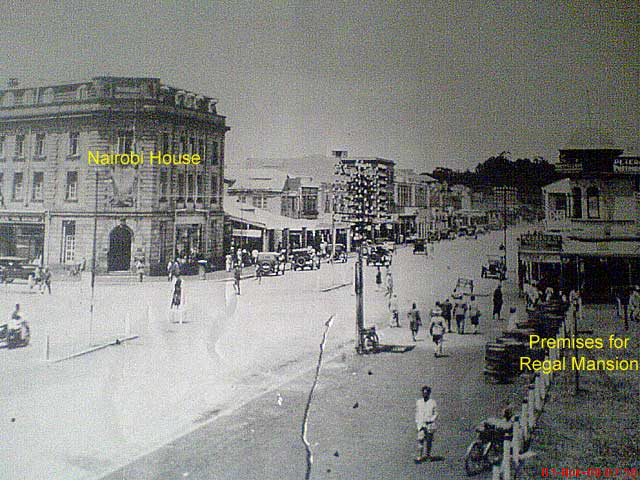
Government Road around 1930's. The Regal Mansion was built around 1936/7 (sent By Timothy Nganga)
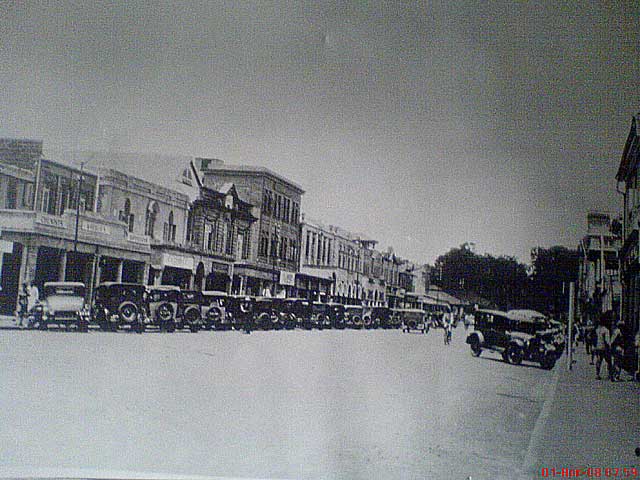
Government Road around 1930's (sent by Timothy Nganga)
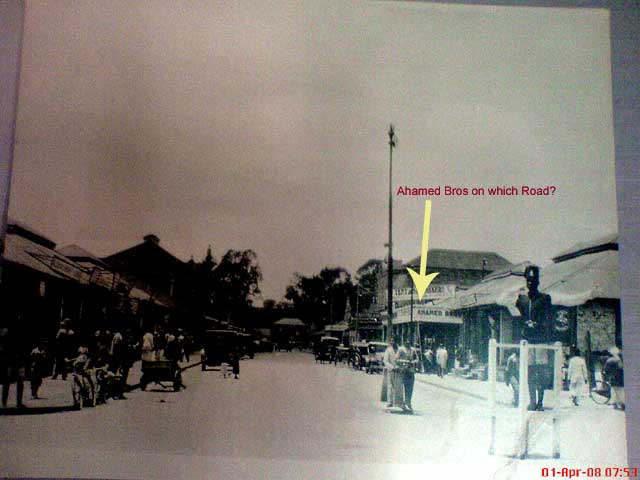
Ahamed Bros probably on Delamere Ave? around 1930's (sent by Timothy Nganga)
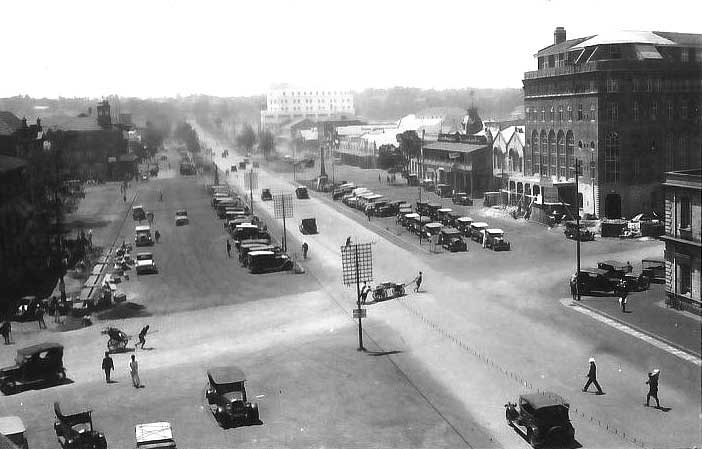
6th Avenue - later Delamere Avenue 1910-20 (sent by Rajni Shah)
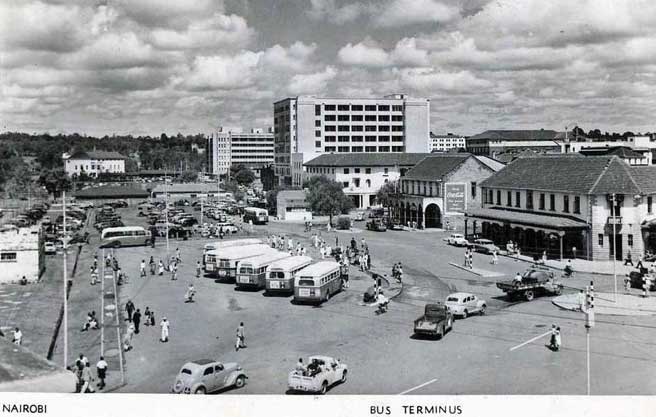
Bus Terminus opposite National Bank of India 1950 (sent by Rajni Shah)
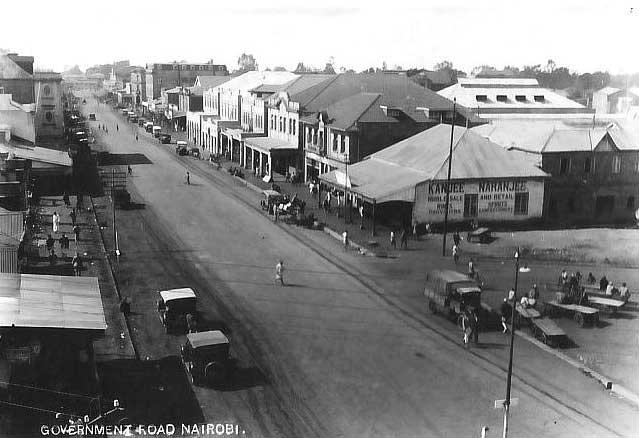
Government Road with Building of Kanjee Naranjee, which later on became Regal Mansion around 1934/5.(sent by Rajni Shah)

Early 1930's Government Road (sent by Rajni Shah)
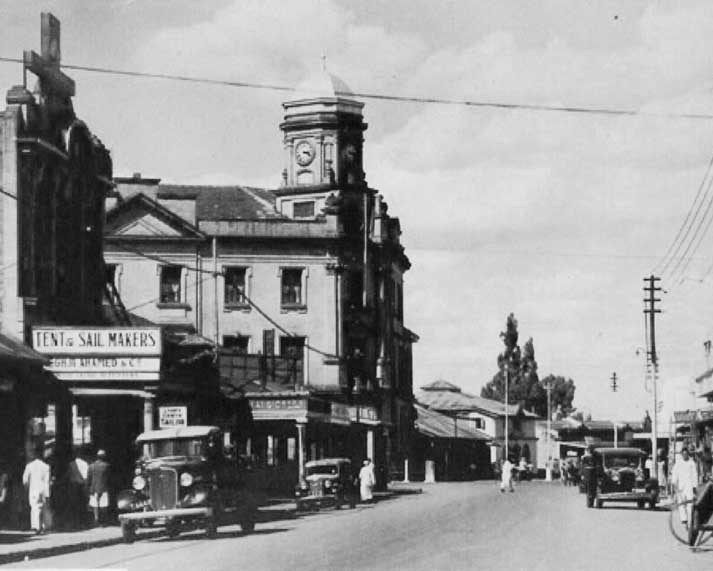
Government Road from Khoja Mosque end 1920. (sent by Rajni Shah)
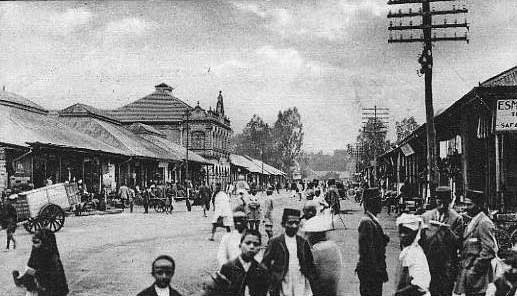
Indian Bazaar(Biashara St)early10/20s (sent by Rajni Shah)
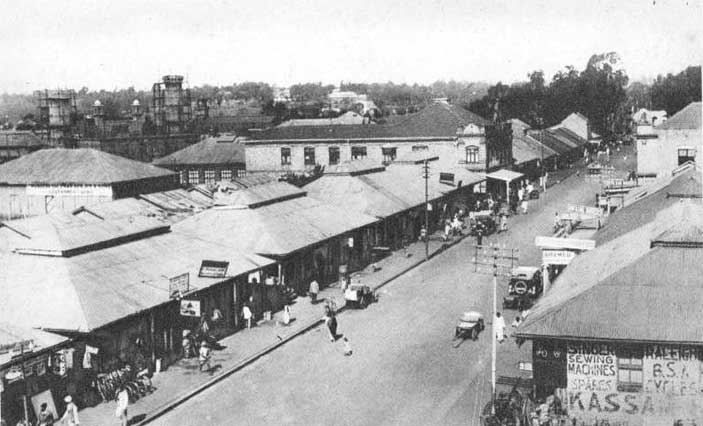
Indian Bazaar 1910 (sent by Rajni Shah)
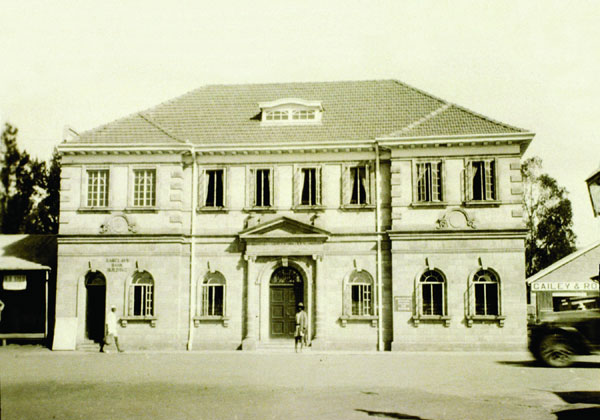
Old premises of Barclays Bank Queensway branch 20's
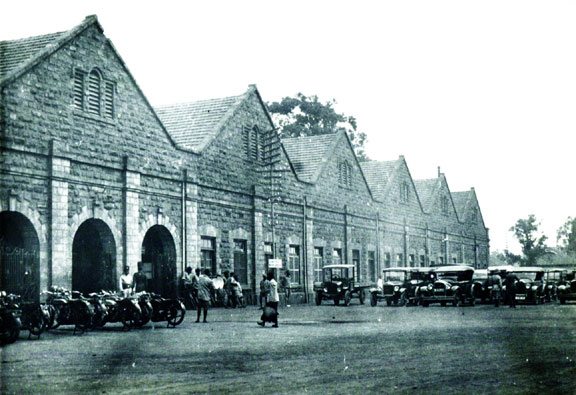
Nairobi Railway Station 20's
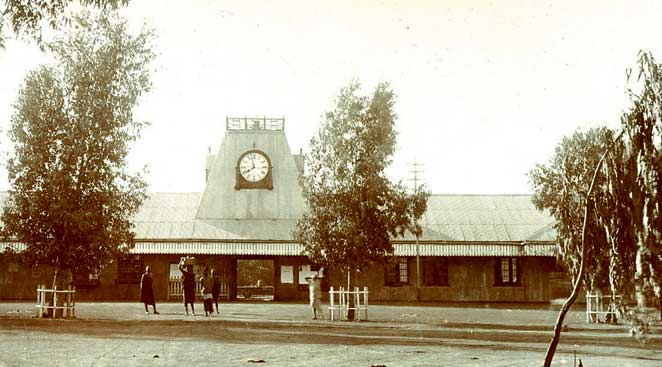
Nairobi Railway Station early 20th century
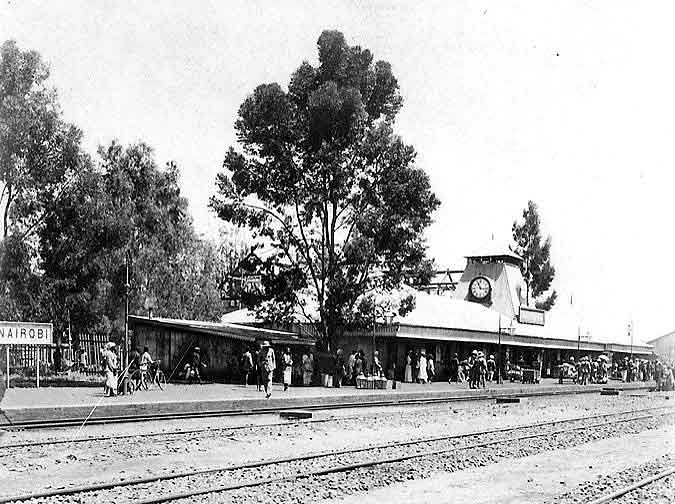
Nairobi Rail Station (sent by Rajni Shah)
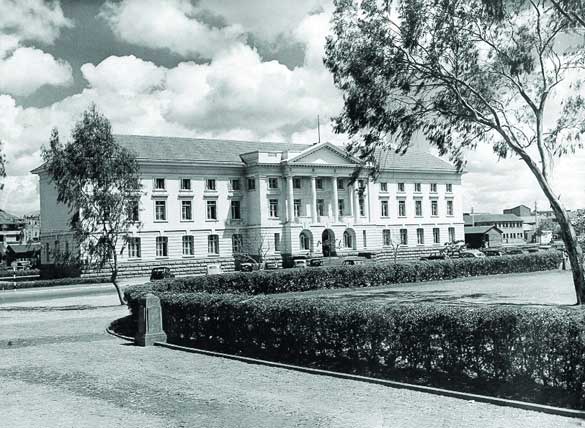
Nairobi Law Courts 1955
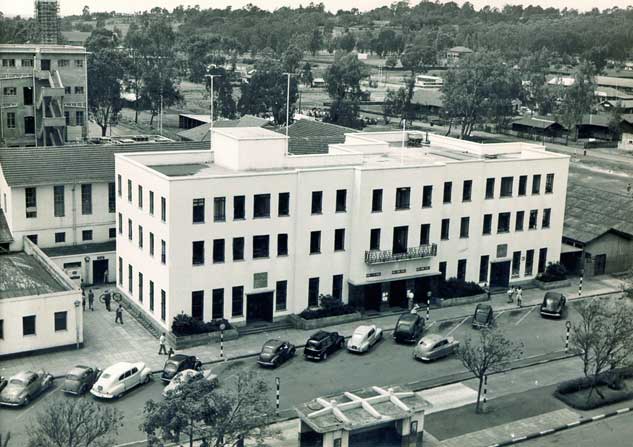
Police Head Quarters 50/60's
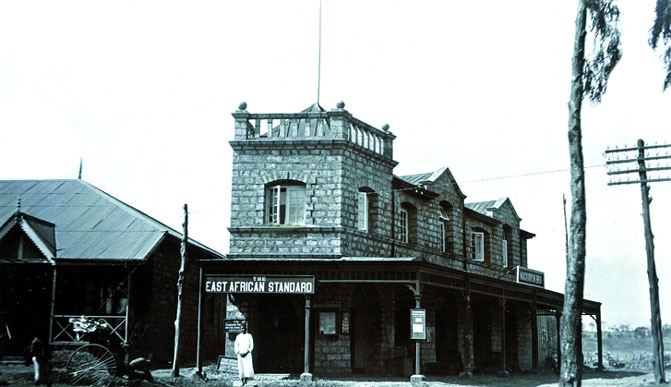
The East African Standard Building 20's
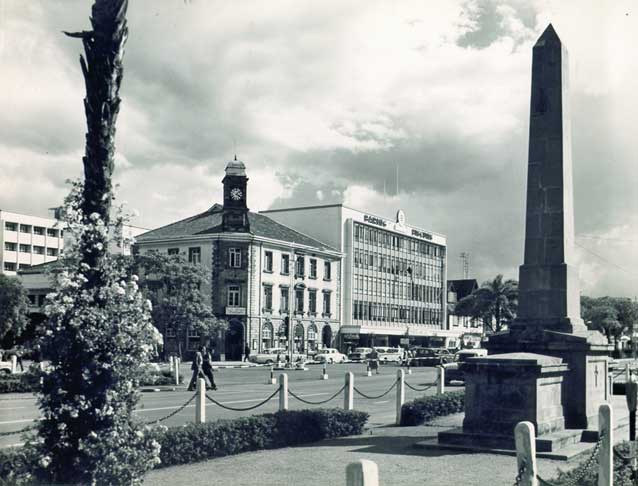
The East African Standard New Building on Delamere Avenue 60's with Baring Arcade
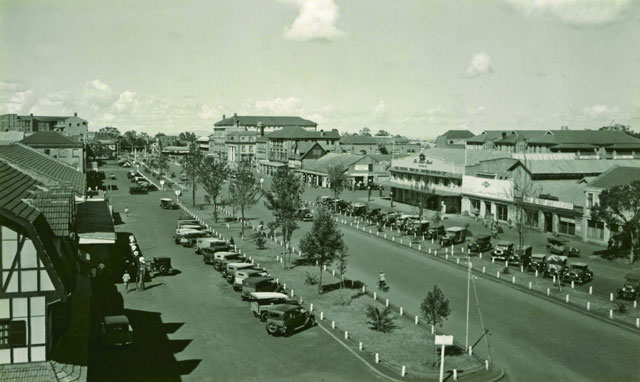
Delamere Avenue around 50's
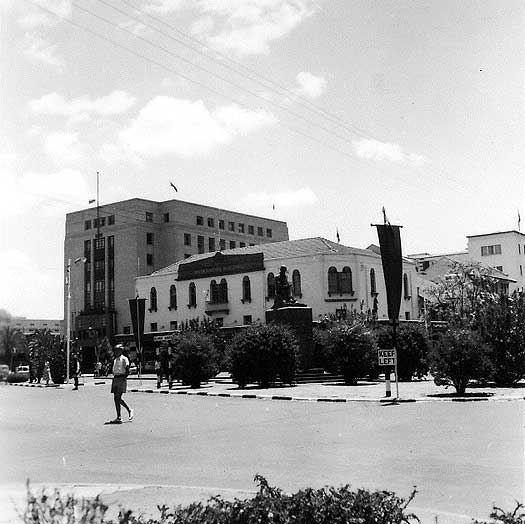
Delamere Avenue -Princess Margaret visit 1956 (sent by Rajni Shah)
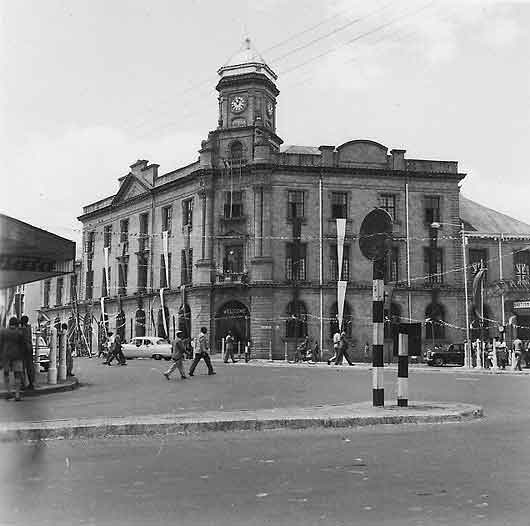
Khoja Mosque -Princess Margaret visit 1956 (sent by Rajni Shah)
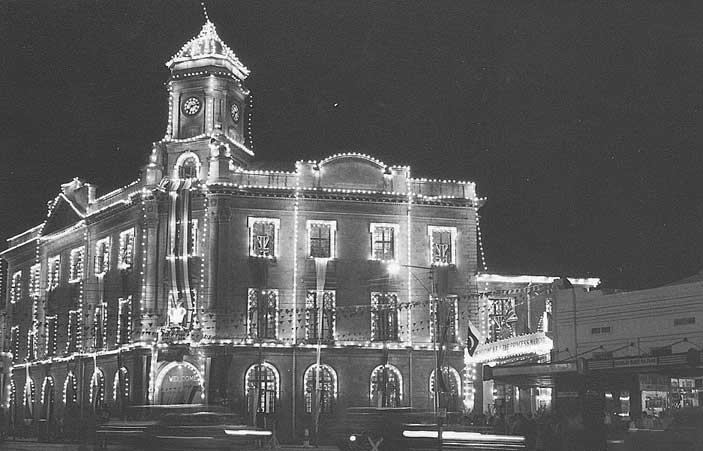
Khoja Mosque lights up -Princess Margaret visit 1956 (sent by Rajni Shah)

Barclays Bank Government Road greets the Princess
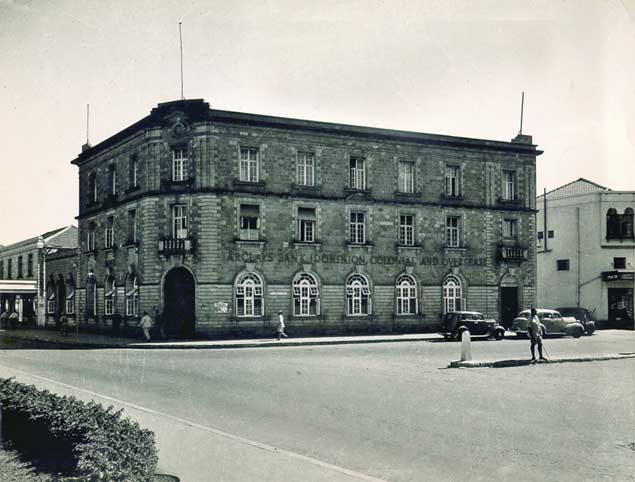
Barclays Bank Government Road Branch before the new building above this photo 50's
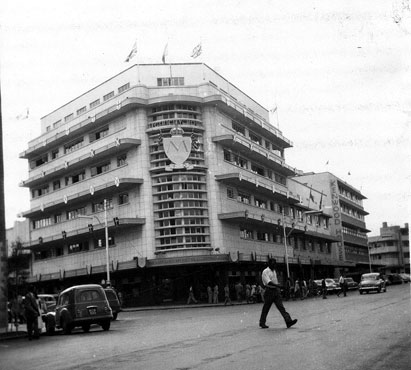
Elecricity House says welcome to Princess Margaret
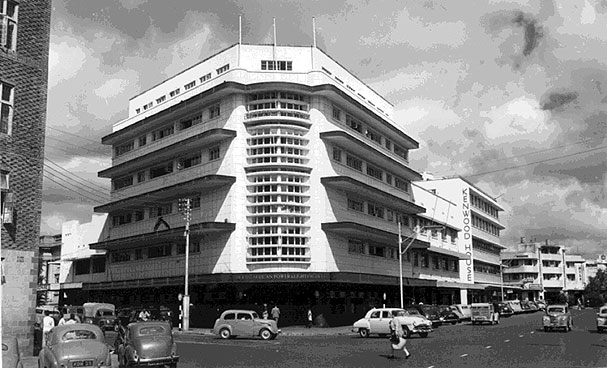
Offices of EA Power & Lighting (Electricity House - later Nanak House) on Hardinge Street around 70's (sent by Roger Dennis)
Another event Nairobi cherished was the coronation of HH the Aga Khan
CORONATION OF THE AGA KHAN -1957
The great event of the year in Nairobi, not only for the Ismaili Muslim community directly involved, but for the people of all races, was the installation of the Aga Khan. Nearly 20,000 people packed the sports ground in Limuru Road to witness the simple coronation (below) which installed the 20 year old university graduate as spiritual leader of 60,000,000 people.
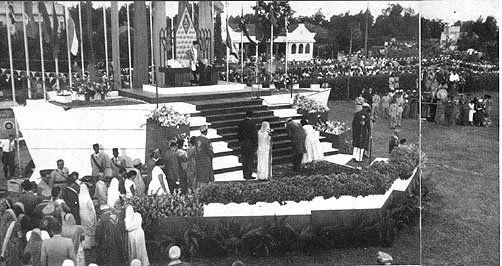
The Aga Khan's followers file past his throne
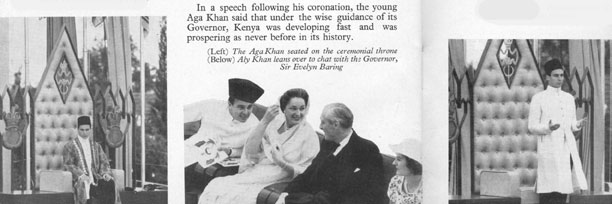
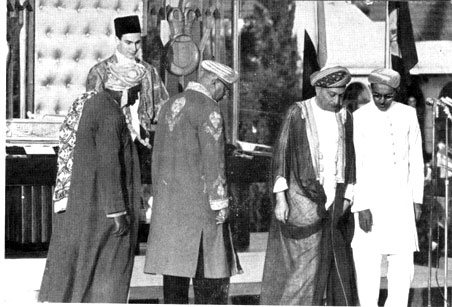
Paying homage to the new Aga Khan are non Ismailis and the distinguished gentleman 2nd from right facing the camera is Sheikh Mbarak Ali Hinawy who was the Liwali, representing the Sultan of Zanzibar in the Coast Province. He also happened to be a Rotarian and Municipal Councillor in Mombasa. He also used to preside over the annual Barazza which was held in Mombasa to celebrate the festival of Idd. In those days Idd used to be announced with the firing of a cannon outside Fort Jesus. This tradition was discontinued when the canon was found to be unsafe. Sheikh Hinawy enjoyed the same status as other Ambassadors and Consuls.(Info by Ameer Janmohammed)
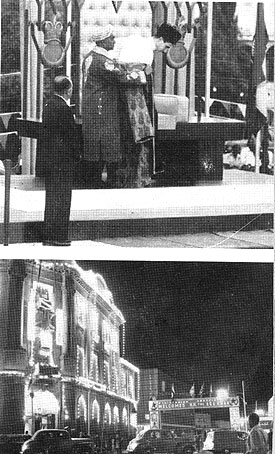
(Top) Sir Eboo Pirbhai presents H.H. the Aga Khan with his ceremonial robe. (Bottom) Illumination of the Khoja Mosque & Nairobi for the coronation festivities. (1957)
Reminiscing Nairobi
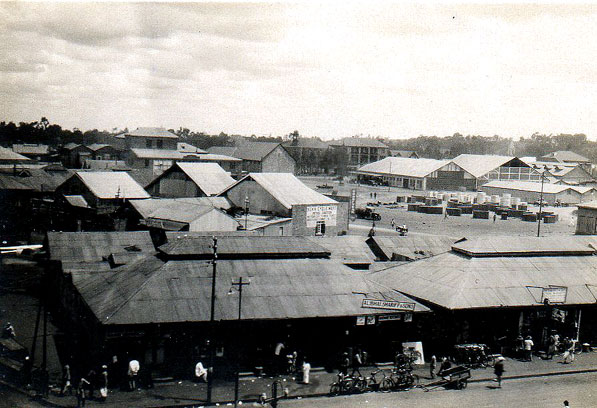
Premises of Alibhai Shariff & Sons & Kenya Cycle Mart probably on Hardinge Street around 20's (photo sent by Robin Grayson)
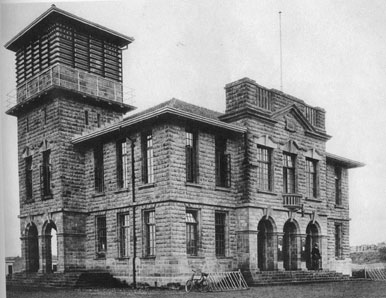
The imposing POST OFFICE was built in 1906, after fire destroyed the town's first post office in Victoria Street in 1905. (photo courtesy Nigel Pavitt)
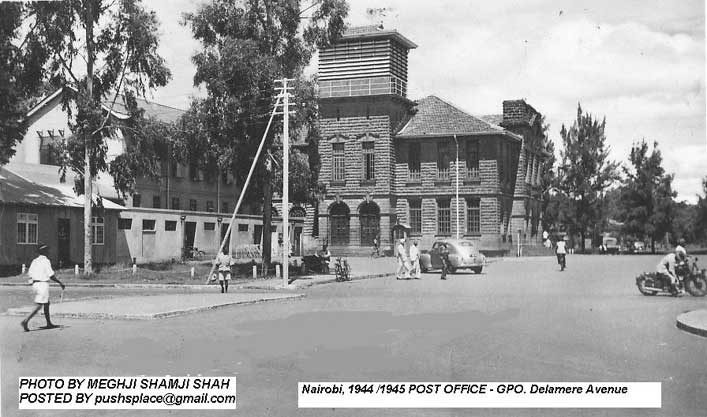
GPO (sent by Pushpendra Shah)
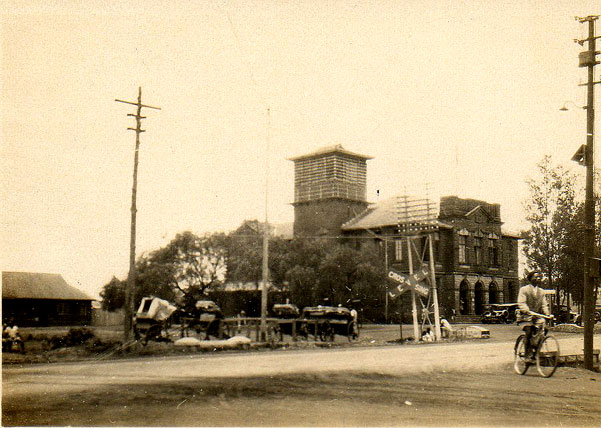
Another view of the general Post Office end of Delamere Avenue around 1920's (sent by Robin Grayson)
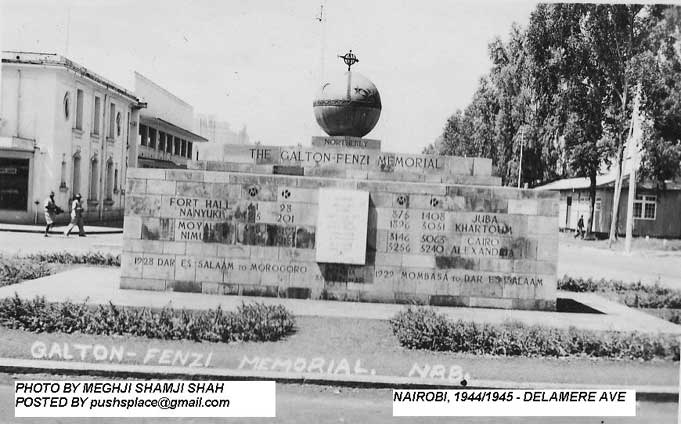
Galton Fenzi memorial (sent by Pushpendra Shah)
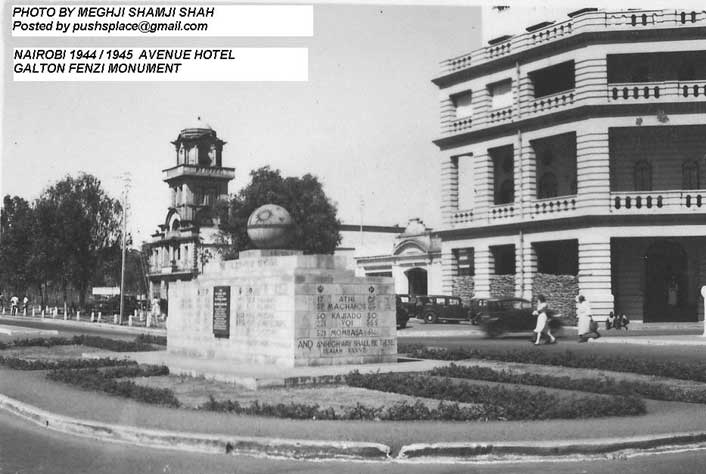
Galton Fenzi (sent by Pushpendra Shah)
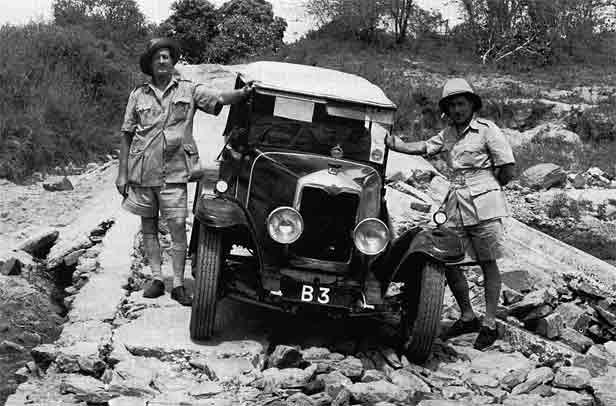
Galton Fenzi & Capt. Gethin made the first car journey from Nairobi to Mombasa in 1926.
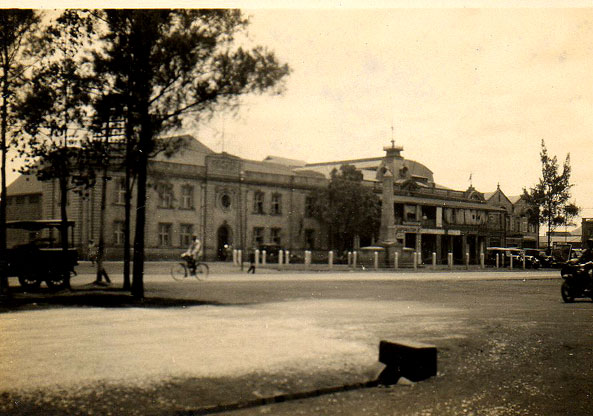
Theatre Royal (later Cameo Cinema) next to Bank of India building on left on Delamere Avenue around 1920's (sent by Robin Grayson)
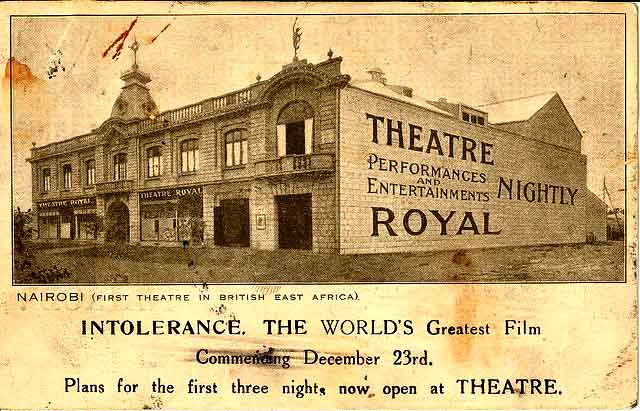
The Theatre Royal opened around 1912 (courtesy Kenya Couk)
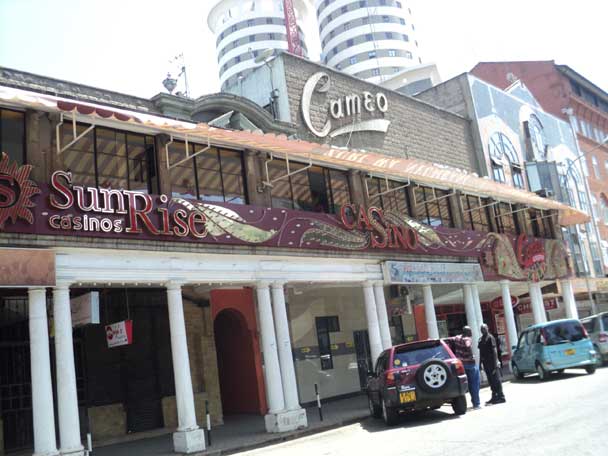
Cameo (original Theatre Royal) in 2012
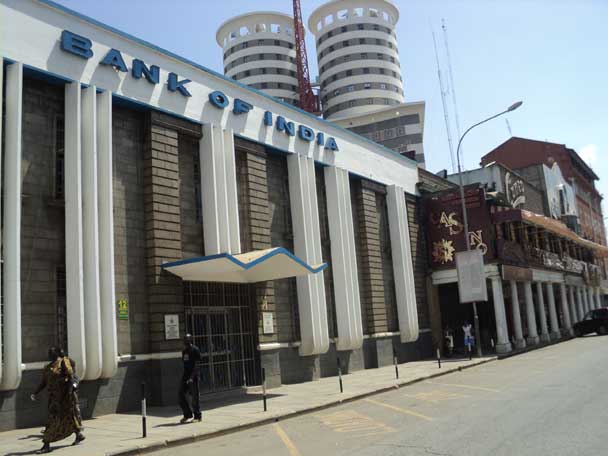
Cameo & Bank of India 2012
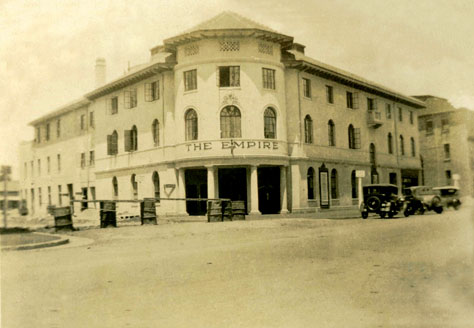
The Empire Cinema, the best cinema in Nairobi, on Hardinge Street where the IPS building stands now.
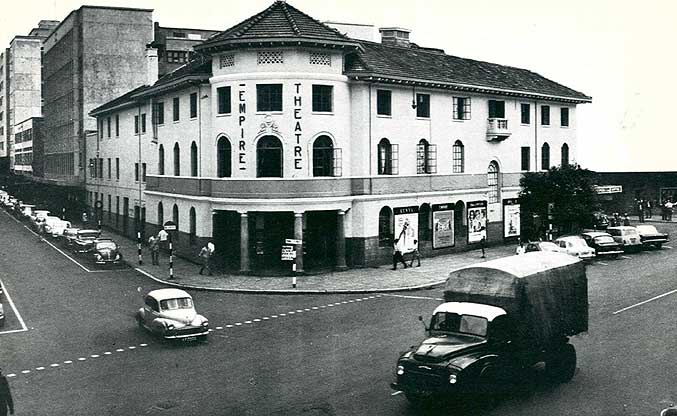
The Empire Theatre 1964. THe large posters on the right showed films being screened at Theatre Royal, Playhouse and forthcoming pictures at the Empire. (sent by Tahir Mirza)
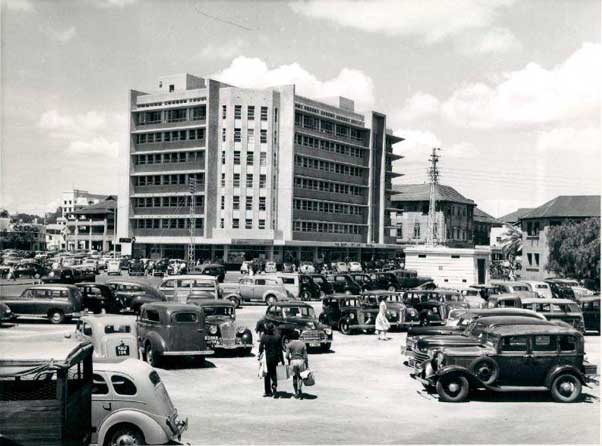
Mansion House on Elliot Street (later became Diamond Jubilee house) where Mansion House Pharmacy and Smith Mackenzie (the shipping agents) were located 1952 (sent by Pushpendra Shah)
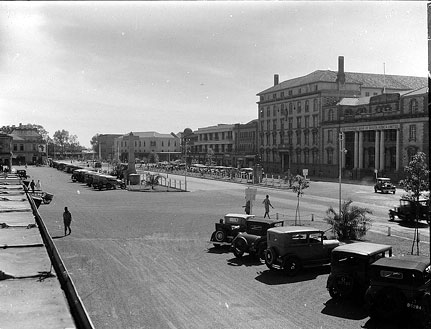
Delamere Avenue around 1940's - see Barclays Bank Govt. Rd old branch
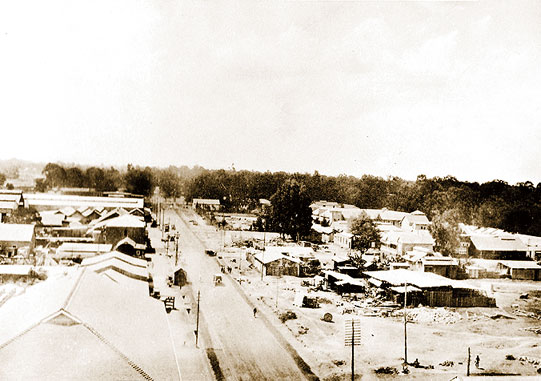
Government Road early 20th century.
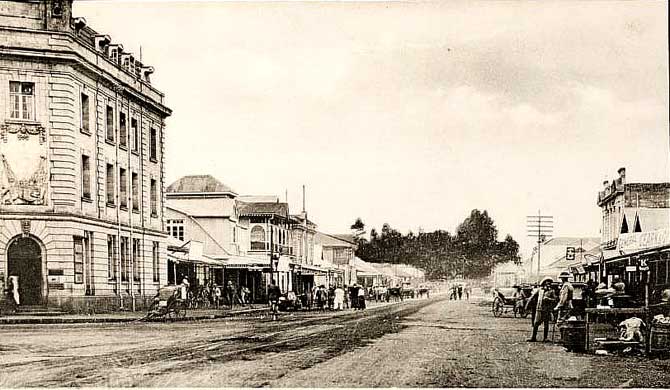
Government Road before the Khoja Mosque was built on the extreme right. The building on the left was on the corner of Delamere Avenue and Govt. Road. On the face of the building (which was Nairobi House) was a beautiful stone statuette of a lion playing with a ball (can be seen faintly). This building was just before present Ebrahim & Co. premises. On the other Delamere end it was next to Woolworths House.
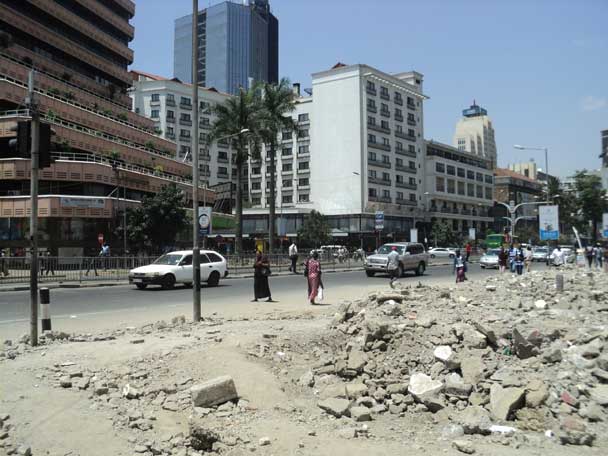
This photo taken from exact location of debris of above building looking towards the Sarova New Stanley Hotel. Photo taken during my visit March 2012 (harjinder)
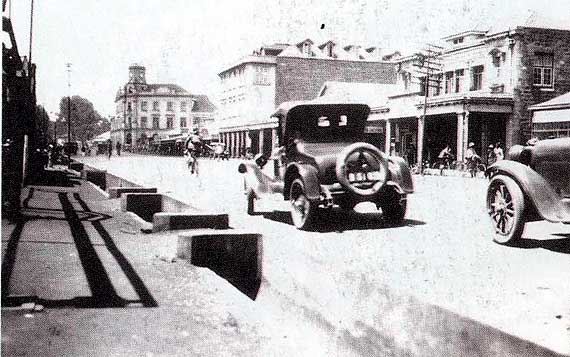
Government Road with the Khoja Mosque around 1924's (courtesy we came in dhows)
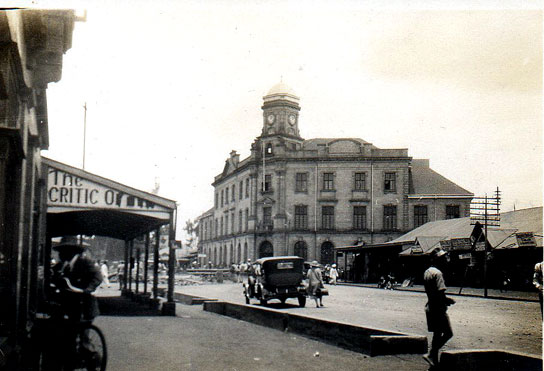
Another historic photo of the Khoja Mosque on Government Road around 1923/25 (sent by Robin Grayson)
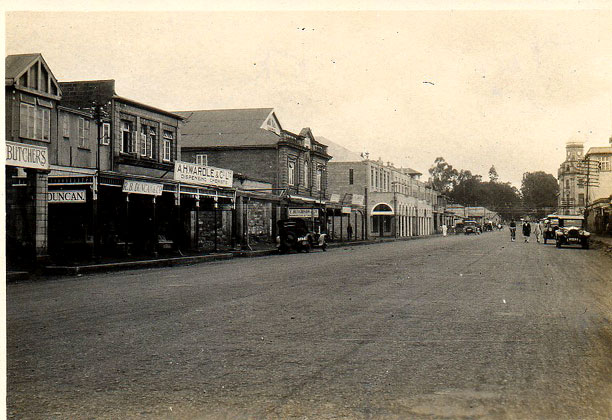
Another view of Government road around 1923/1925 with Wardles the famous chemists on left (sent by Robin Grayson)
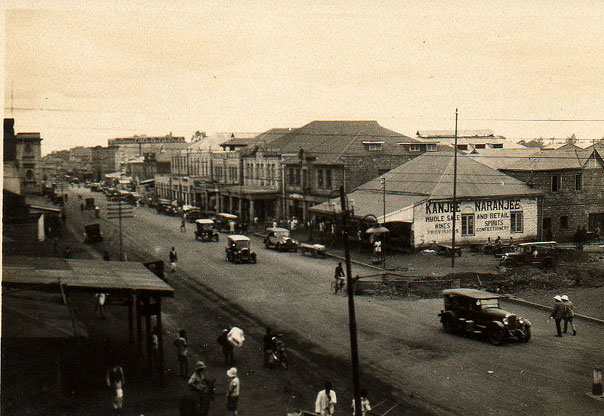
Another view of Government Road pre 1920 (sent by Robin Grayson)
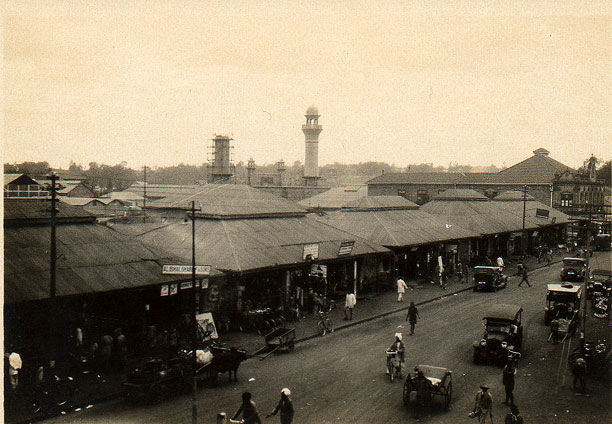
The historic Jamia Mosque being built. Photo taken probably in Hardinge Street around 1920's (sent by Robin Grayson)
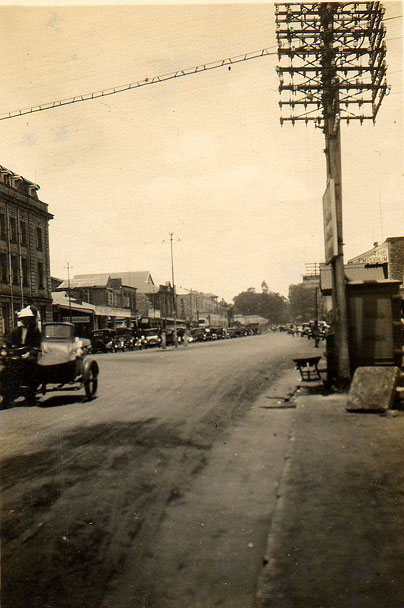
View of Government Road from old site of Regal Mansion around 1920's (sent by Robin Grayson)
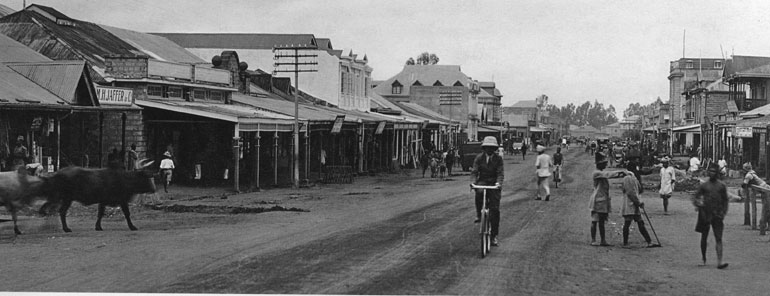
Governmment Road looking in the direction of the railway station 1913 (photo courtesy Nigel Pavitt)
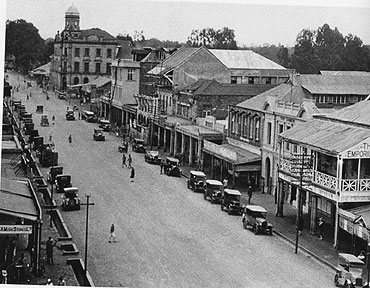
Government Road in 1927 (photo courtesy Nigel Pavitt)
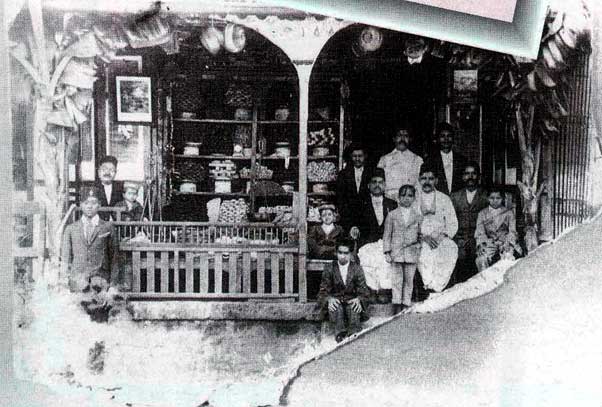
A Mithai shop decorated during Diwali 1926. The owner Lala Parsad on extreme left. Lala Parsad also built the first hindu temple in Indian Bazaar. (Courtesy We came in Dhows)
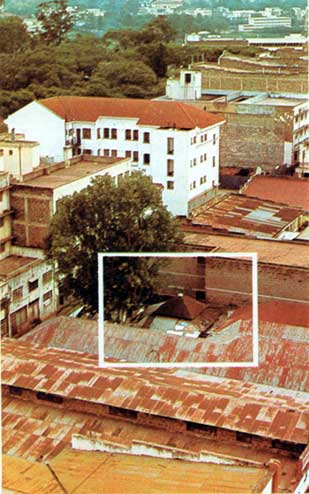
Lala Parsad's temple in Indian Bazaar (courtesy through open doors)
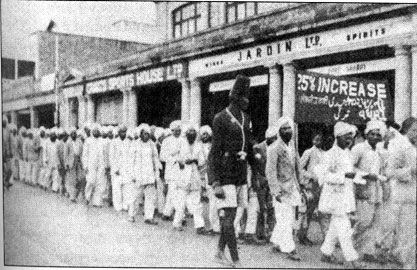
Workers procession 1937 on Government Road -see Craig's Sports House & Jardin Ltd. (courtesy Unquiet-Life of Makhan Singh)

One of the first Taxi service in Nairobi 1930's (photo courtesy Nigel Pavitt)
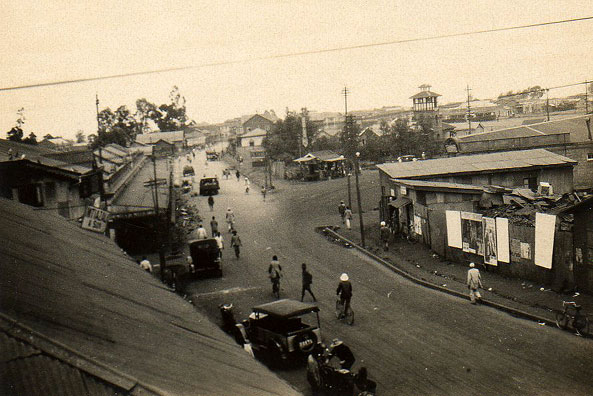
An unknown street in Nairobi around 1920's (sent by Robin Grayson)

This plane was one of three DH 51's built in 1925 in UK. It was shipped out to John Carberry in Mombasa in 1926 first flew in Nairobi on 4th April 1926 after flying in it in1929 Florence Kerr Wilson bought it named it Miss Kenya formed Wilson Airways hence Wilson Airport.

See info above and below (sent by Robin Grayson)
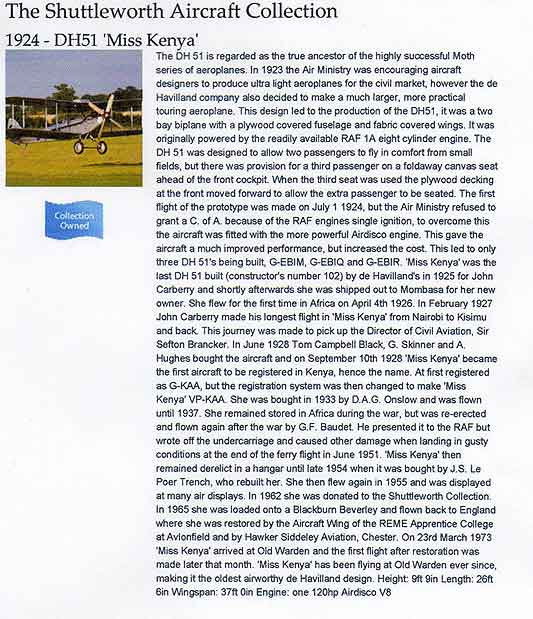
(Sent by Robin Grayson)
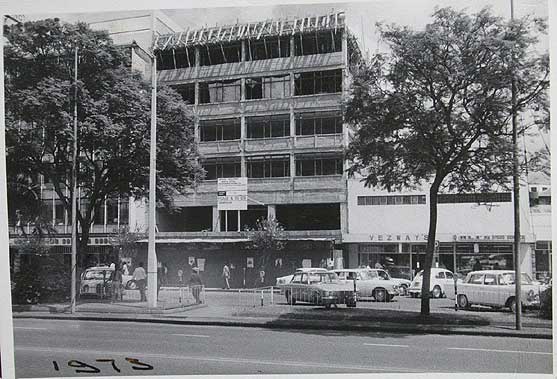
The building of Phoenix House on Delamere Avenue (Kenyatta Ave) built by Mr. Bhari, foreman of Foale & Co. 1973 (courtesy G.Bhari)
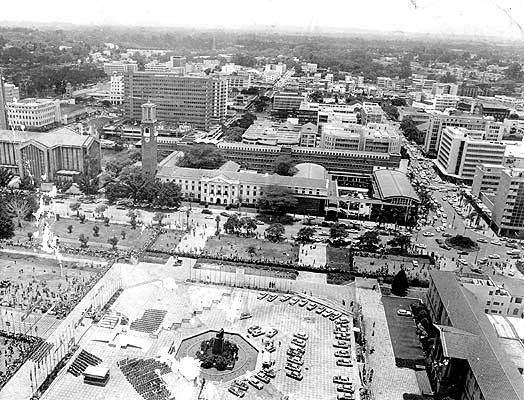
An ariel view of Nairobi 70's (sent by Roger Dennis)
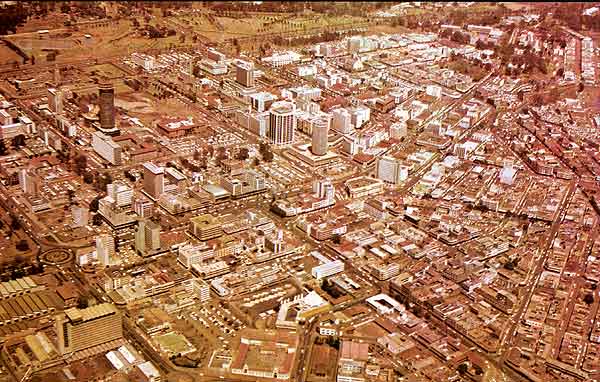
Another ariel view of Nairobi 70's (sent by Roger Dennis)
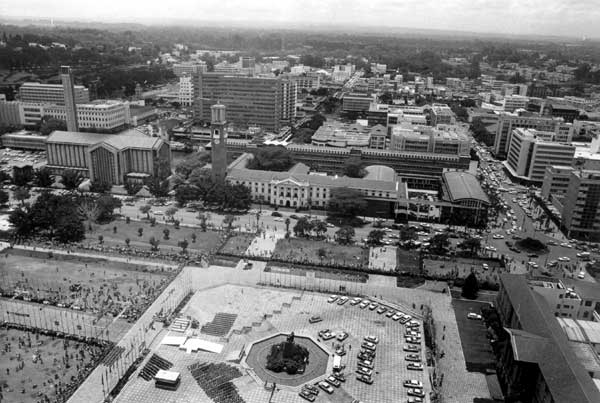
Start of EA Safari Rally - ariel view (sent by Roger Dennis)
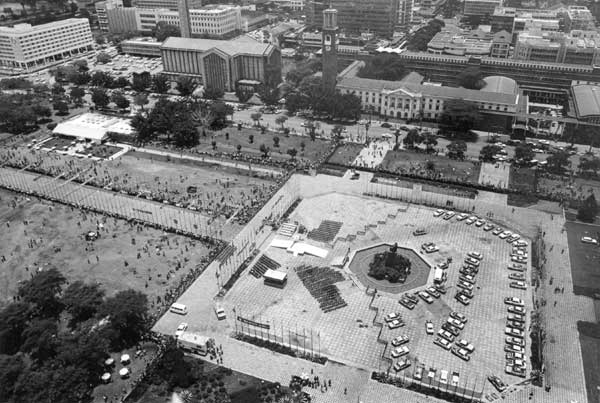
Another view of the start of Safarai Rally (sent by Roger Dennis)
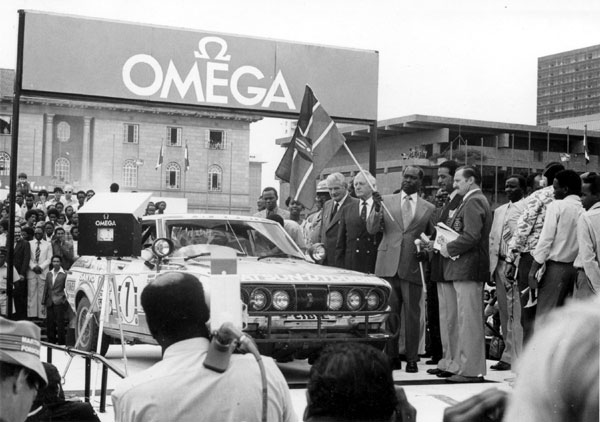
President Daniel Arap Moi flagging away cars during the Safari Rally (sent by Roger Dennis)
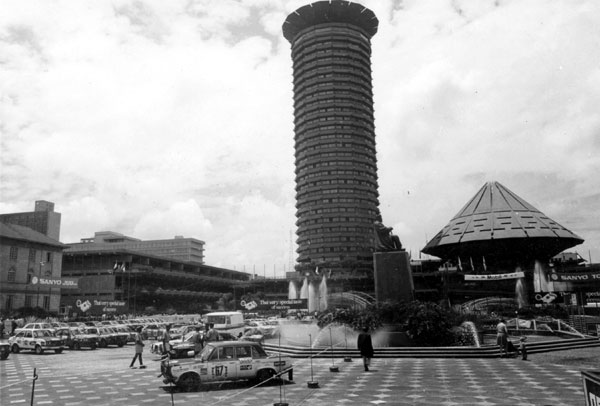
Start of Safari Rally from Kenyatta Conference centre (sent by Roger Dennis)
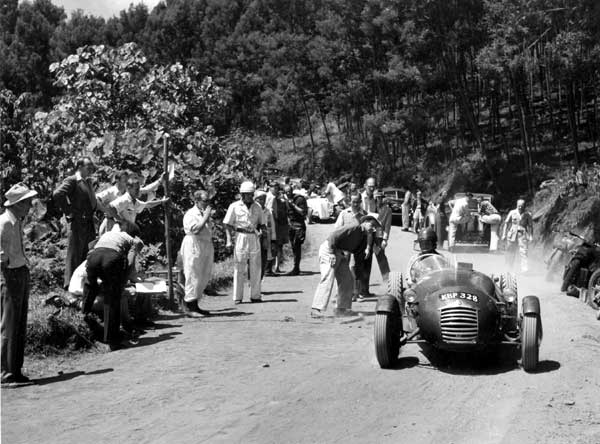
Racing Cars on Brackenhurst Hill (near Limuru) (sent by Roger Dennis)
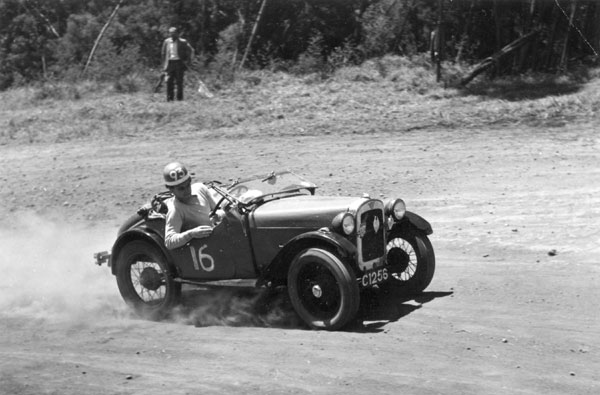
Racing Cars on Brackenhurst Hill (near Limuru) (sent by Roger Dennis)
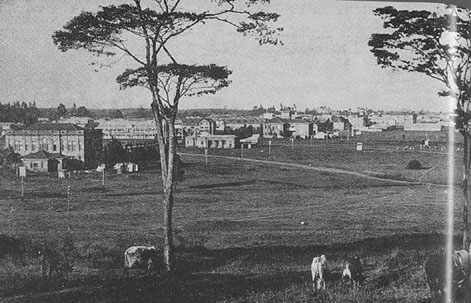
Nairobi in 1917 - called the 'home of frogs' - Macmillan Library probably in the middle.
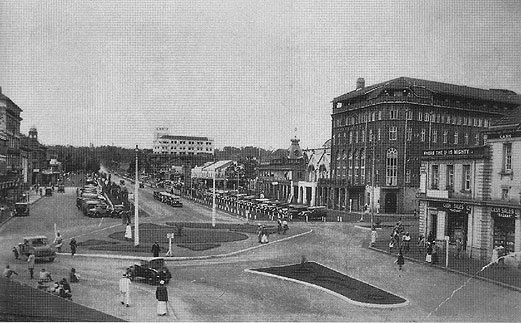
Torr's Hotel -1926 owned by General Grogan -sold to (Turkish) Ottoman Bank in 1956 for £250,000. This bank was nationalised in 1972 and named Grindlays International Ltd. Extreme right is the Woolworths building and next to Torr's is the Theatre Royal (bulding still intact) -later Cameo Cinema. (photo courtesy Lost Lion of Empire)
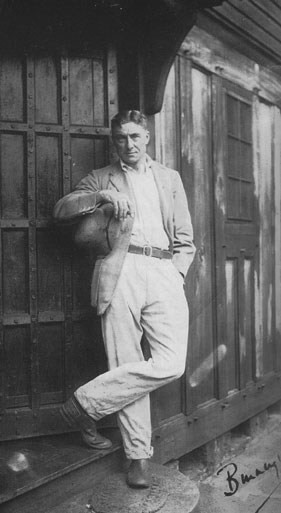
General Grogan called also Bwana Chui - one of the first pioneers of East Africa and owner of Torr's Hotel. Grogan Road was named after him. (courtesy Lost Lion of Empire)
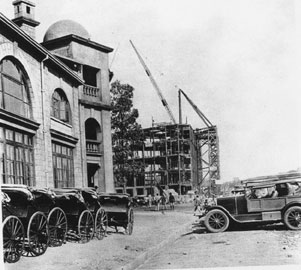
Torr's Hotel under construction when picture of the Stanley was taken in 1927 (photo courtesy Nigel Pavitt)

Torr's Hotel opened to the public in 1928 (photo courtesy Nigel Pavitt)
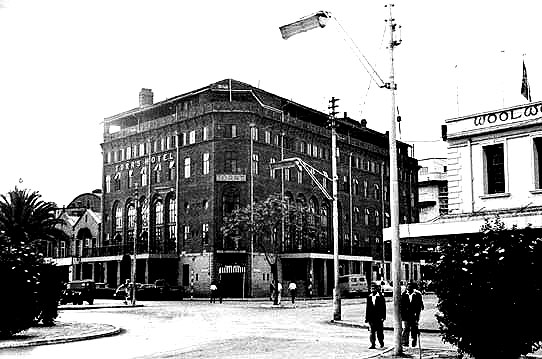
Torrs Hotel with Woolworths on right around 1959 (sent by Harsh Maroo)
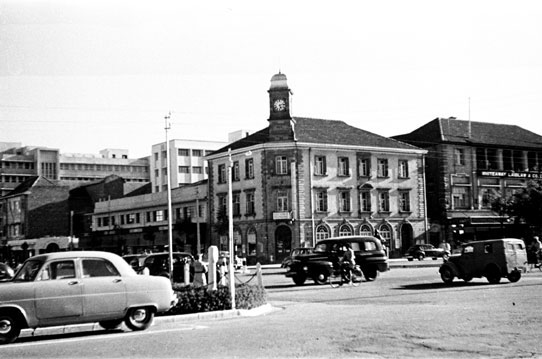
East African Standard Building on Delamere Avenue around 1959 (sent by Harsh Maroo)
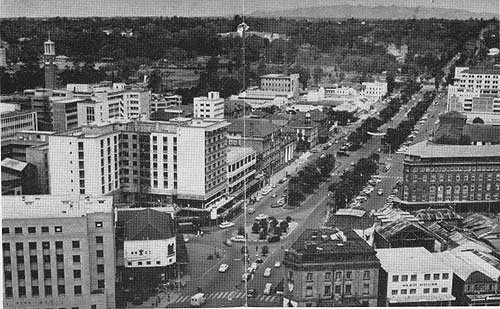
Delamere Avenue with New Stanley Hotel around 1959 (sent by Harsh Maroo)
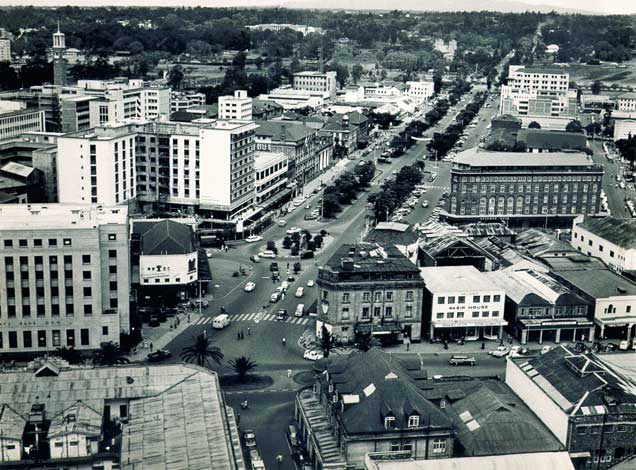
Ariel view of Delamere Avenue 70's
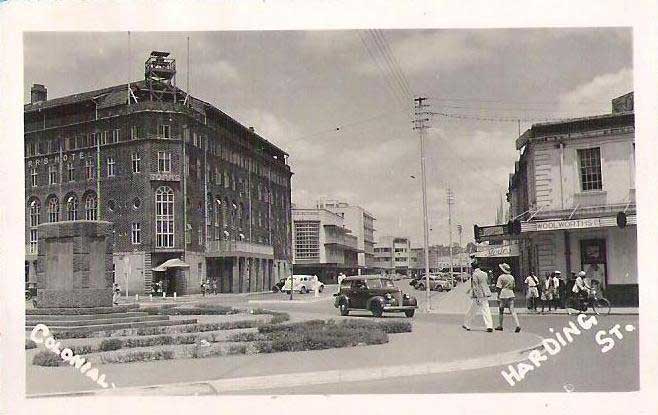
An excellent photo sent by Dr.Roger Harland of junction Hardinge Street & DelamereAvenue. Note plinth of Delamere Statue without statue & completion of the Torrs Hotel around 1928. See the Woolworths Ltd Sign.
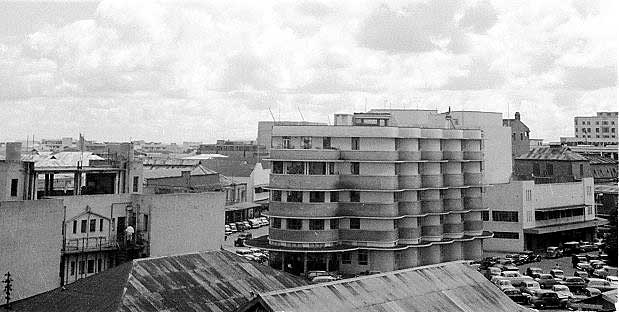
Kenwood House on Hardinge Street 1950 (sent by Rajni Shah)
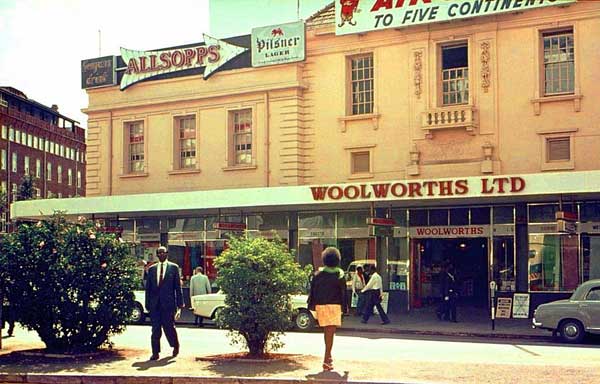
Woolworths Delamere Avenue (sent by Kenya couk)
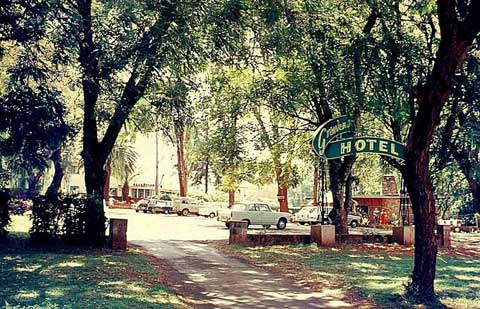
Grosvenor Hotel Nairobi 70's (sent by Kenya couk)
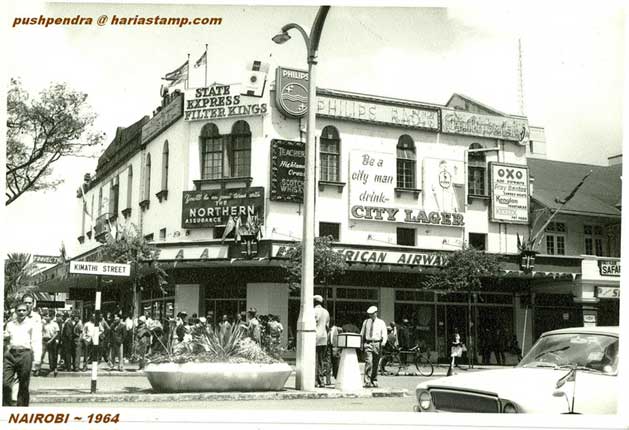
East African Airways building on corner of Delamere Avenue and Hardinge Street (next to Barclays Government Road
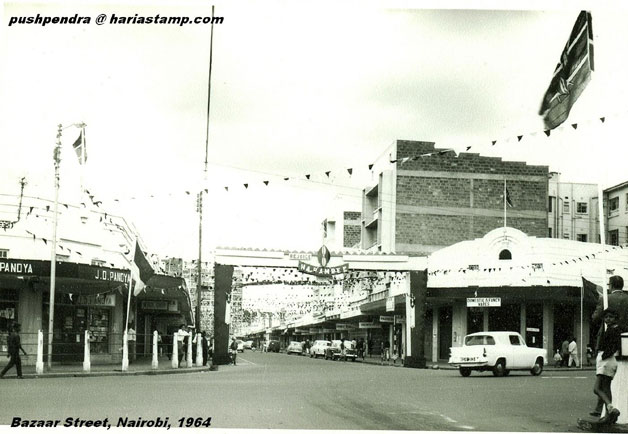
Indian Bazaar celebrating one year of Uhuru 1964
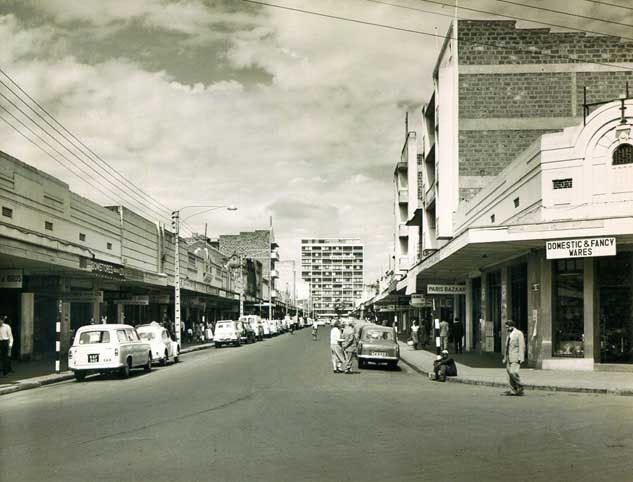
Bazaar Street from Khoja Mosque end 1970
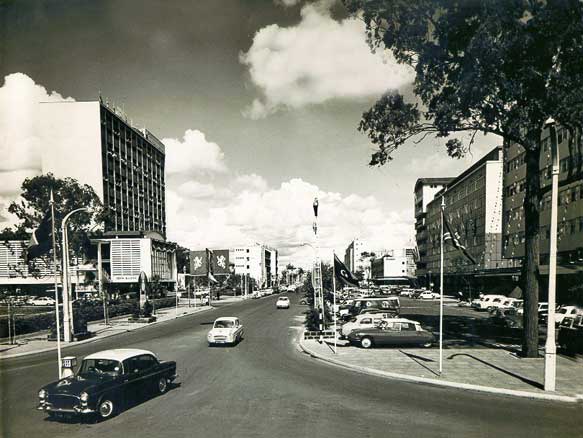
Harambee Avenue 1970
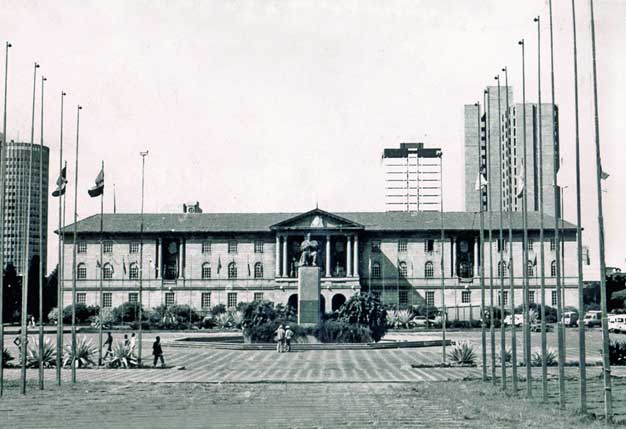
High Courts of Kenya
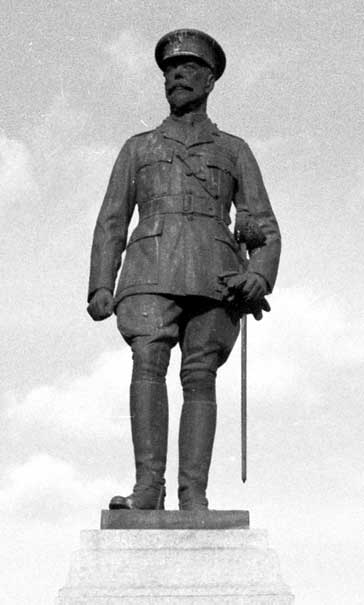
Statue of King George 5 later replaced by Mzee Jomo Kenyatta (sent by Rajni Shah)
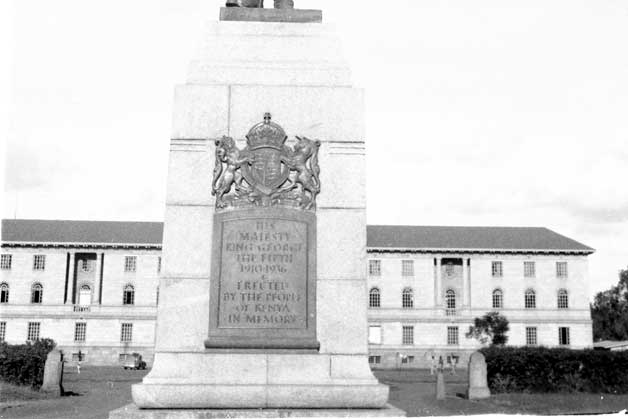
The British Court of Arms and plaque underneath the above statue of King George5 1950 (sent by Rajni Shah)
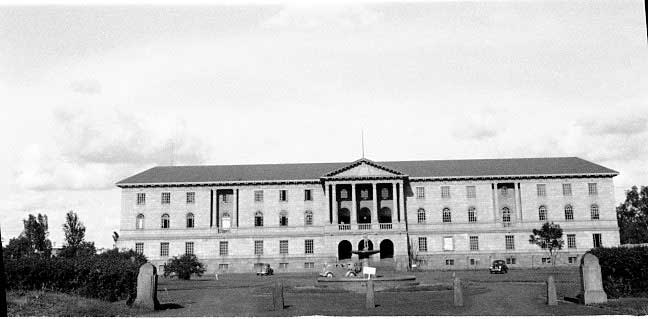
Law courts 1950 (sent by Rajni Shah)
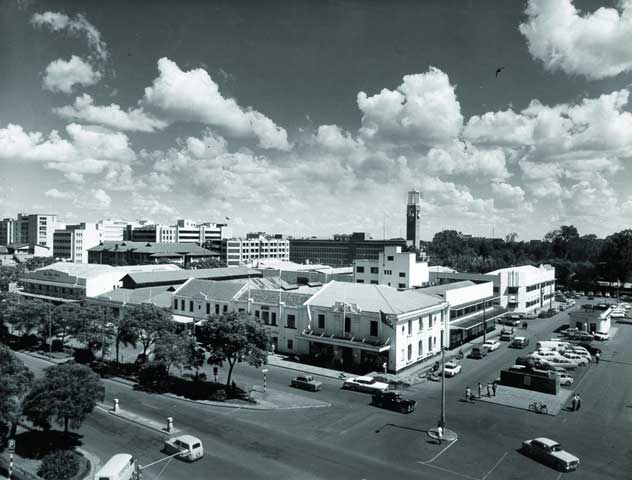
Delamere Avenue with corner of Koinange Street 1970
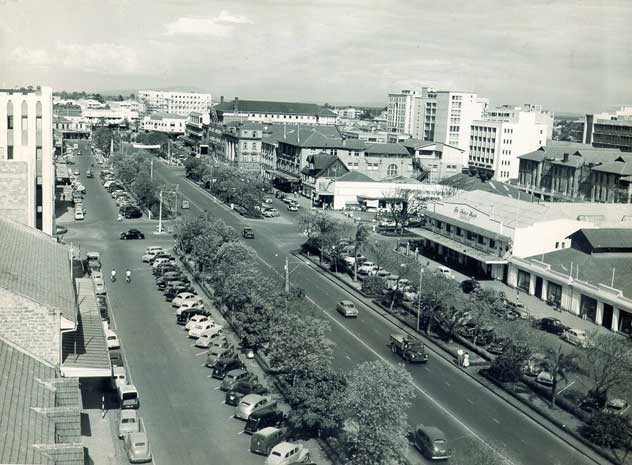
Delamere Avenue 60's
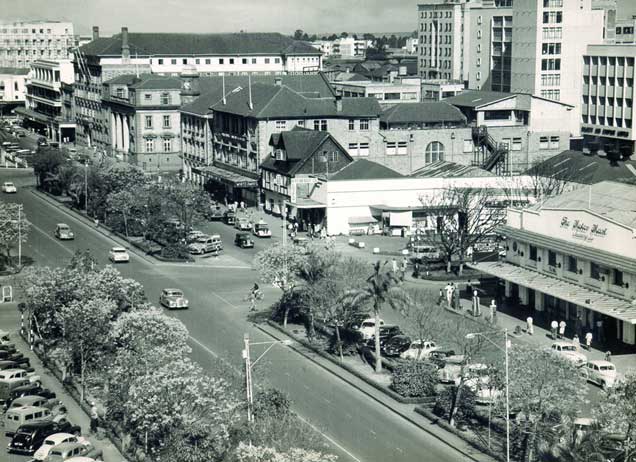
Delamere Avenue 60's
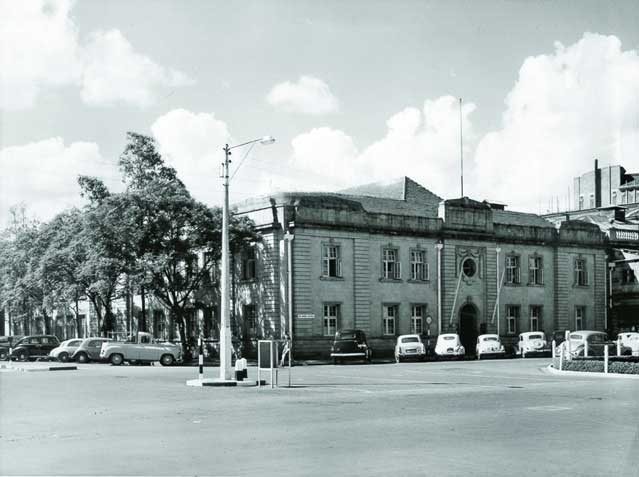
Delamere Ave showing present Bank of India 60's
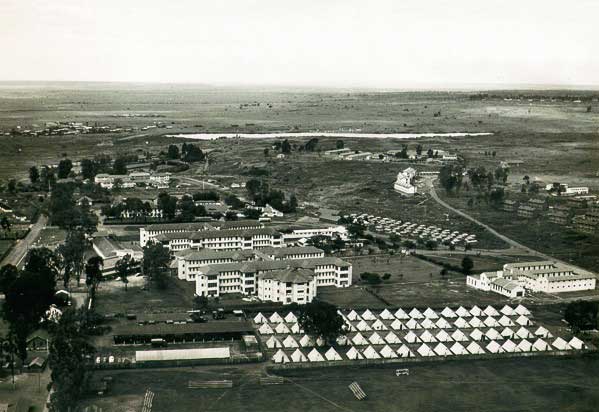
Ariel view of King George V1 Hospital
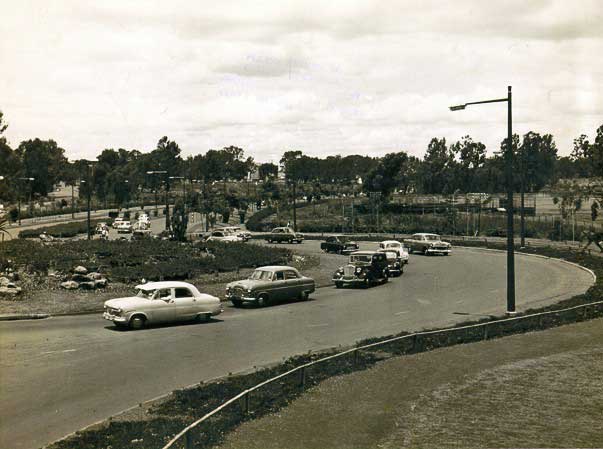
Round about near ainsworth bridge 1970
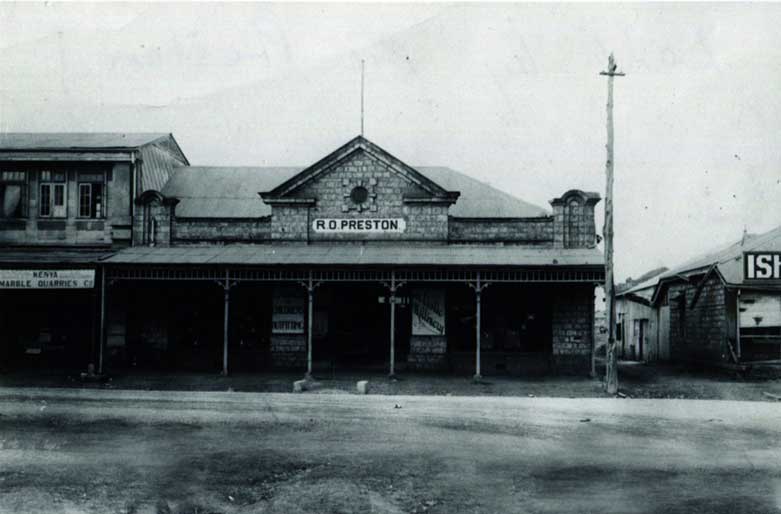
RO Preston Stores with Kenya Marble Quarries 1930's
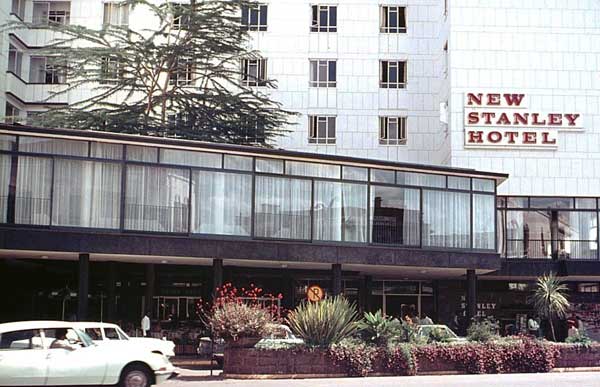
The New Stanley & Thorn Tree 70's (sent by Kenya couk)
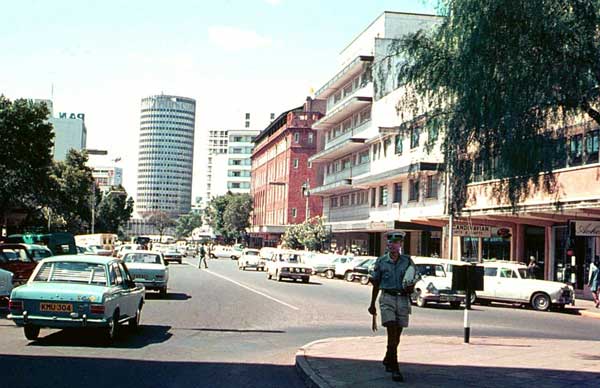
Hardinge Street & the Hilton in the background (sent by Kenya couk)
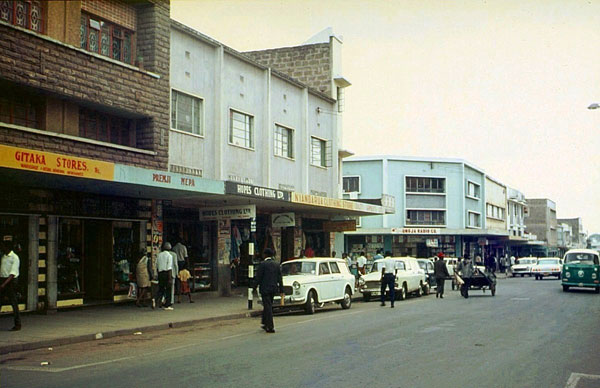
River Road 70's - Turning into Khan Road leading to Verma Road and Grogan Road-opposite Campos Ribeiro Avenue (sent by Kenya couk)
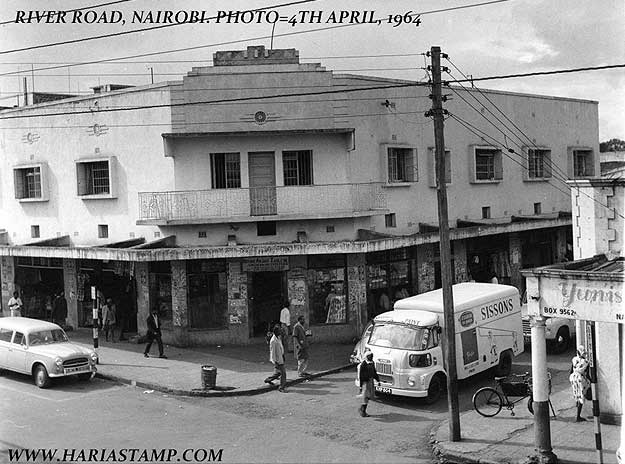
N.Shah Building with Yunis butchery on the other corner. This turning to Verma Road is the last one before reaching Racecourse Road & Duke Street Junction with Nathwani Petrol Station and Sanatan Dharam Sabha. (sent by Push Shah)
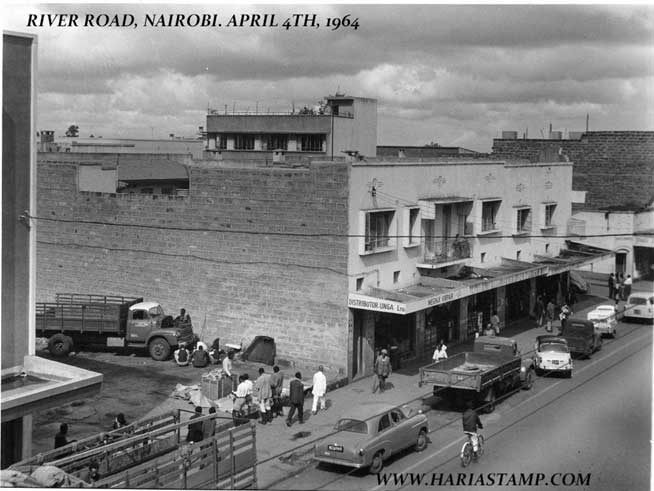
Same building from different angle. See also the broken lorry in open yard. (sent by Pushpendra Shah)
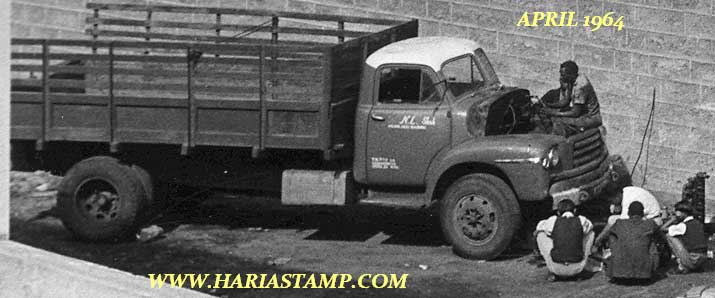
The Leyland Albion truck being repaired (sent by Push Shah)
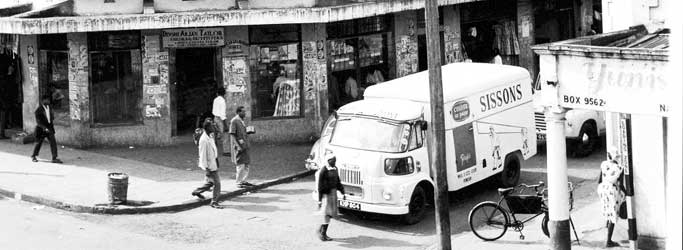
Posters showing off on the N.L. Shah building with shop of Devshi Arjan Tailor and Sissons Paint van nearby. (sent by Pushpendra Shah)
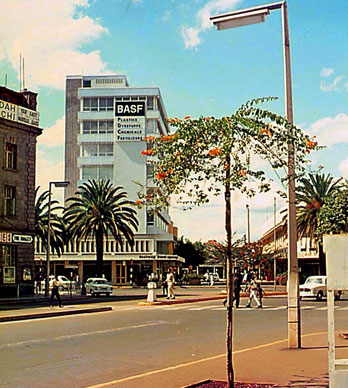
Junction Delamere Avenue and Government Road (sent by Kenya couk)
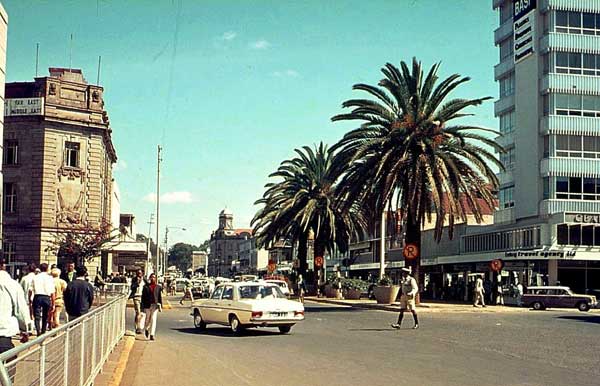
Government Road with Nairobi House on the left and Bestway Travels on right 70's (sent by Kenya couk)
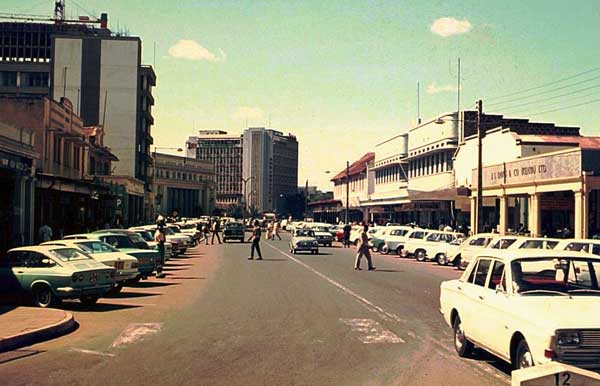
Government Road with Ambassadeur Hotel 70's (sent by Kenya couk)
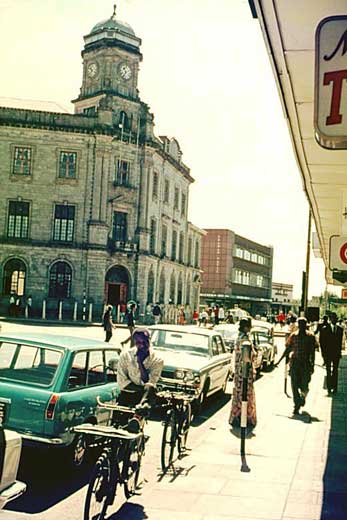
Khoja Mosque from Indian Bazaar 70's (sent by Kenya couk)
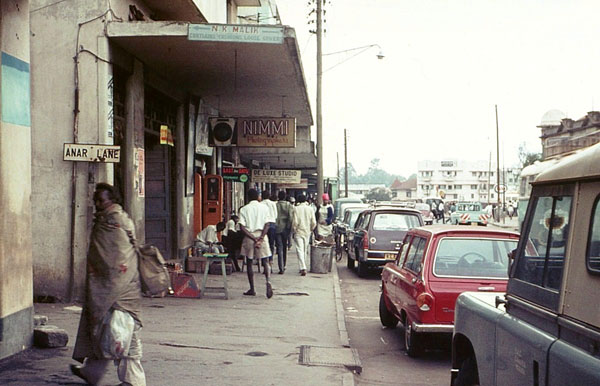
Duke Street with Nimmi Photographers on left and see dome of Sanatan Dharam Sabha (sent by Kenya couk)
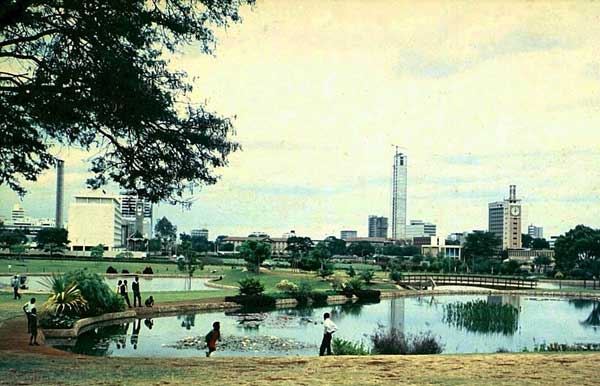
Uhuru Park 70's (sent by Kenya Couk)
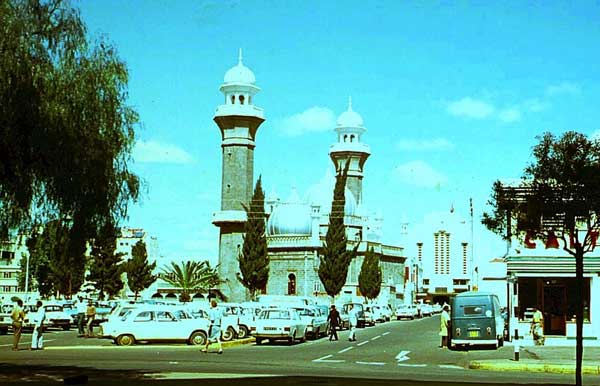
Jamia Mosque with the City Market 70's (sent by Kenya Couk)
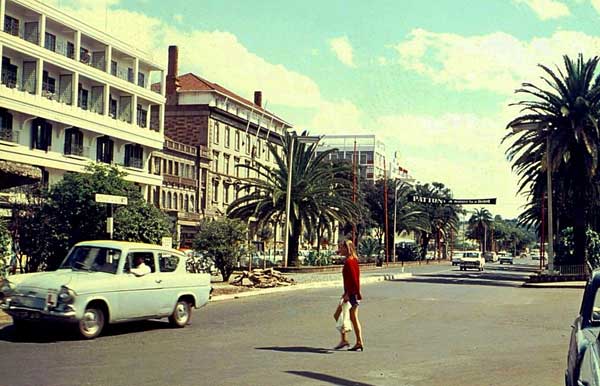
Delamere Avenue 70's (sent by Kenya Couk)
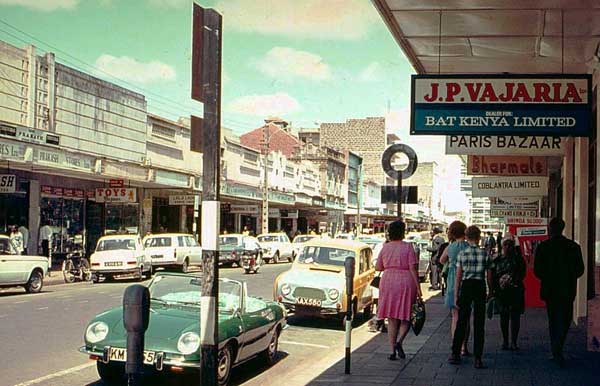
Indian Bazaar 70's (sent by Kenya Couk)
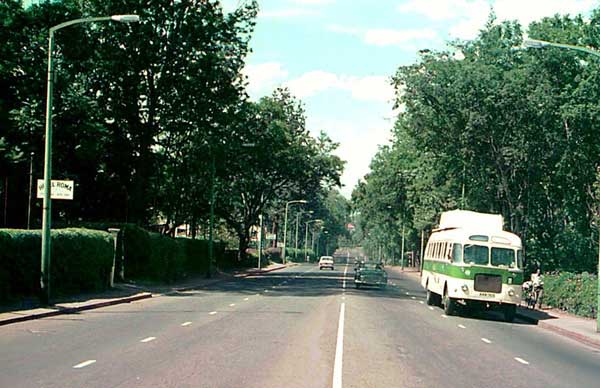
Hotel Roma Nairobi 70's (sent by Kenya Couk)
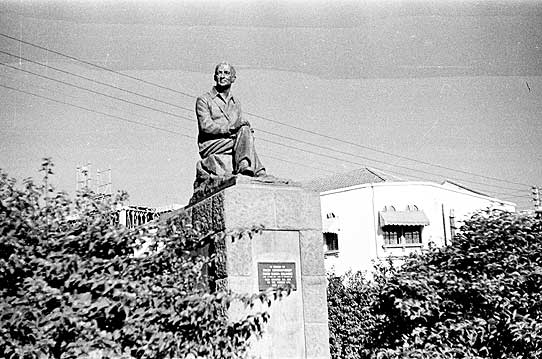
Statue of Lord Delamere, one of the first pioneers of East Africa. Statue was situated opposite the New Stanley Hotel on Delamere Avenue.(Courtesy JRSP) (see also following picture with statue)
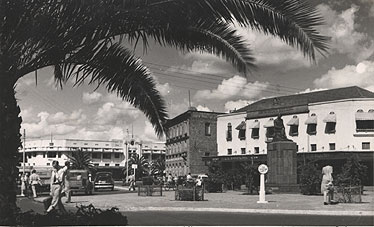
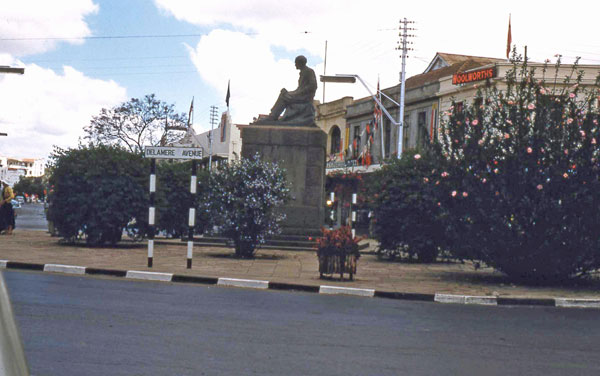
Statue of Lord Delamere from a different angle (sent by Ron Bullock)
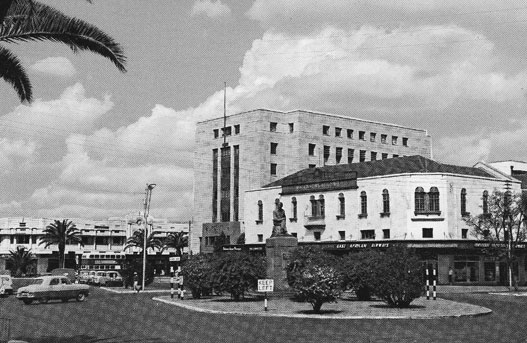
Delamere Avenue1956. See new Barclays Building in contrast to one above photo. (sent by Rajni Shah)
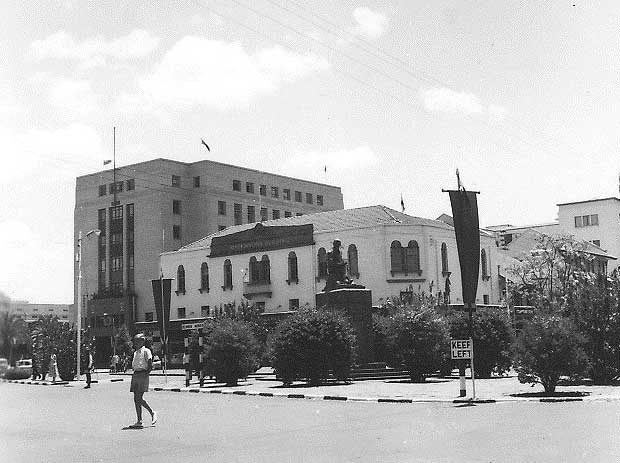
Another view 1956 (sent by Rajni Shah)
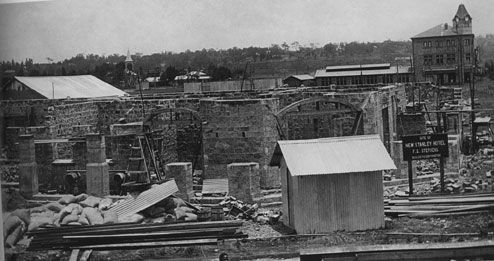
New Stanley Hotel during the construction in 1912 (photo courtesy Nigel Pavitt)
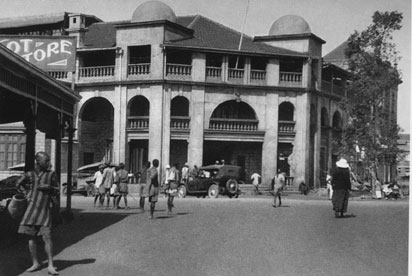
Stanley Hotel in 1920's. The building underwent major reconstruction in 1932 (photo courtesy Nigel Pavitt)
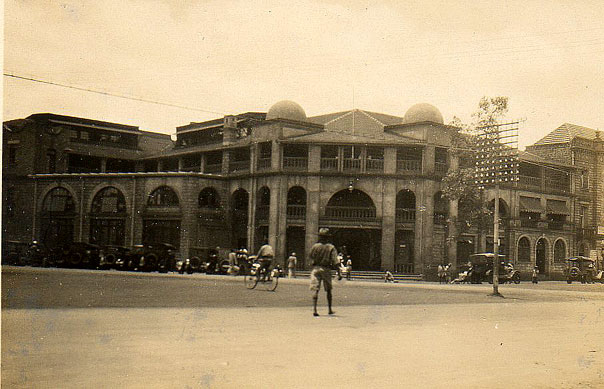
Another view of Stanley Hotel around 1920's (sent by Robin Grayson)
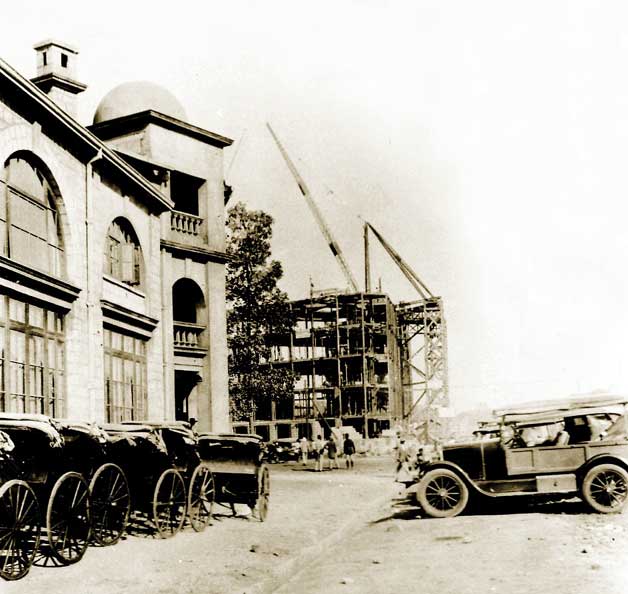
The Stanley Hotel under construction 20's
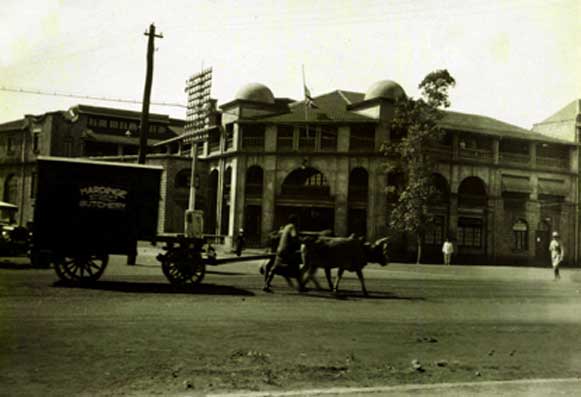
The Stanley 20's
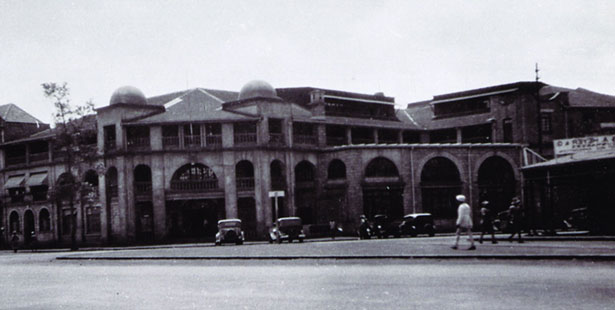
Another view of the Stanley
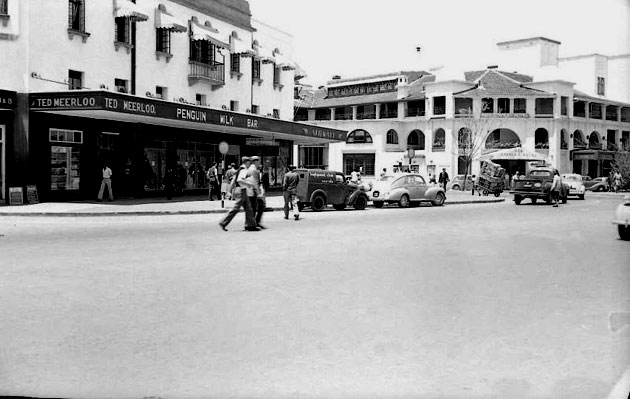
These premises of Ted Meerloo were later 'David Lyall Ltd'- the Omega People - with the Stanley Hotel on right 50's
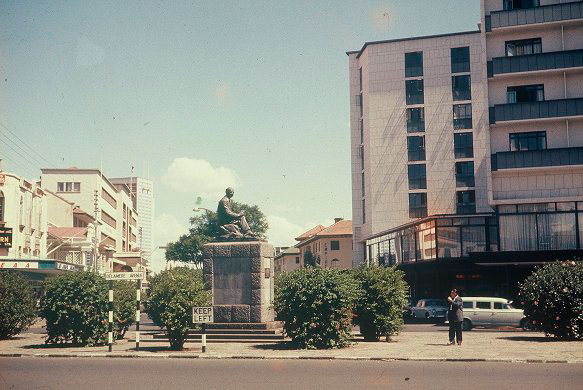
Statue of Lord Delamere opposite Stanley Hotel
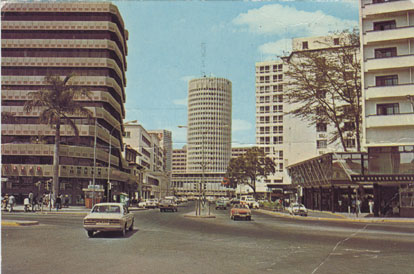
View of Hilton & New Stanley from kimathi St (Hardinge St) 1985 - The building on the left replaced the one on the right of the top picture

The New Stanley Hotel 1959 with Torrs Hotel opposite

New Stanley 1959
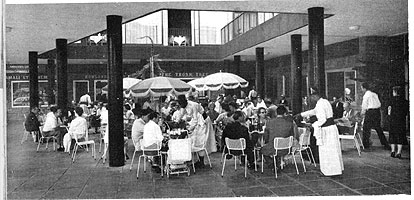
The Thorn Tree at the New Stanley - Remember the coffee mornings?
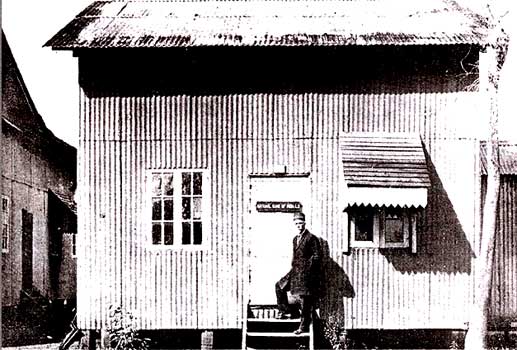
A Parsee Gentleman (manager?) stands on the steps of the first NATIONAL BANK OF INDIA (courtesy We came in dhows)
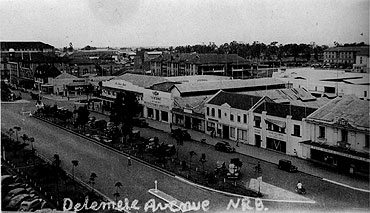
Delamere Avenue around the fifties
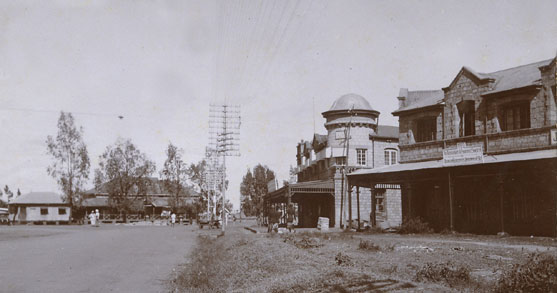
Another view of imerging Nairobi -early 20th century
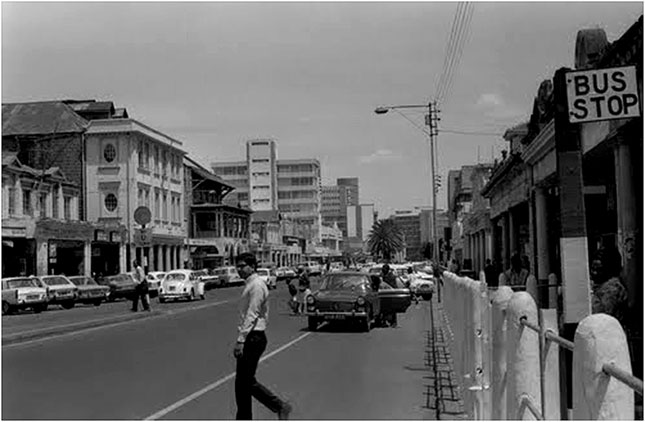
Government Road 1971: Photo taken at corner of Indian Bazaar Street looking along Government Road towards Ambassadeur Hotel in the far background. Princess House (Sans Chique Restaurant) is on the left (on top of the Indian gentleman’s head). The three buildings clearly seen on the right beyond the bus stop are presumed demolished and no longer there since during my own 2012 visit, when I photographed all the buildings currently situated there look different (sent by Tahir Mirza)
See Nairobi revisited in 2012 through the lens of Tahir Mirza ..Click here
See Ngara 2012 through the lens of Tahir..Click here
See building of Embakasi Airport 1958 (sent by Tahir...Click here
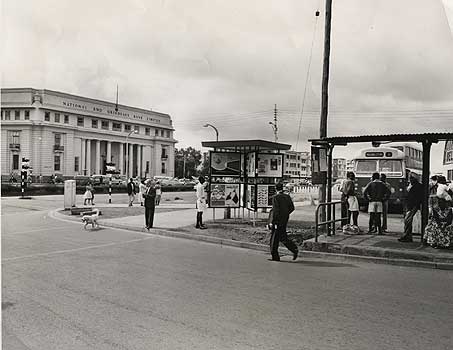
Old Nairobi Bus station opposite the National Bank - later the Hilton was built on this land.
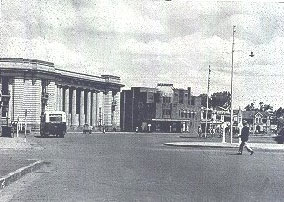
National Bank (above)and capitol Cinema (later replaced by Ambassadeur Hotel) around 50's
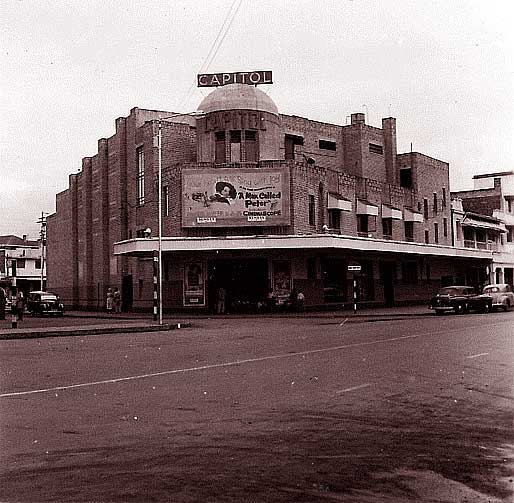
The Capitol Cinema 1956 (sent by Rajni Shah)
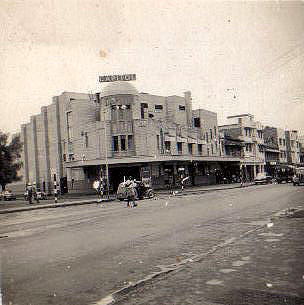
Another view of the Capitol around 50's (sent by Ashwin Bahl)
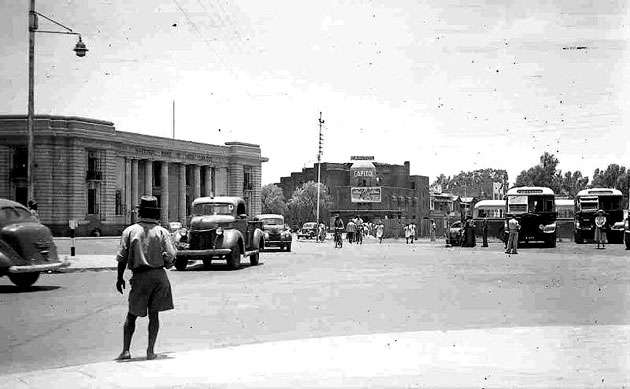
The National Bank of India & the Capitol Cinema with the main bus stand around 50's
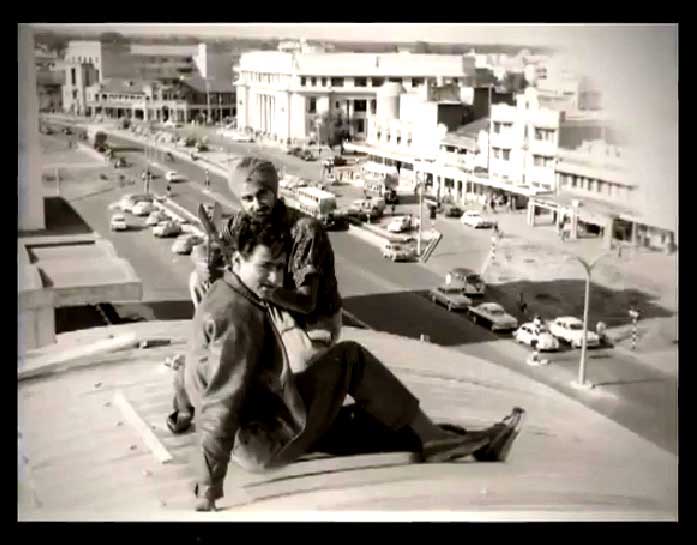
An arial view of the Government Road. You can see theNational Bank, Capitol Cinema and premises of Photo Studio. Photo taken from top of old building (later Kenya Cinema) around 1958 (photo courtesy Sunny Mann)
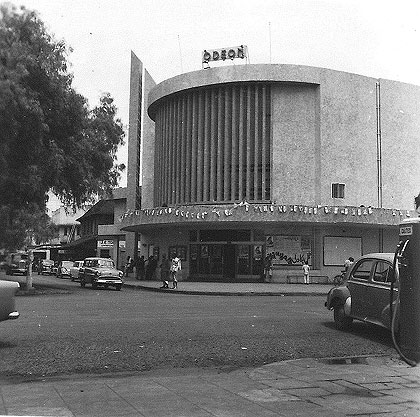
Odeon Cinema on Latema Road 1956. The first fim screened at this cinema was Anarkali, starring Pradeep Kumar, Bina Rai, Mubarak etc.(sent by Rajni Shah)
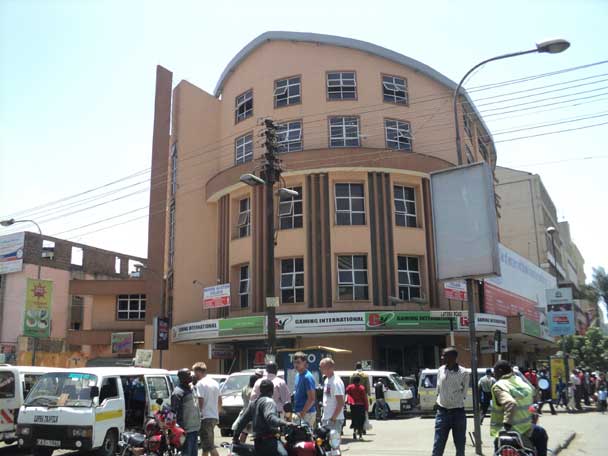
The changed face of the Odeon-no longer a cinema (my trip March 2012 harjinder)
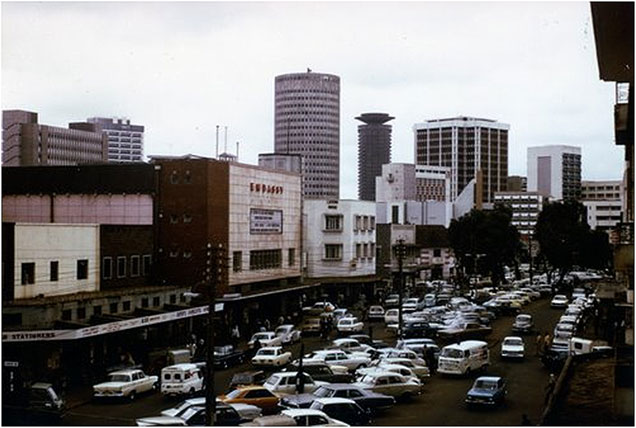
Embassy Cinema 1974 –Latema Road.
Odeon Cinema (with the brown spire-type feature) is at the far end on the same side of the road. (sent by Tahir Mirza)
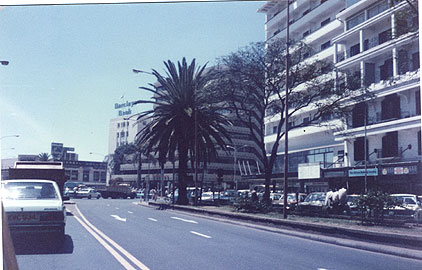
View of Barclays Govt. Road. from Kenyatta Avenue (Delamere Ave) 1985
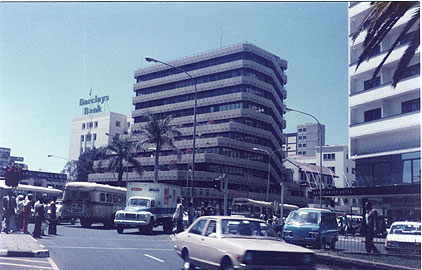
Same as above
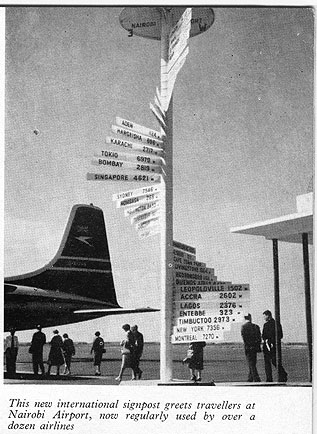
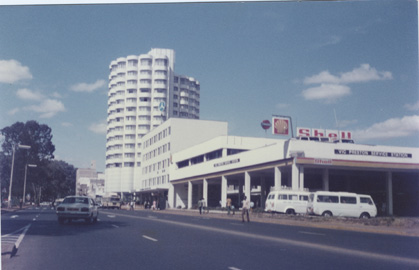
Vic Preston's station on Kingsway 1985
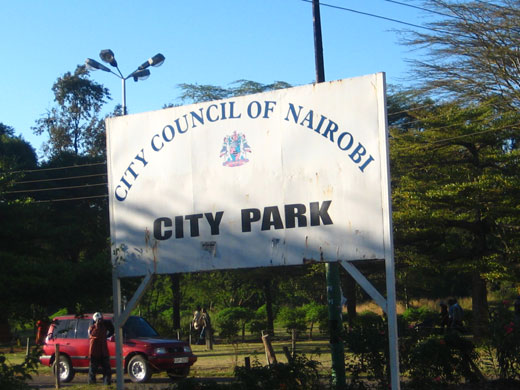
The entrance to the City Park 2011 (sent by Rajni Shah)
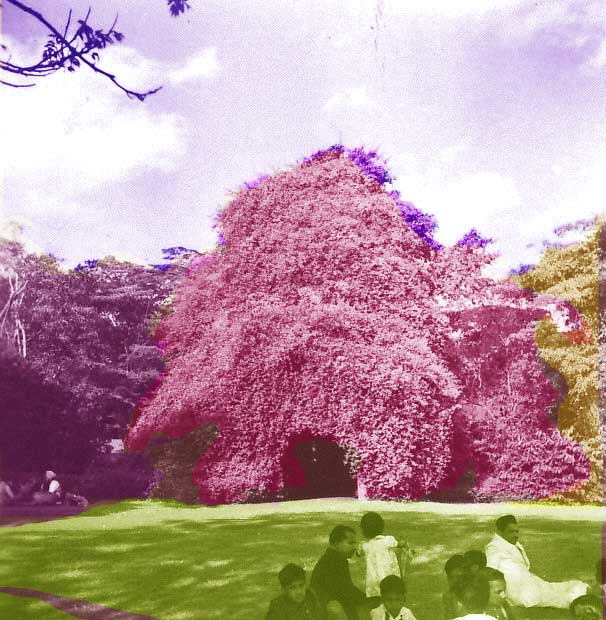
The bougainville beauty of City park 1955. (sent by Rajni Shah)
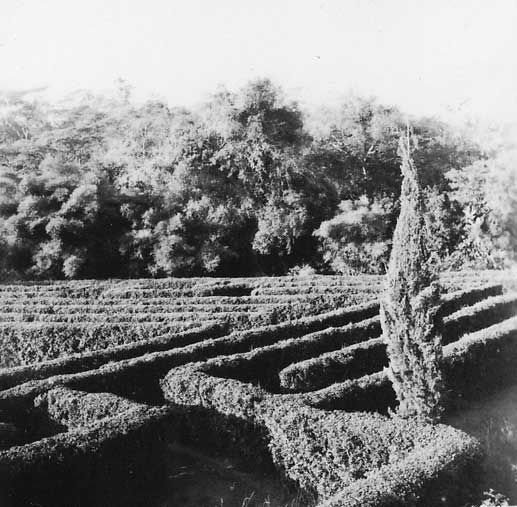
The maze or 'Bhool Bhulaiyan' of City Park 1955 (sent by Rajni Shah)
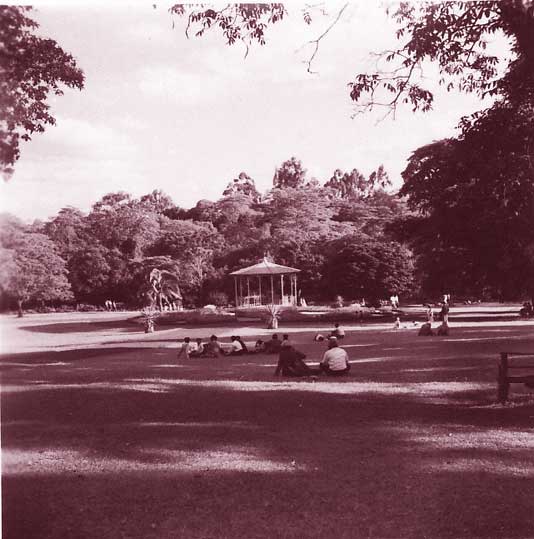
City Park - a relaxation resort on Sundays & holidays. There used to be a band playing in the gazebo in the middle of the park every fortnightly 1955 (sent by Rajni Shah) .
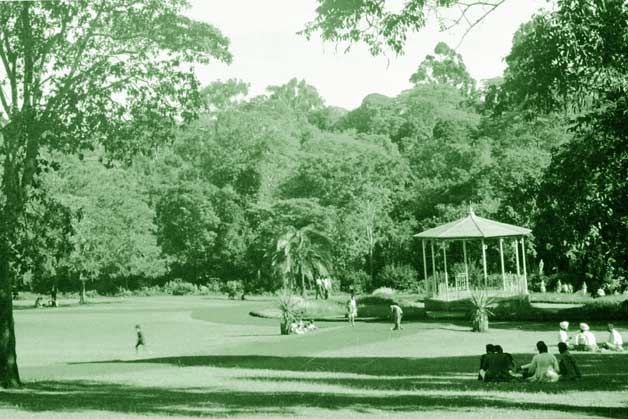
Another view of City Park 1950 (sent by Rajni Shah)
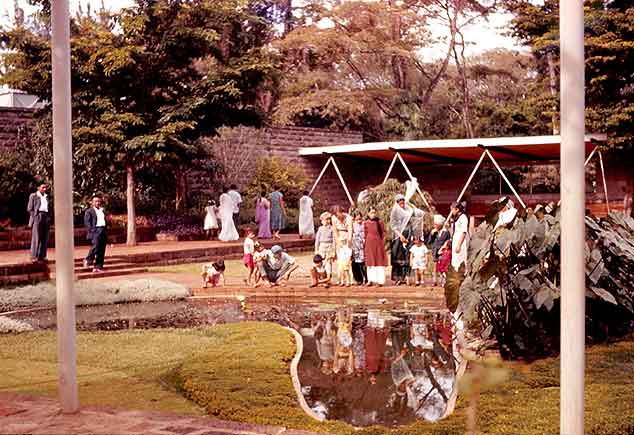
People enjoying the weekend at the city Park (sent by Tahir Mirza)
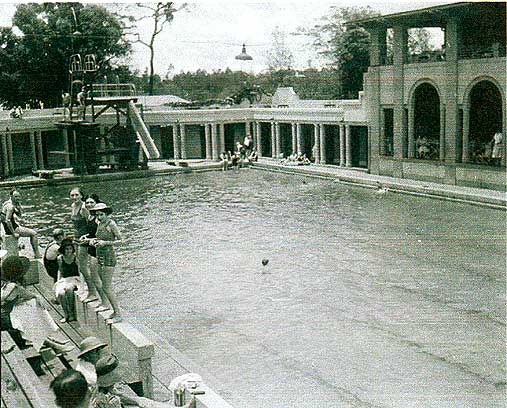
Salisbury swimming pool in westlands around the fifties (sent by Robin Grayson)
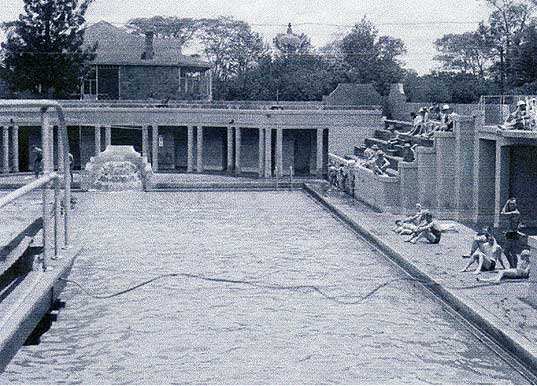
Salisbury swimming pool in westlands around the fifties (sent by Robin Grayson)
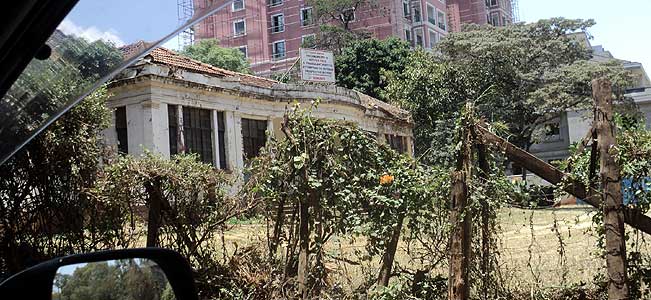
The derelict Salisbury Hotel or later Club 1900 now on the brink of destruction (2012)

Government Road, Nairobi -around 1960
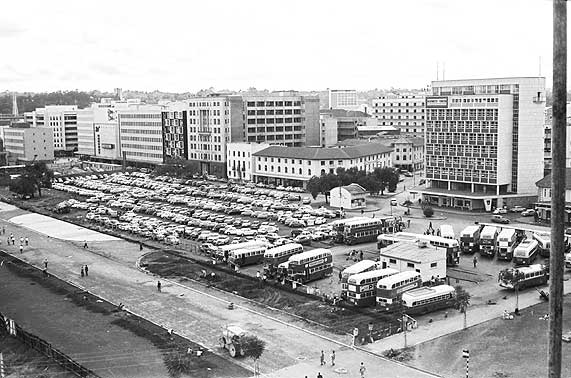
Large car park opposite Barclays Bank Queensway, next to Vedic House (Photo Courtesy Jaspal- Ram Singh Photographers- (JRSP))
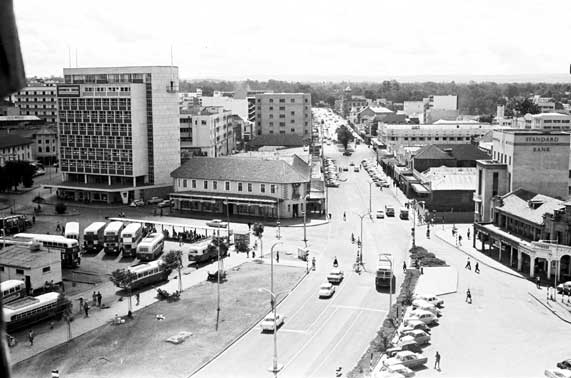
Ariel view of Government Road (courtesy JRSP)
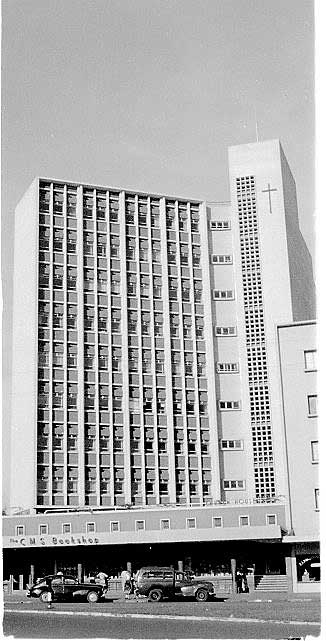
Premises of CMS Bookshop later known as ESA Bookshop on Government Road near Whitehouse Road 1950. (sent by Rajni Shah)
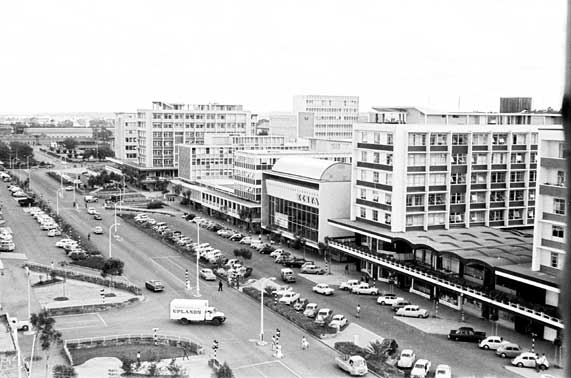
Ariel View of Kenya Cinema (Courtesy JRSP)
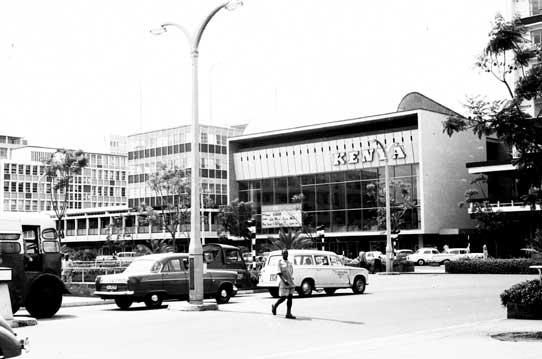
Kenya Cinema
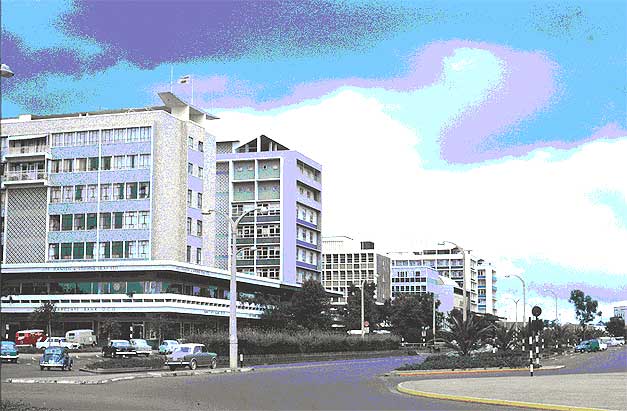
Kenya Cinema & surroundings around 1965 (sent by Tahir Mirza)
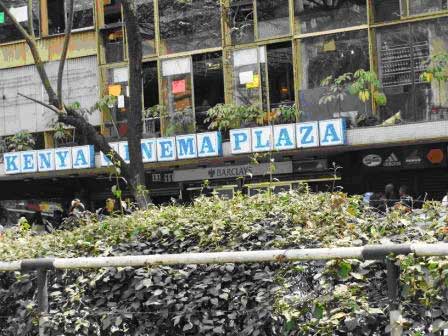
Modern day Kenya Cinema Plaza (sent by Tahir Mirza)
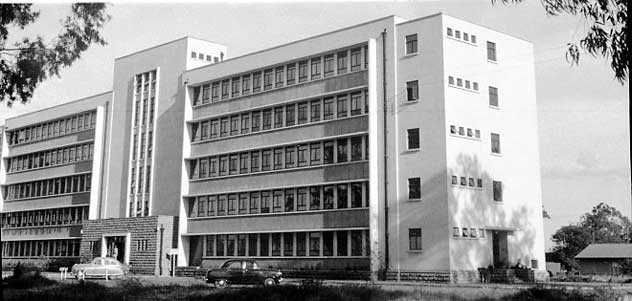
Police headquarters on Harambee Ave (sent by Rajni Shah)
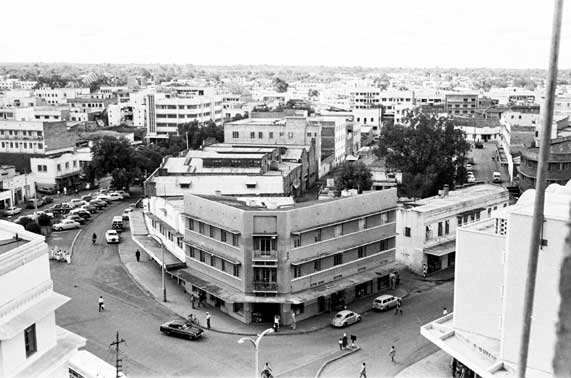
Victoria Street & corners of Reata Road & Campos Ribeiro Avenue. The house on the corner-middle was the residence of S. Nahar Singh Mangat, the renown solicitor. (courtesy JRSP)
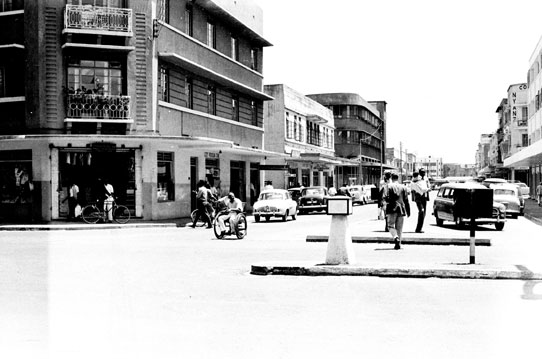
View of Campus Ribeiro Avenue from Victoria Street (see above also) (Courtesy JRSP)
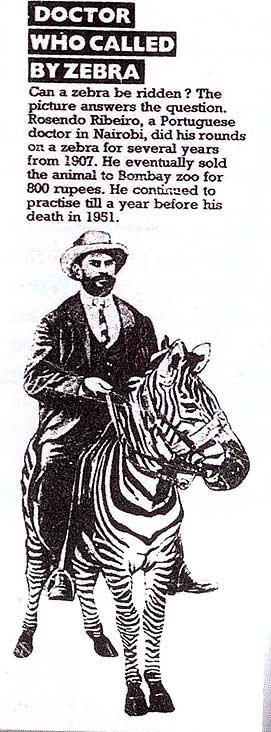
Dr. Ribeiro on his famous Zebra. Mr. Campos, a friend of Dr. Ribeiro jointly got some land from the Government in gratitude for halting the spread of bubonic plague in the Indian Bazaar in 1902. This road was called Campos Ribeiro Avenue. (I, Harjinder, lived there for a few years) (courtesy We came in dhows)
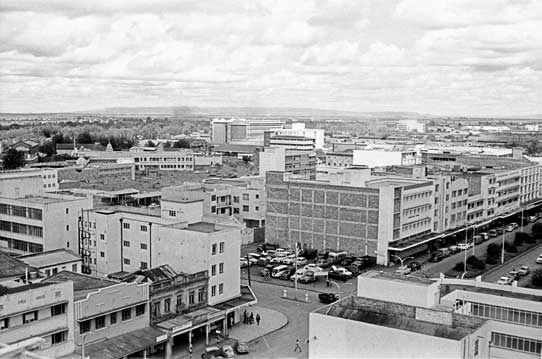
Victoria Street with corner of Duke Street. (JSRP)
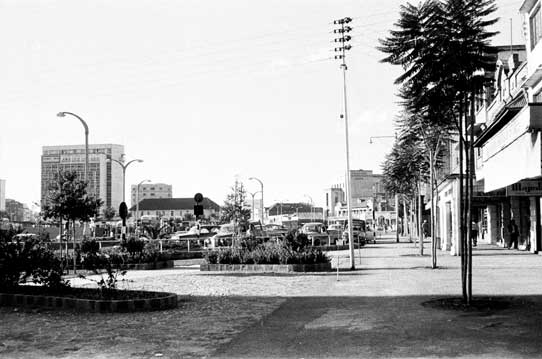
Government Road viewed from opposite Kenya Cinema (JRSP)
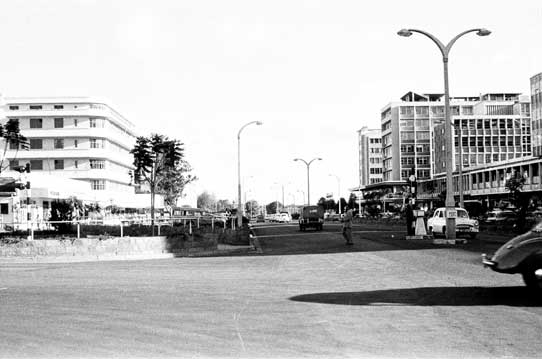
Gill House on the left with Kenya Cinema on right - road going towards Railway Station. (JRSP)
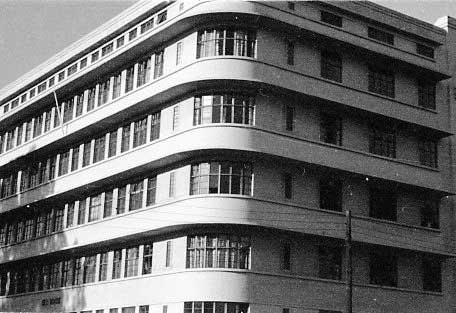
Gill House the best building during the fifties (sent by Rajni Shah)
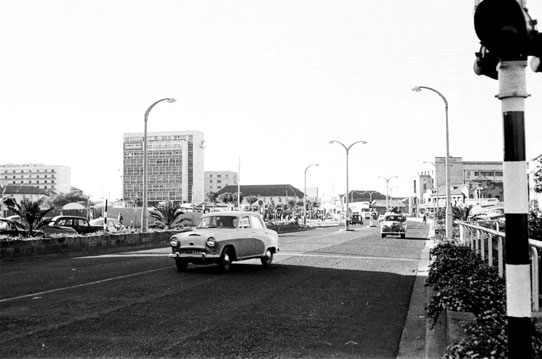
Austin car rumbles along the Government Road (JRSP)
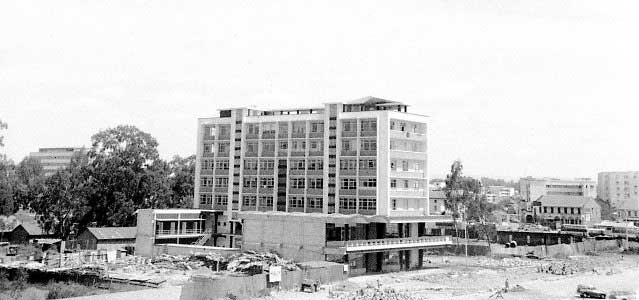
Pioneer House near end of Govt Rd. Opposit CMS Bookshop. This building was premises for Barclays Bank Pioneer House /Government Road South Branch 1950 (sent by Rajni Shah)
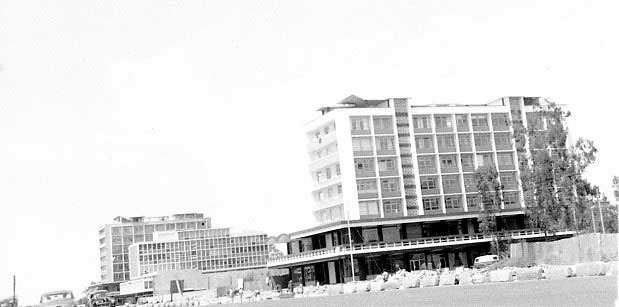
This is the first building built before the Kenya Cinema was built. You can see the empty space for Kenya Cinema around 1950 (sent by Rajni Shah)

The Kenya Parliament House fifties. (sent by Rajni Shah)
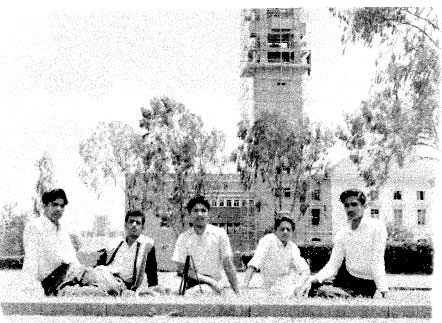
Rajni with cricketer friends with the Parliament House in early stages (early 1950's)
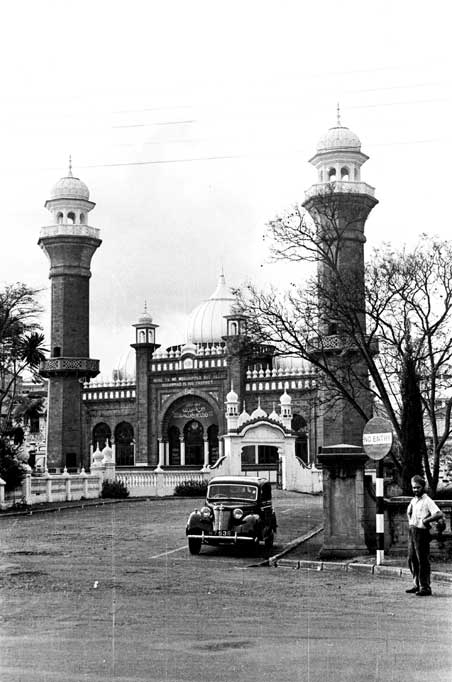
Jamia masjid Nairobi (JRSP)
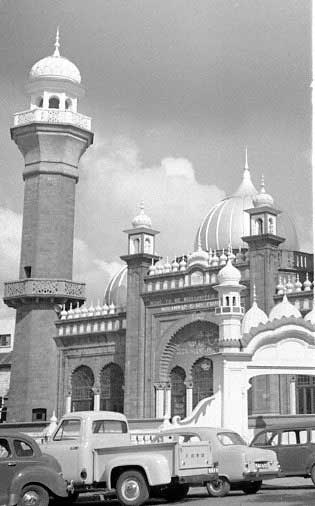
Jamia Mosque 1950 - see the cars -(Austin, Ford truck, Consul ) (Sent by Rajni Shah)
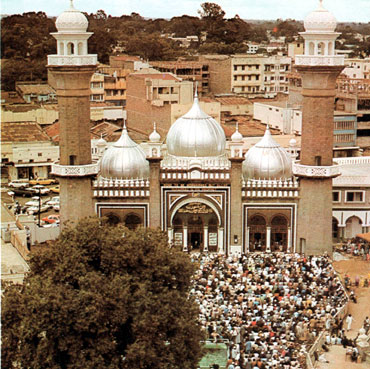
Jamia Masjid during Id-ul-Fitr prayer (courtesy Throgh open doors)
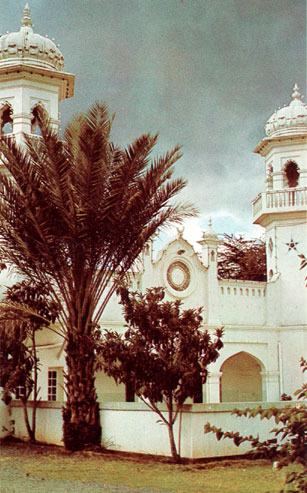
Ahmadiya Mosque on Fort Hall Road (courtesy Through Open Doors)
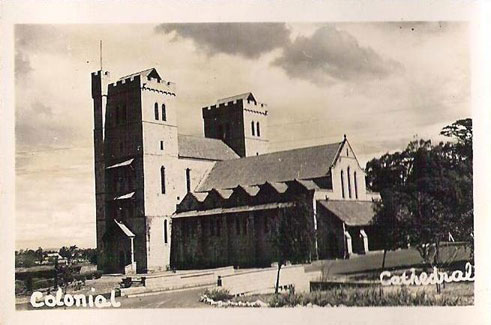
Nairobi Cathedral around 1930's (sent by Dr. Roger Harland)
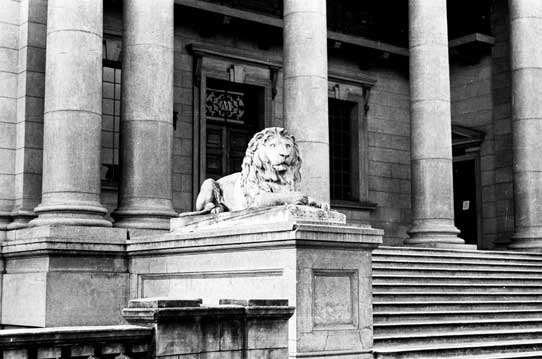
Macmillan Library (JRSP)
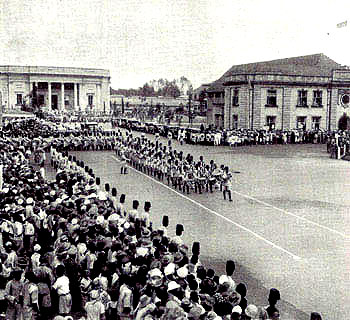
The Kenya African Rifles (KAR) band playing in front of the Macmillan Library -maybe around 30's
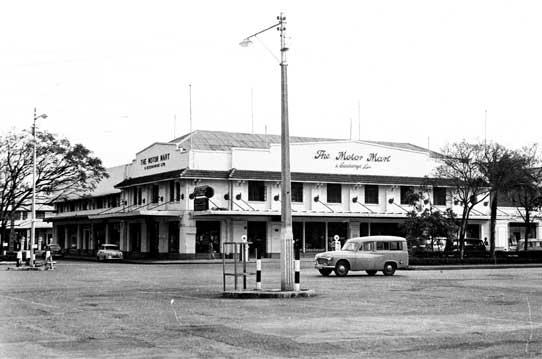
Premises of Motor Mart & Exchange on Delamere Avenue (JRSP)
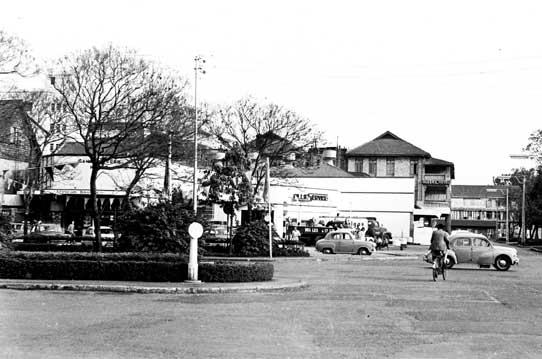
Petrol Station on Delamere Avenue. (JRSP)
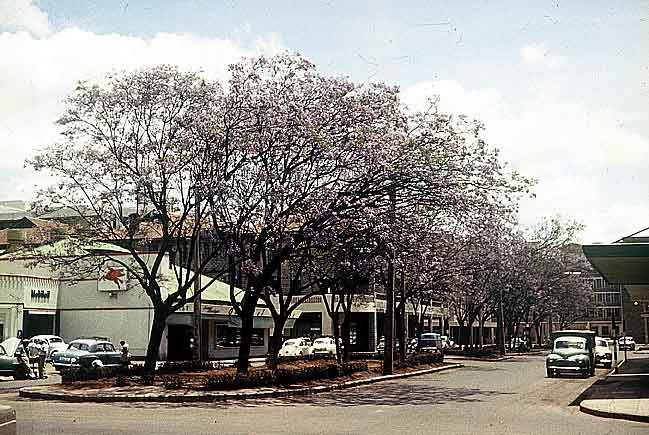
Mobil Petrol Station on Delamere Ave with blossom trees 1960 (courtesy Martin Dixon -http://www.flickr.com/photos/24550621@N06/4338973486/in/photostream/
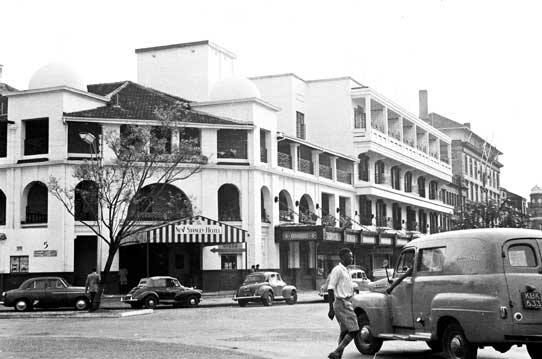
The New Stanley Hotel on Delamere Avenue (JRSP)
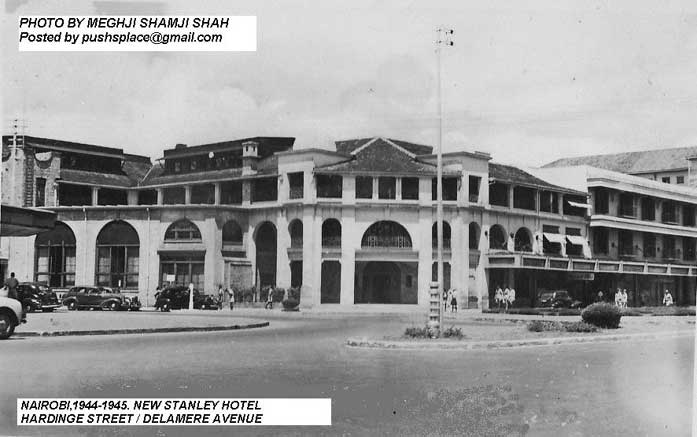
The Stanley (sent by Pushpendra Shah)
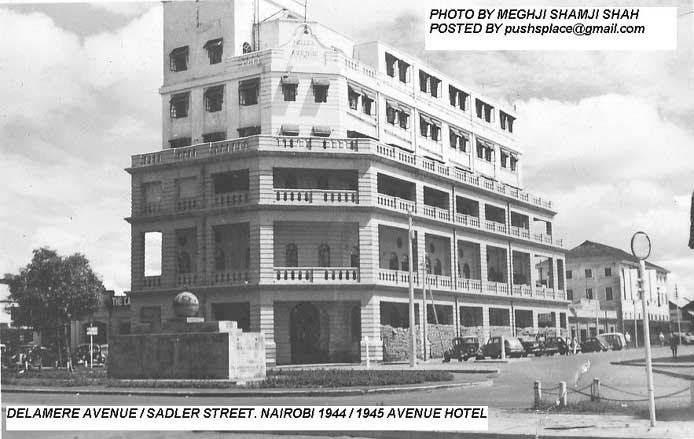
Avenue Hotel (sent by Pushpendra Shah)
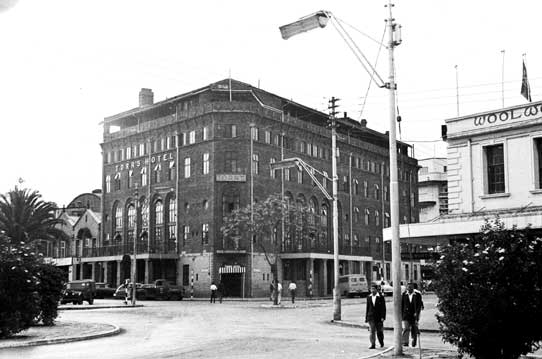
The Torr's Hotel & Woolworths (see also photo on top) (JRSP)
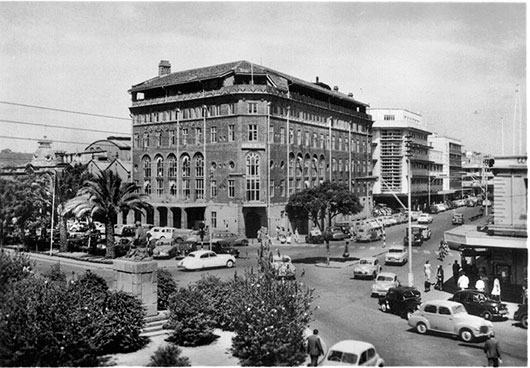
1959 Another view of Torrs (later on taken over by a bank), the Woolworth on the right, Electricity House behind Torrs. The statue of Lord Delamere in the middle of Delamere Avenue & Hardinge Street. (Photo courtesy Pushpendra Shah)
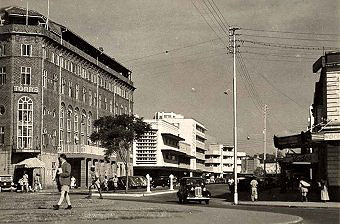
Another view of Torr's & Hardinge Street (courtesy Ron Leese)
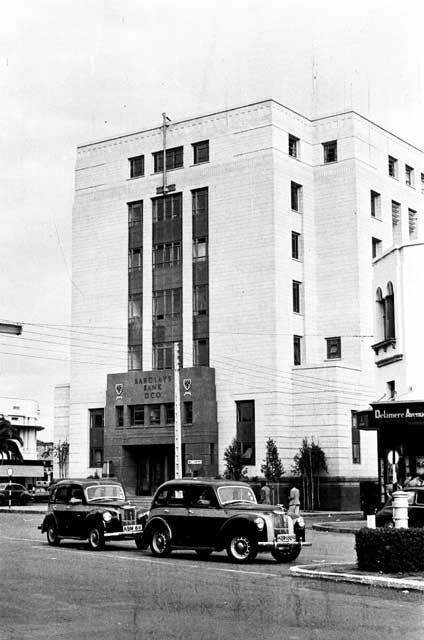
Barclays Bank DCO and Ford Prefects in the back ground (JRSP)
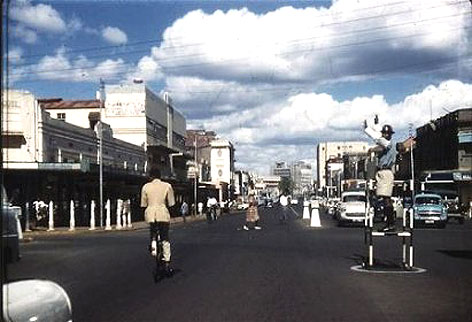
An Askari directing traffic on corner of Government Road & Bazaar Street (Indian bazaar) around 1950's (courtesy Ron Leese)
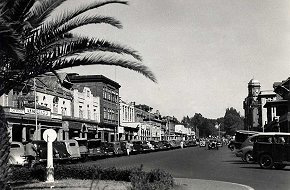
Another view of Government Road & Khoja Mosque (courtesy Ron Leese)
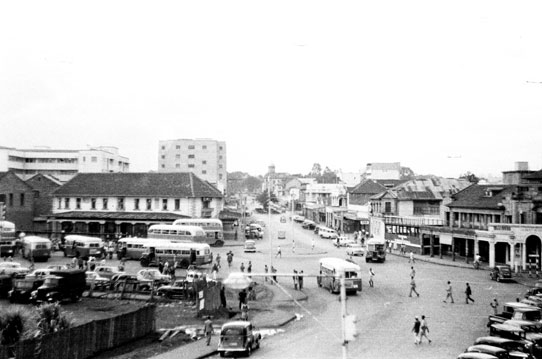
Government Road (Courtesy JRSP)

Corner building with clock on Delamere Avenue (Courtesy JRSP)
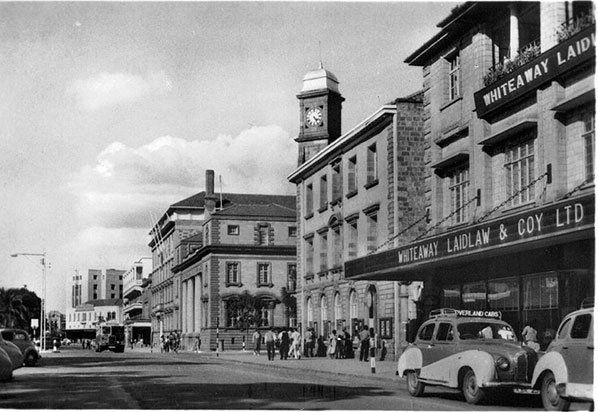
Another view of Delamere Avenue 1959 with shop premises of Whiteway & Laidlaw (The foyer and ceiling of this shop had mirrors on it -people just used to stand underneath it and watch themselves from the ceiling mirrors). The clock tower later on became premises for Barclays Bank.(Photo courtesy Pushpendra Shah)
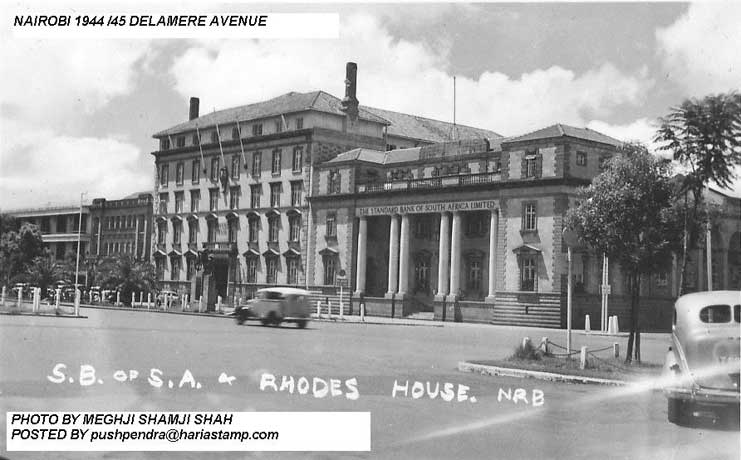
Standard Bank of South Africa Ltd on Delamere Ave (sent by Pushpendra Shah)
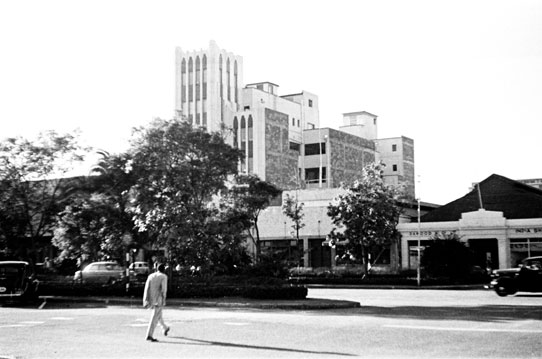
Another side of Delamere Avenue (Courtesy JRSP)

Ariel view of Delamere Avenue with Barclays Bank on the left and New Stanley Hotel. Torr's Hotel can be seen on the right - 1959
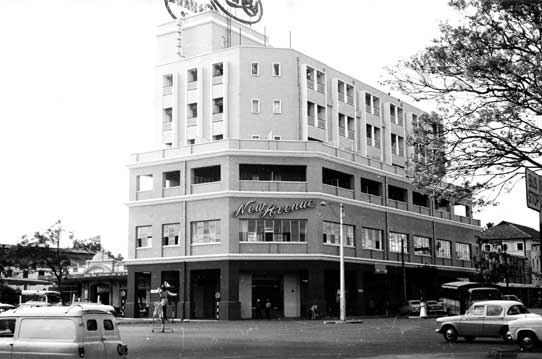
New Avenue Hotel opposite the General PO on Delamere Avenue (Courtesy JRSP)
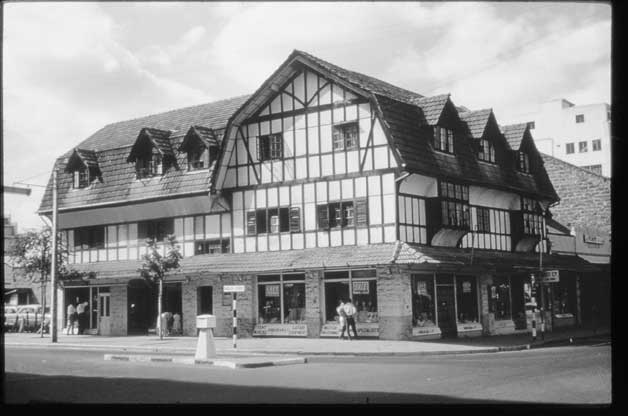
Tudor House -this picturesque house around fifties opposite The New Avenue Hotel(above) . Both buildings on corners of Stewart Street and Delamere Avenue.(sent by Rajni Shah)
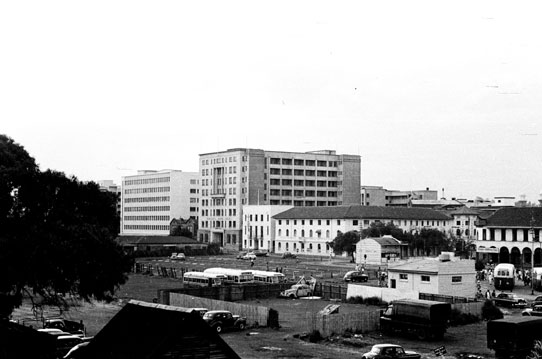
Barclays Bank Queensway with old Vedic House next to it (Courtesy JRSP)
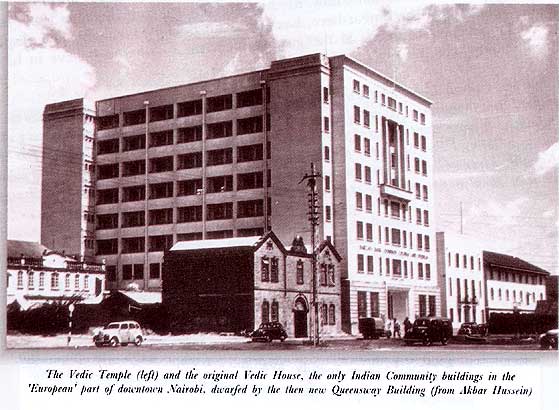

A panoramic view of Nairobi from tower of Parliament House (1958)
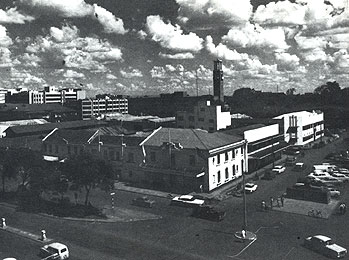
Delamere Avenue - near Post Office.1960 (courtesy 'The Kenya Magic' )
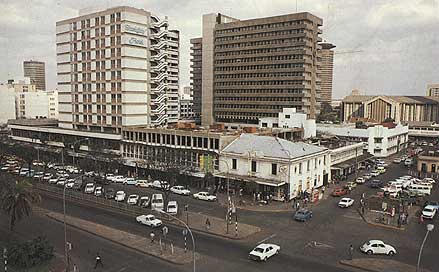
Same as above but year 1973 (courtesy 'The Kenya Magic' )
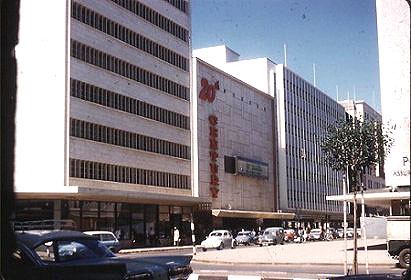
The 20th Century Cinema (courtesy Ron Leese)
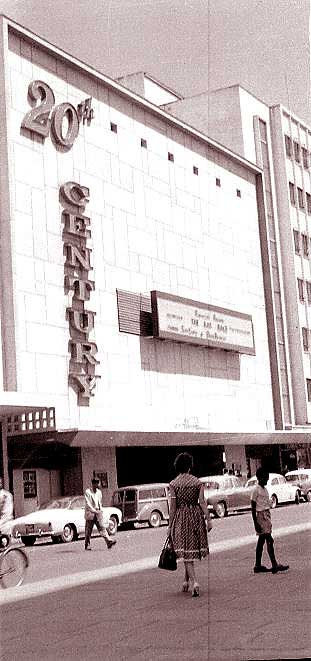
The 20th century cinema in Queensway 1960's (sent by Rajni Shah)

20th century cinema converted to IMAX - snapped by Tahir Mirza in Sept 2012

The Kenya Cinema on Govt. Road (Courtesy JRSP)
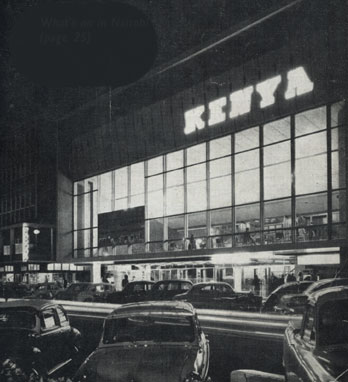
The glamour of the Kenya Cinema at night 1959
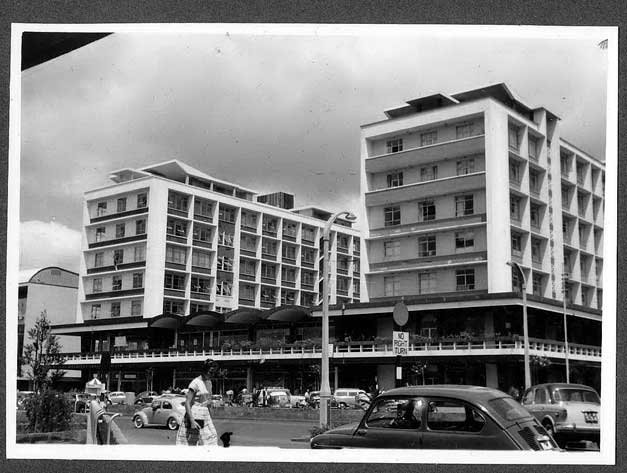
Buildings near Kenya Cinema -Govt. road (sent by Tahir Mirza)
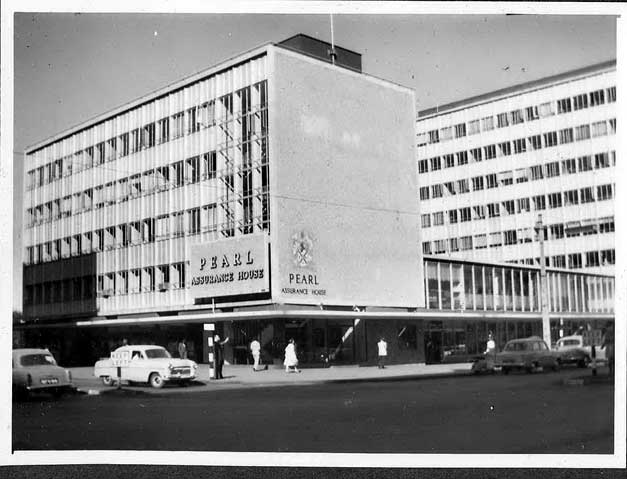
Pearl Assurance House (sent by Tahir Mirza)
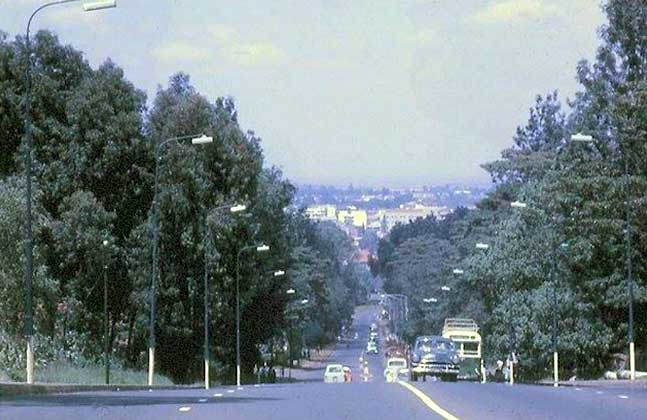
Valley Roadaround 1960's (sent by Victor Rosez)
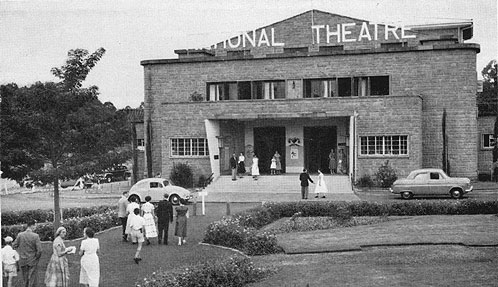
The Kenya National Theatre-Nairobi 1959
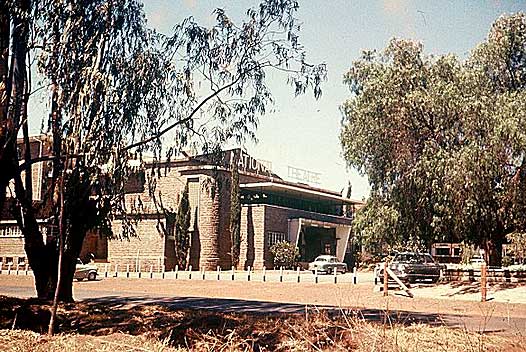
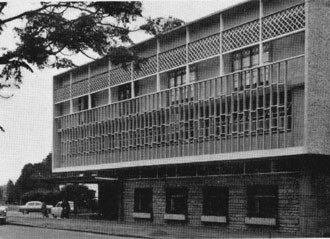
The Donovan Maule Theatre,Nairobi 1959
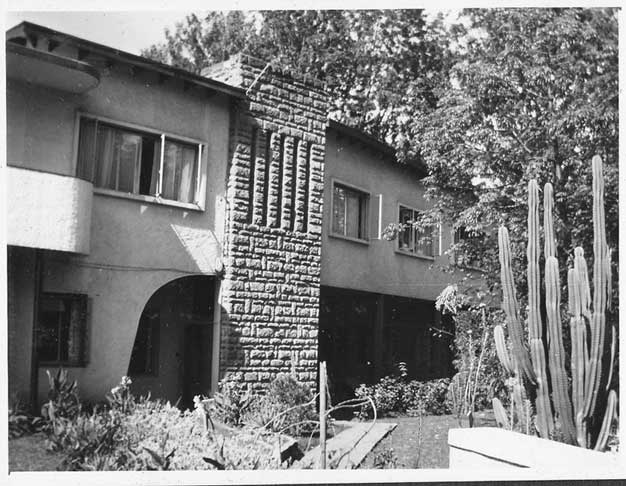
Ainsworth Hotel, Nairobi (sent by Tahir Mirza)
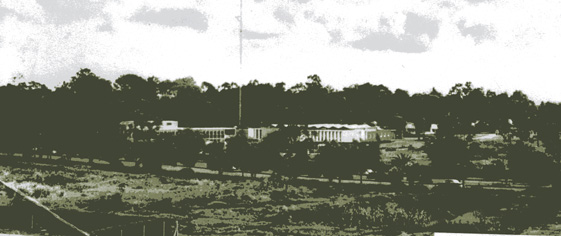
Voice of Kenya - Broadcasting House Nairobi.
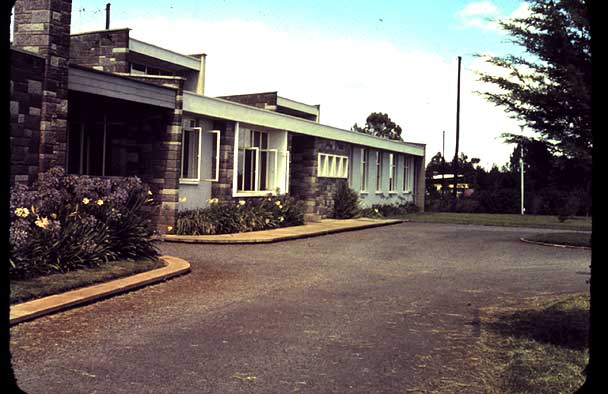
Voice of Kenya - Karen (sent by Ricky Riyat)

Initiators & Broadcasters of the acclaimed Indian Service of the Voice of Kenya.
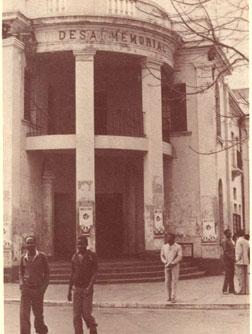
Desai Memorial Library on Victoria Street

A meeting at Desai Memorial Library - see the premises of Stephen Ellis (Electrics) on right 50's
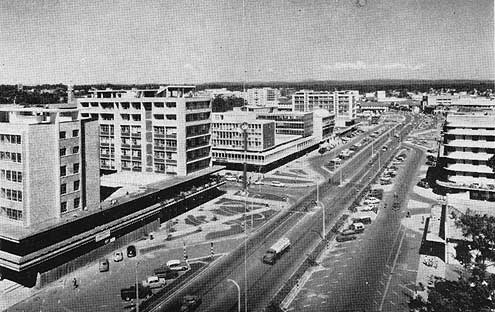
Government Road with Gill House on the right & Barclays Bank (Govt. Rd. South) on the left-1959
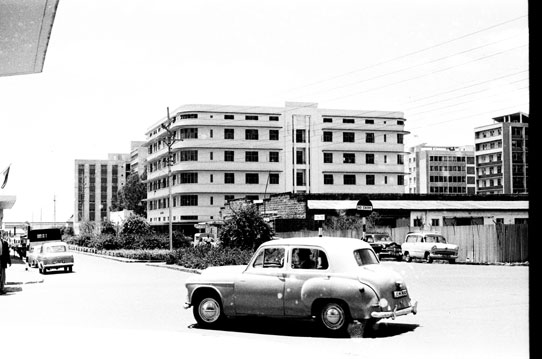
Gill House opposite Kenya Cinema (Courtesy JRSP)
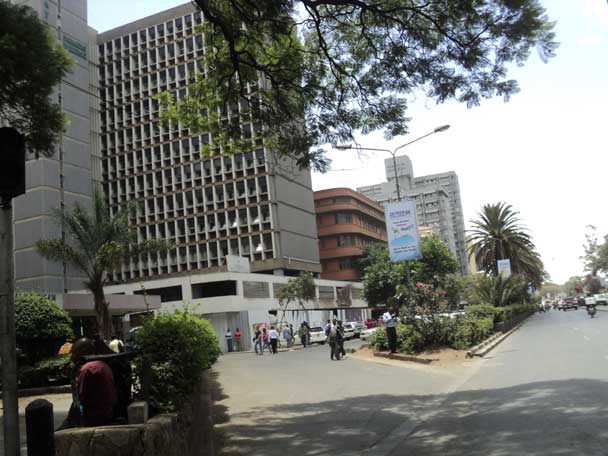
Gill House one of the finest buildings of yester year now dwarfed by tall mansions in 2012
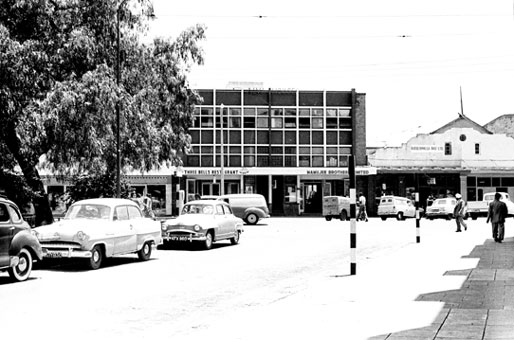
Three Bells Restaurant on Victoria Street (Courtesy JRSP)
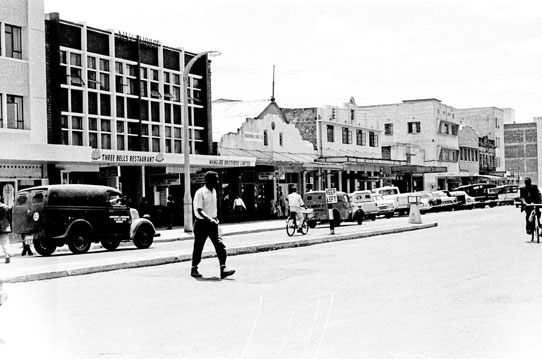
Another view of three bells Restaurant on Victoria Street (Courtesy JRSP)
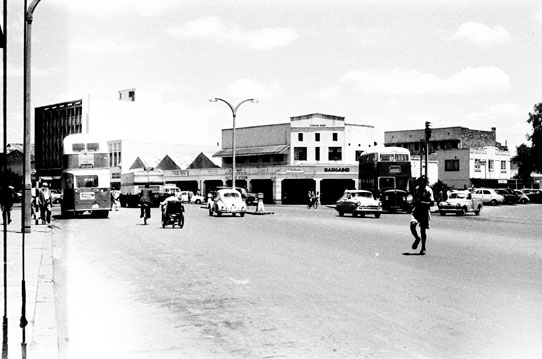
Corner Reata Road/Victoria Street (Courtesy JRSP)
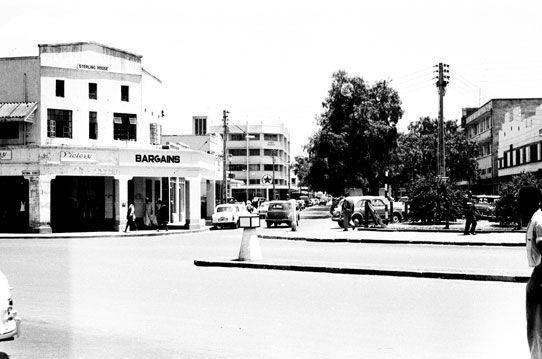
Another view of Reata Road (Remember Maru Bhajia (see below)on this road?) (Courtesy JRSP)
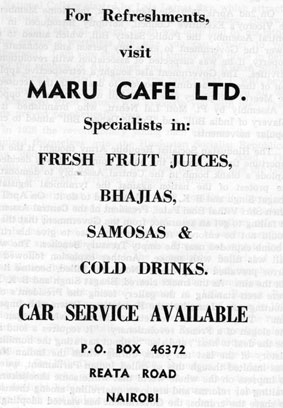
A 1972 Ad.
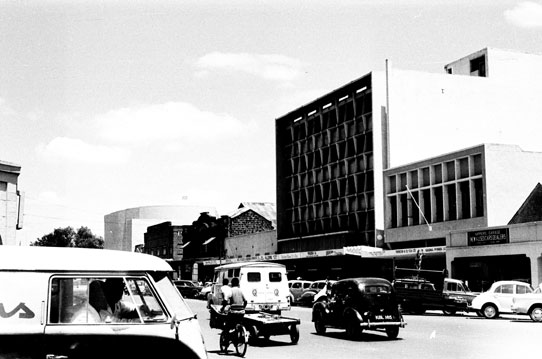
Victoria Street with Odeon Cinema (end of buildings) (Courtesy JRSP)
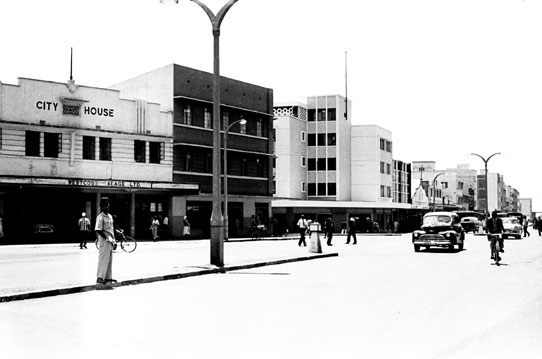
Westcobs Garage on corner of Reata Road & Victoria Street (Courtesy JRSP)
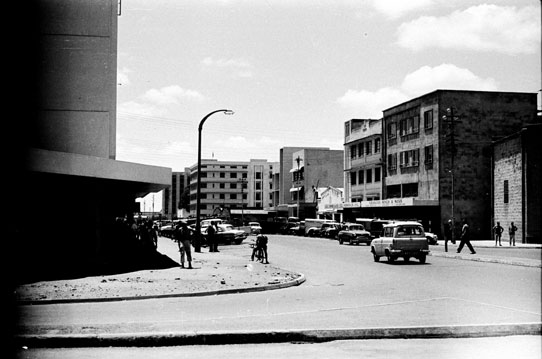
Victoria Street with Gill House in background -photo taken from Campose Ribeiro Avenue (Courtesy JRSP)
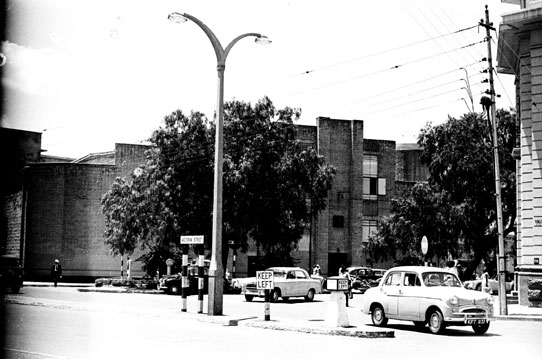
Capitol Cinema on corner of Victoria Street & Government Road (Courtesy JRSP)
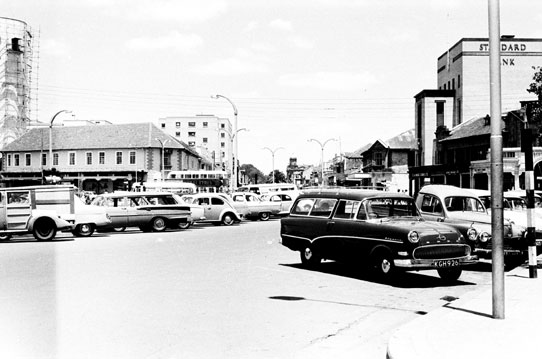
Another view of Government Road (Courtesy JRSP)
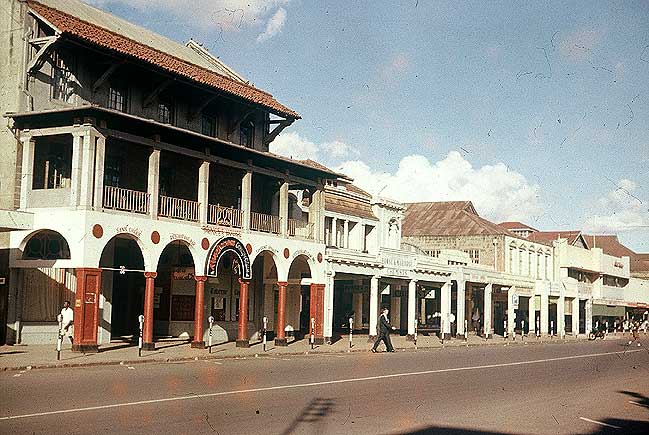
The Princess House on Government Road with Sans Chique Restaurant & Bar- nearby Howse & Mcgeorge Chemists, bit further Assanands, Taws Ltd. (kalamazoo) around 1960. (courtesy Martin Dixon -http://www.flickr.com/photos/24550621@N06/4338973486/in/photostream/
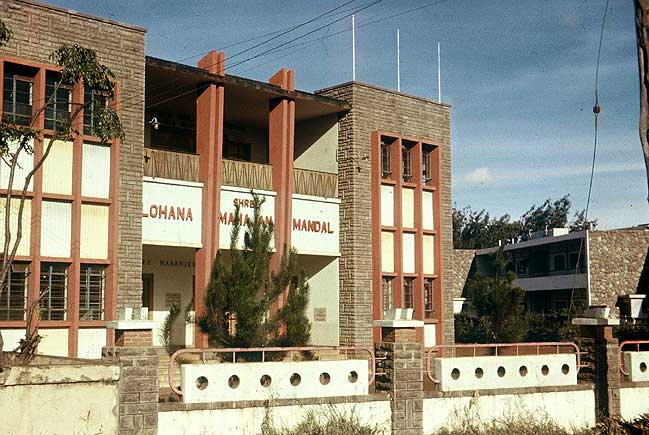
Lohana Mahajan Mandal, Nairobi (courtesy Martin Dixon -http://www.flickr.com/photos/24550621@N06/4338973486/in/photostream/
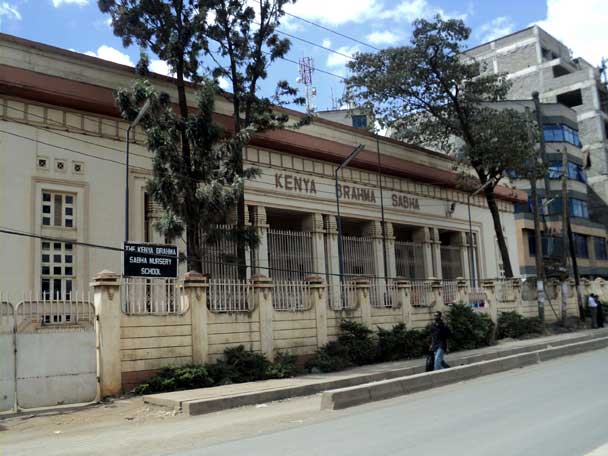
Kenya Brahma Sabha Hall on Forthall Road opposite City Primary School (2012)
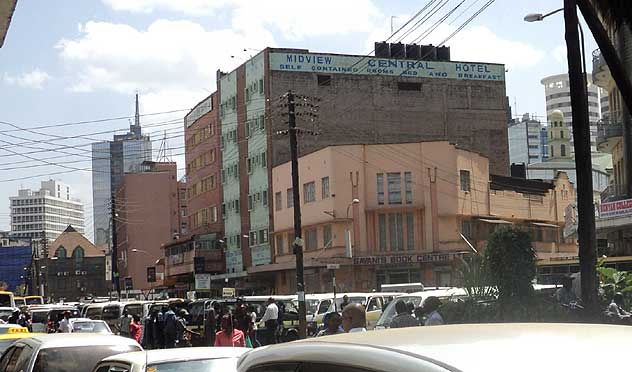
Old building of Kokani Muslims-corner of Latema Road and Bohra Road, opposite Embassy Cinema (2012)

The celebration of Uhuru (Freedom) 1963 (courtesy Ron Leese)
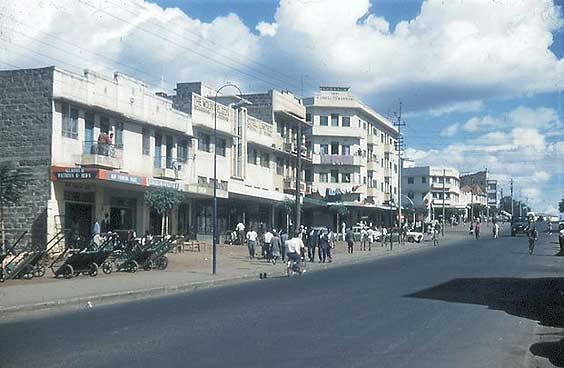
Racecourse Road leading to Ngara, Kariakor market & Eastleigh from Whitehouse Road, River Road & Grogan Road. (courtesy Ron Leese)
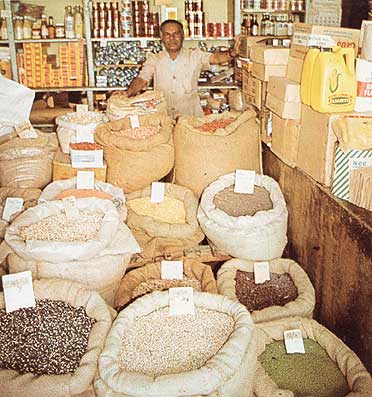
A typical ration shop (remember Gosar Parbat, Vaghji Pethraj etc.) [courtesy Through open doors]
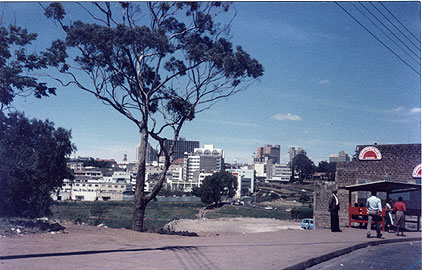
View from Ngara Hill going towards the Khoja Mosque etc.
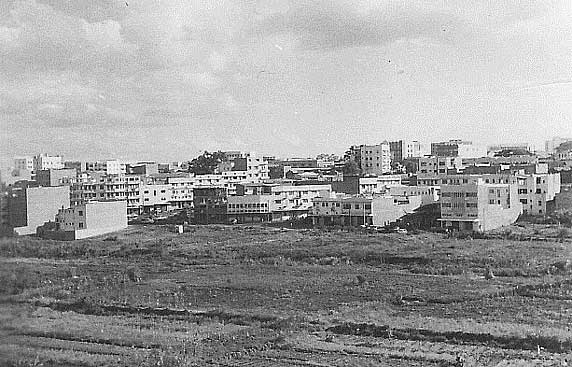
Grogan Road overlooking the Nairob River from Ngara top 1955(sent by Rajni Shah)
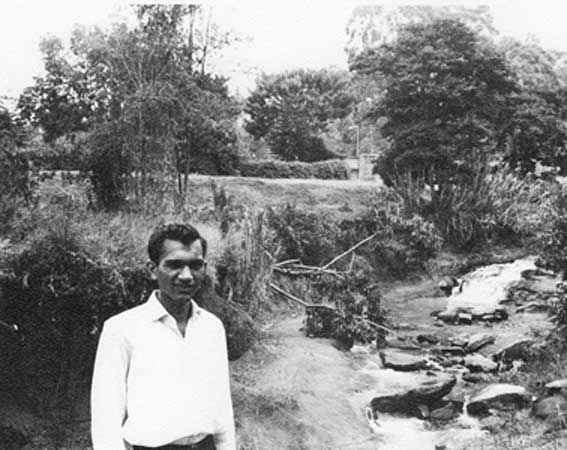
Nairobi River 1953. During rainy seasons it was very difficult to cross.(sent by Rajni Shah)
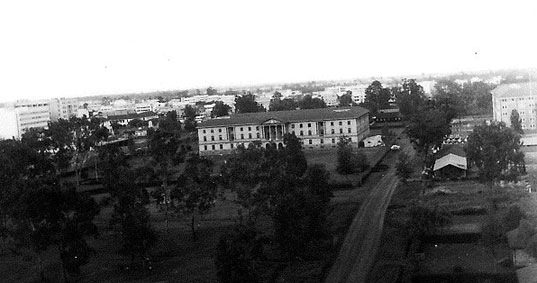
Law Courts 1955 (sent by Rajni Shah)
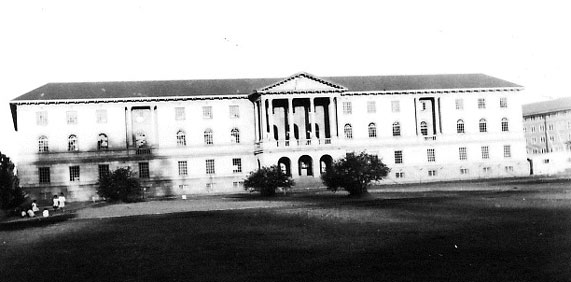
Law Courts 1955 (sent by Rajni Shah)
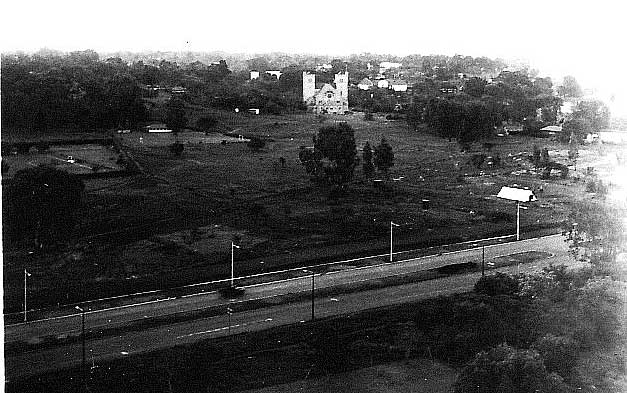
Uhuru Highway 1955 (sent by Rajni Shah)
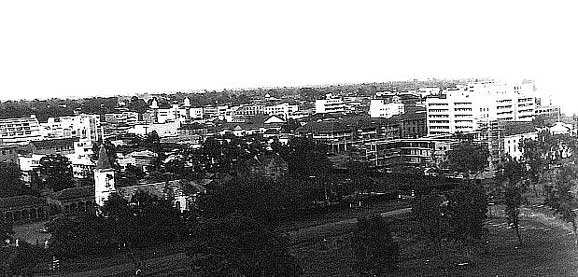
Nairobi panorama 1955[Nairobi city market and Jamia Mosque can be seen] (sent by Rajni Shah)
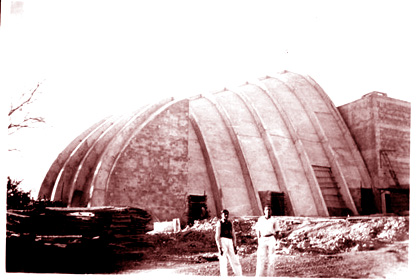
During the Construction of the Shan Cinema, Ngara, 1952. Mr. Shah of Haria Stamp Shop on right. (photo courtsey Pushpendra Shah- Haria Stamp Shop Indian Bazaar Biashara St. Nairobi)
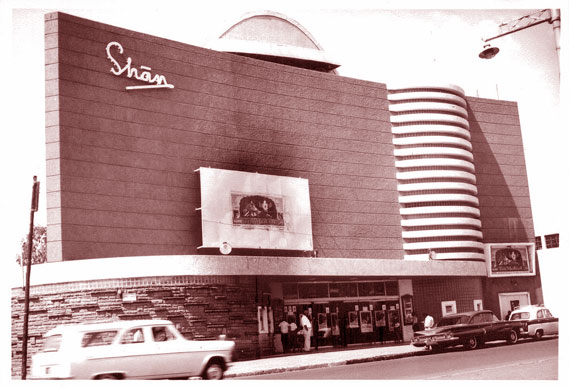
Shan Cinema Ngara 1963 - the film being shown is Taj Mahal. The first film shown in this cinema was AAN starring Dalip Kumar, Prem Nath, Nadira & Nimmi. (photo courtsey Pushpendra Shah- Haria Stamp Shop Indian Bazaar Biashara St. Nairobi)
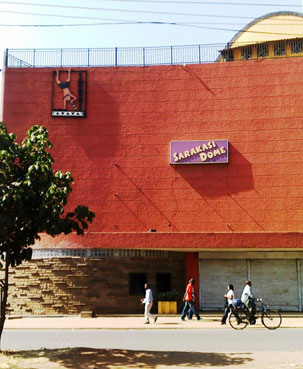
2011 Shan Cinema is now Sarakasi Dome (sent by Pushpendra Shah)
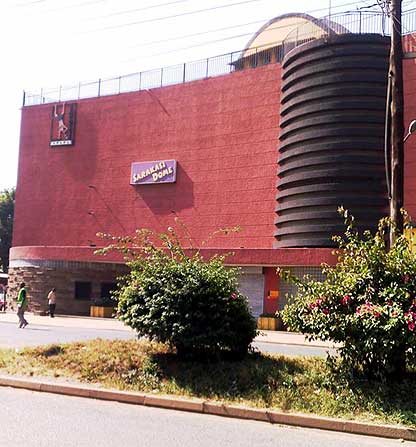
2011 Shan Cinema is now Sarakasi Dome (sent by Pushpendra Shah)
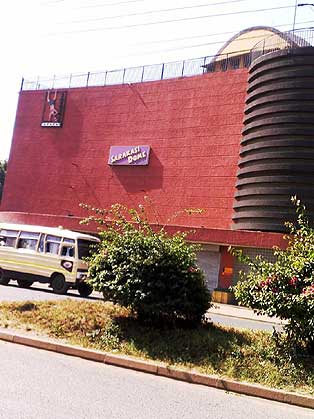
2011 Shan Cinema is now Sarakasi Dome (sent by Pushpendra Shah)
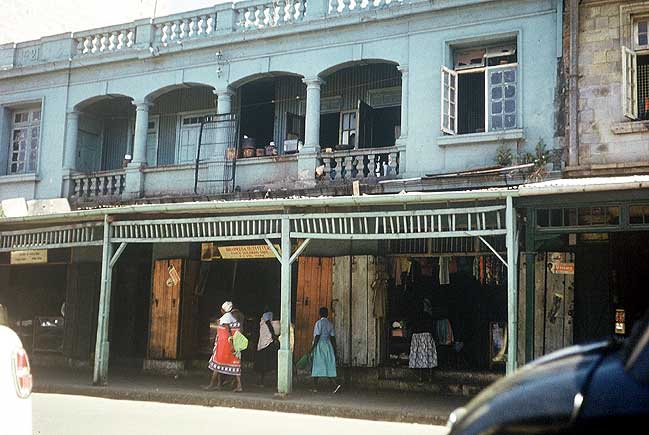
Shop of Bhadresa Outfitters on River Road -typical building (courtesy Martin Dixon -http://www.flickr.com/photos/24550621@N06/4338973486/in/photostream/
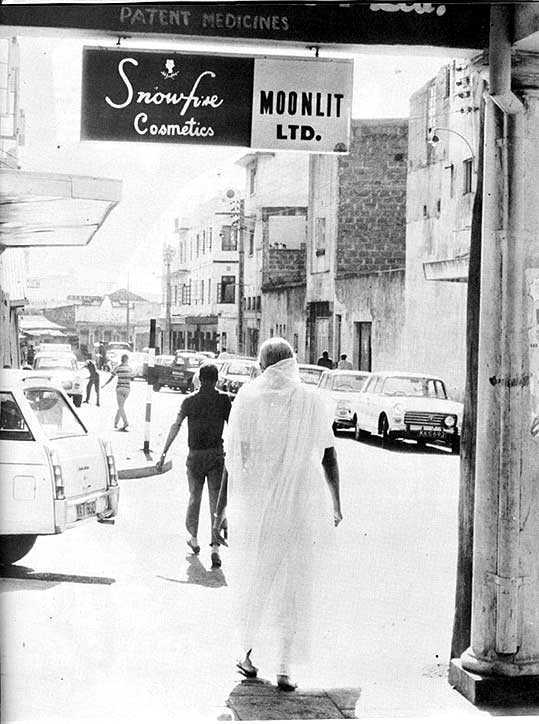
View of Varma Road corner of River Road from Moonlit Chemists near Casino Cinema (Formerly Film India Cinema)
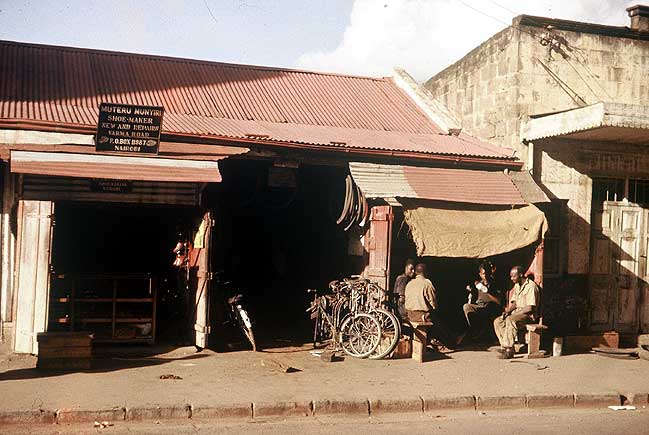
Shoe Shop of Muteru Munyiri and a cycle repair shop on Varma Road behind River Road 1960 (courtesy Martin Dixon -http://www.flickr.com/photos/24550621@N06/4338973486/in/photostream/
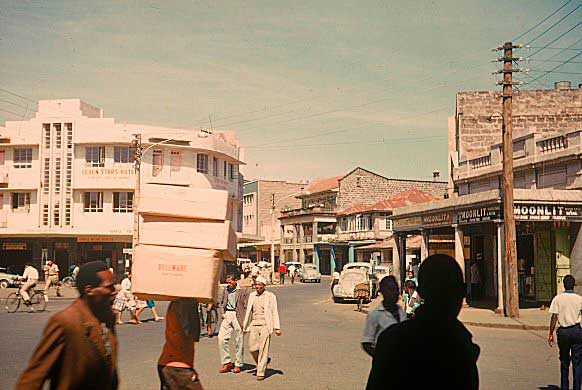
River Road in junction with Latema Road on left and Verma Road on right. Right of Moonlit Chemists about 50 yards was the Casino Cinema formerly Film India Cinema. (Photo courtesy the late Jim and Hilda Dixon-taken with thanks from http://www.mccrow.org.uk/eastafrica)
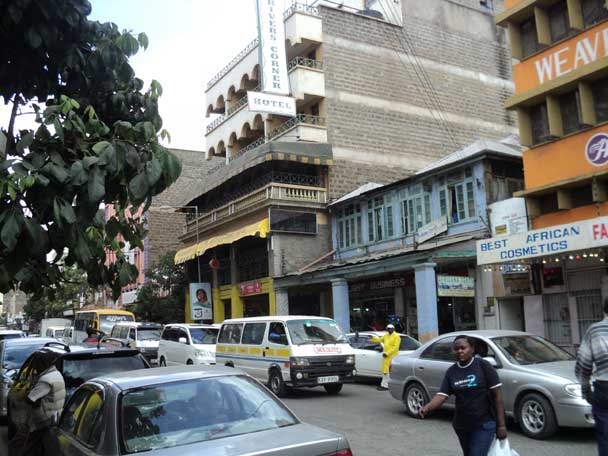
River Road in 2012 see above photo and compare same buildings
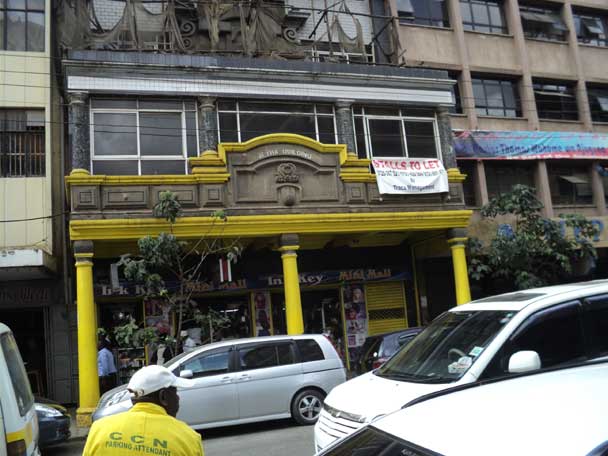
Mulji Jetha (one of the Indian pioneers) Building still intact in 2012 in River Road
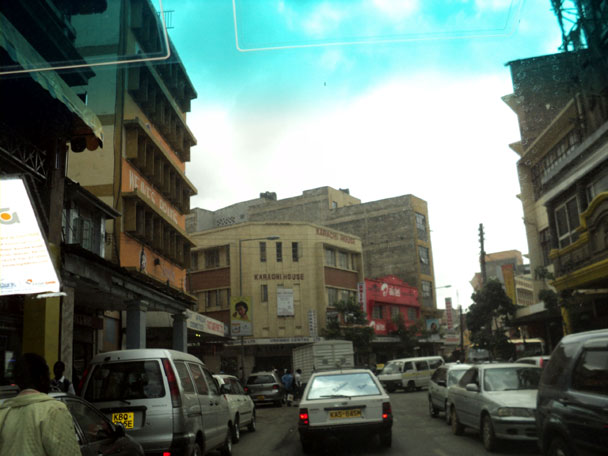
Karachi House on River Road opposite Latema Road 2012
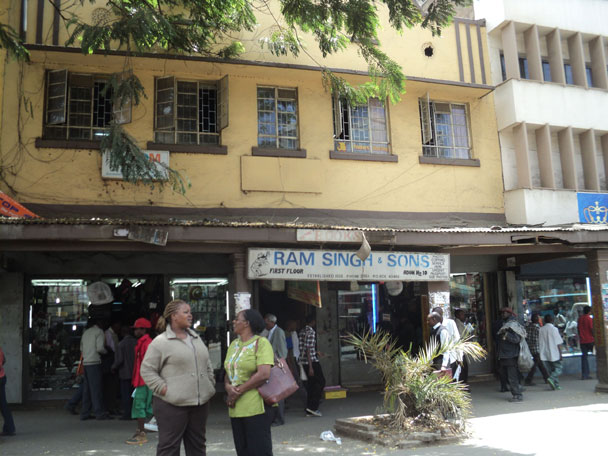
Ram Singh Photographers- the oldest Photographic firm in Nairobi still going strong 2012
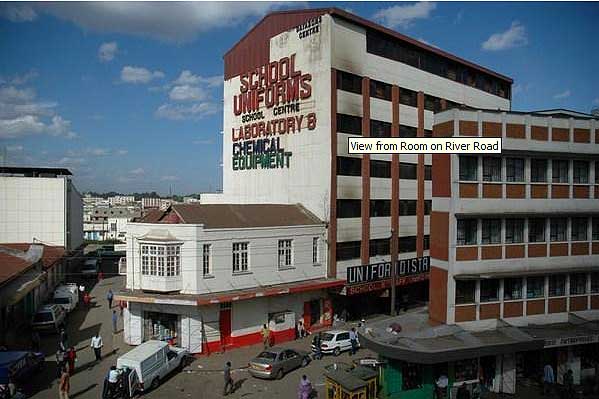
New premises on corner of Varma Road and road leading to Casino Cinema (extreme left)
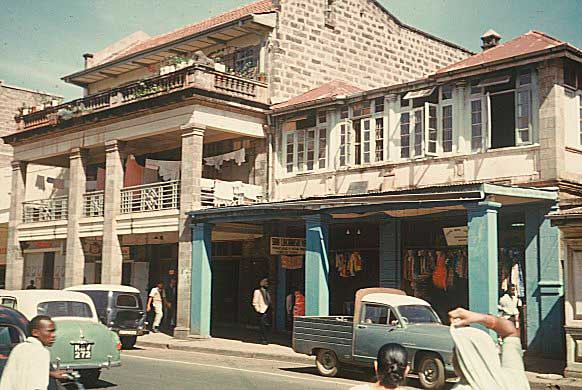
Another view of River Road (Photo courtesy the late Jim and Hilda Dixon-taken with thanks from http://www.mccrow.org.uk/eastafrica)
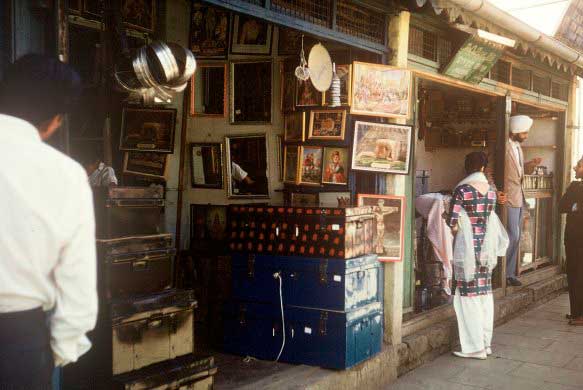
Indian Shops in River Road (Photo courtesy the late Jim and Hilda Dixon-taken with thanks from http://www.mccrow.org.uk/eastafrica)

Indian Bazaar from Khoja Mosque end. (Photo courtesy the late Jim and Hilda Dixon-taken with thanks from http://www.mccrow.org.uk/eastafrica)
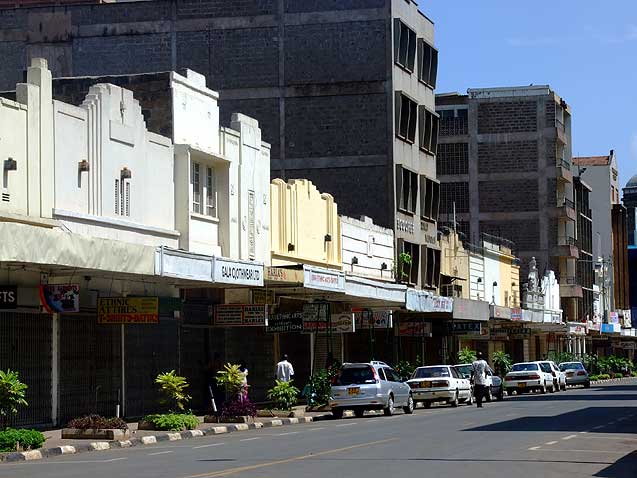
Biashara Street 2007 (Indian Bazaar)
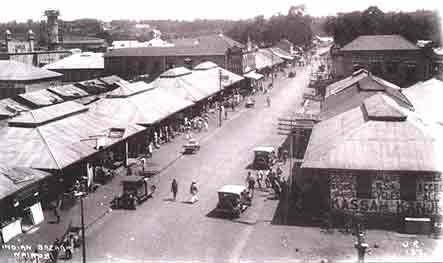
Indian Bazaar around 1930's
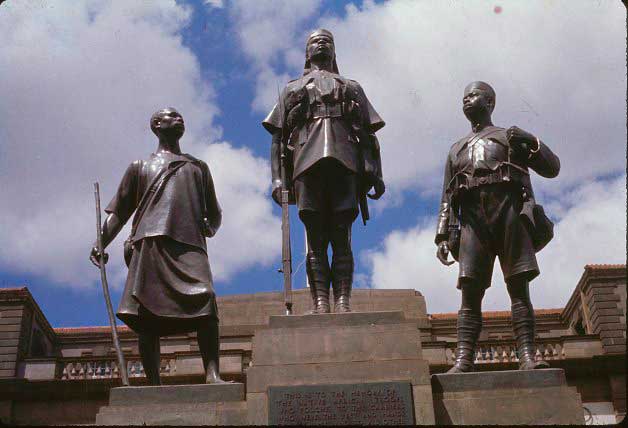
African War Memorial opposite Standard Bank on Delamere Avenue (Photo courtesy Geoff Pollard-taken with thanks from http://www.mccrow.org.uk/eastafrica)
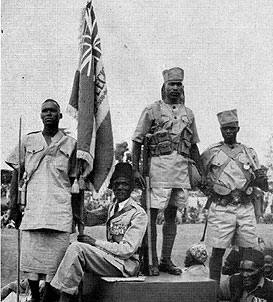
At the ROYAL Show in 1958 -A 'living statue' depicting the 1914-18 War.
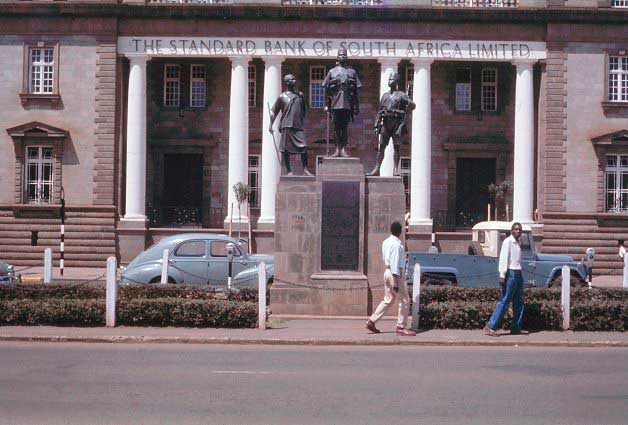
See above. (Photo courtesy Geoff Pollard-taken with thanks from http://www.mccrow.org.uk/eastafrica)

The unveiling of the ASKARI WAR MEMORIAL (above) on Delamere Avenue by H.R.H.The Princess Victoria in the presence of the Governor of Kenya, Lt. Col. Sir Edward Grigg, in 1927 (photo courtesy Nigel Pavitt)
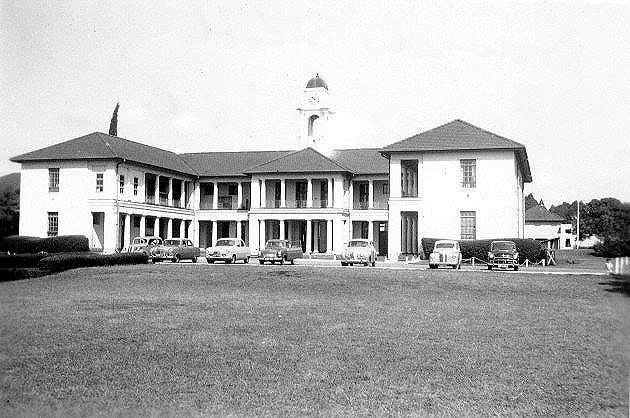
Prince of Wales School Nairobi 1956
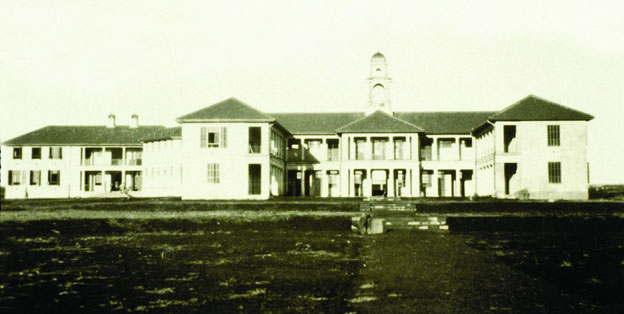
Prince of Wales School 50's

An early photo of the Duke (courtesy Suniti Mohindra http://exdogs57.org/)
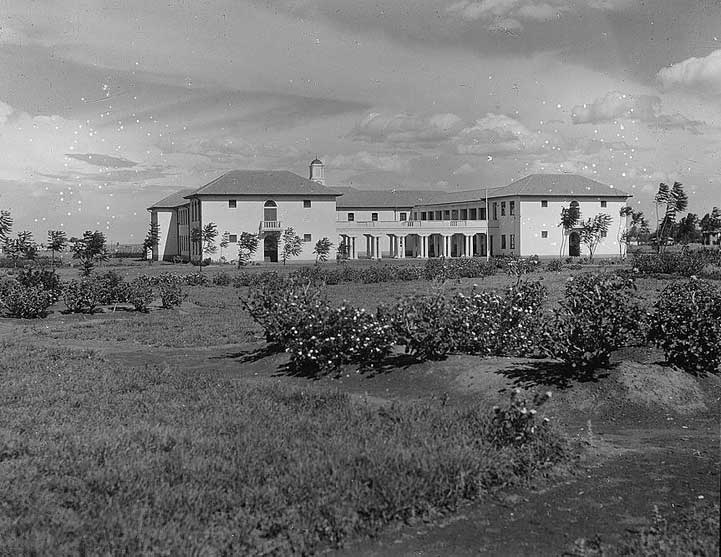
Indian High School, later Asian High School and now Jamhuri High School (sent by Rajni Shah)
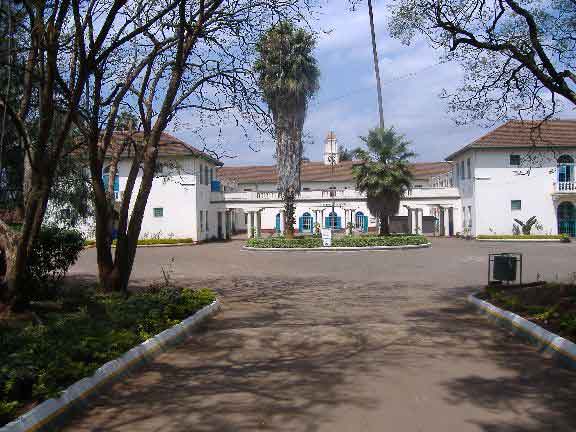
The Duke of Gloucester School Nairobi, founded as a Railway Educational Centre in 1906, became the Government Indian School and then in 1955, after the presentation of the 'City' charter by the Duke of Gloucester in 1950, took his name. Now called Jamhuri High School
Trade has become the characteristic by which the ASIAN community and culture of Kenya is best known. Brought into Kenya to build the "lunatic" Uganda Railway towards the end of the last century, the Asians eventually emerged as a commercial community. Yet there have been peoples of Asian origin in East Africa long before the British conceived of the railway. There may have been people of Indonesian descent on the coast almost one thousand years ago (their influence, in the form of comestibles, is very evident and widespread today-, bananas and coconuts are two of their comestible contributions in common use). There was direct trade with India and indirect trade with China centuries ago. Indian communities, both Hindu and Muslim, existed in the larger towns on the coast in the early years of the nineteenth century—and long before that, well in advance of the later influx of Indians after the Zanzibar Sultanate was established. It was Sultan Seyyid Said, however, and not the British Foreign Office, who was responsible for introducing the Indian trader into East Africa, when the Sultan moved his capital from Muscat to Zanzibar.
According to the most recent Census (1979), the Asian population of Kenya is 139,000, of whom about 61,000 are citizens. The first large influx into Kenya occurred during the last years of the past century. The British imported and employed a total of 32,000 Indian "coolies" for the construction of the Kenya-Uganda Railway. It was in 1896 that the initial 350 arrived in Mombasa, and- the modern history of the Asian Indian in Kenya may be said to have begun with their arrival. Of the total of 32,000 who were imported, 6000 elected to remain after the construction of the railway had been completed; the Indian Government had stipulated that every labourer must have the choice either to remain or to return at the conclusion of his contract.
One-third of the 6000 Indians who elected to remain continued to be employed by the railway. Since Indians were denied land rights, the others could survive only by becoming traders. A very small minority had amassed fortunes as railway contractors and builders and were well-established, but the vast majority were not far from poverty when they embarked upon their careers as petty traders. In effect, racial discrimination forced most of those Indians into trade; exclusion from farming in the highlands left them with little alternative. For a long time their settlement in town areas was segregated as well.
But the position of the Indian in Kenya was not entirely that of a victim of British exploitation. A leader of the Greater India Movement envisioned not only Kenya but all of East Africa as a future "cultural colony" of a Greater India. Others advocated the annexation of Kenya to the Indian Empire. The Indian Congress in Kenya visualised a Kenya which would be Indian-administered, and saw a parallel between such an administration and that of the Dutch administration of South Africa. Even the Aga Khan proposed that East Africa be set apart for Indian colonisation.
They never realised the ambition of becoming a part of Greater India, a cultural colony, or an Indian-administered political entity. They did, however, come to control most of the retail trade of Kenya, and did, as a result, come to be a kind of economic colony of India, since so much of the money was sent back there. Yet it was not by trade alone that the Indians succeeded in Kenya. The trains ran because of them, because they drove them, worked as signalmen and were station-masters. And the assorted Indian communities contributed their assorted skills in sectors other than that of trade and transport.
Assorted indeed is the Indian population of Kenya, and still is, although since the 1947 partition of India, the Indians officially have been referred to as Asians. The Asians are comprised of the following communities: the Hindus, numerically the largest, who in turn are comprised of various castes and sects; the Sikhs—or Singhs, as they are commonly called, the men readily distinguishable by their peaked turbans and fast cars; the Goans, Roman Catholic, originating from the former Portuguese colony of Goa and recognisable by their Portuguese surnames; and the Muslims, numerically the second largest, most of them Shias (rather than Sunnis) and members of either the Ismaili Khoja, the Bohra or the Ithna'ashri sects.
Assorted are the skills of these communities. For example, in addition to trade, the Muslim Bohras also utilised their skills in iron mongering, tin smithing and watchmaking. The Goans have contributed skilled clerks both to government and to private enterprise, and, through the years, outstanding musicians to the Nairobi Orchestra. The Sikhs, originally valued by the British for their martial attributes, became better known as fun-dis—mechanics, in particular. But such stereotypes no longer do to describe the Asian communities. Law, medicine and other professions abound with peoples of Asian origin today. They have exploited their self-made educational opportunities fully (through the creation of their own school systems within the British educational structure).
Diverse and rich in the cultures which they continue to maintain in their essential elements, the Asians have been of no essential cultural influence in Kenya. The Asian communities have been self-contained and en-digamous. While nurturing their own cultural heritage, the Asians have been impervious to the cultural influences of their African neighbours. There has been no significant cultural diffusion in either direction. So the sum of Asian influence in Kenya has been limited to the sectors of trade and technical expertise, and that within the wider sphere of European influence rather than that of African. (Courtesy Peoples & Cultures of Kenya)
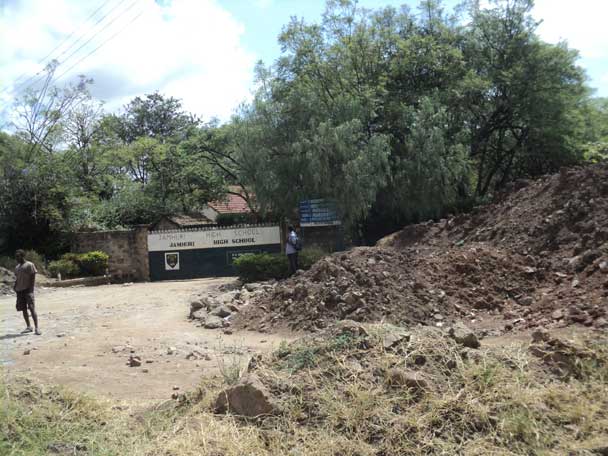
Entrance to Jamhuri High School 2012

A cart puller on road
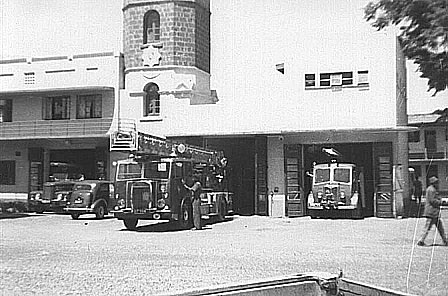
Fire Station on Victoria Street Nairobi 1954 (courtesy Ron Leese)
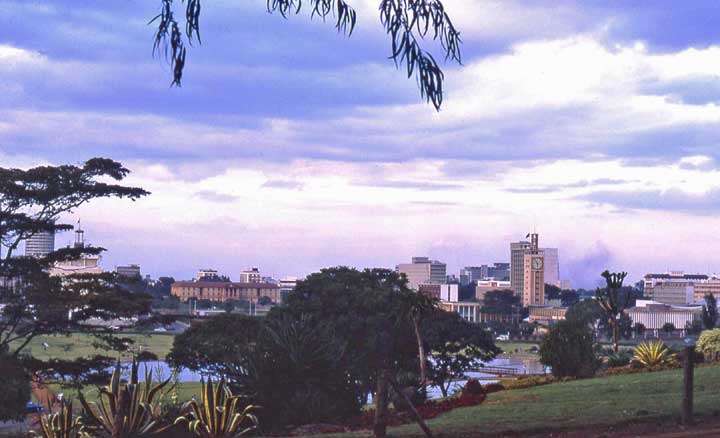
Nairobi 1969 (sent by Ron Bullock)
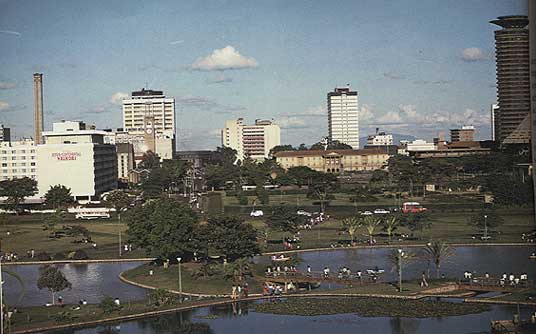
Nairobi from Uhuru Park - 1983 (courtesy 'The Kenya Magic' )
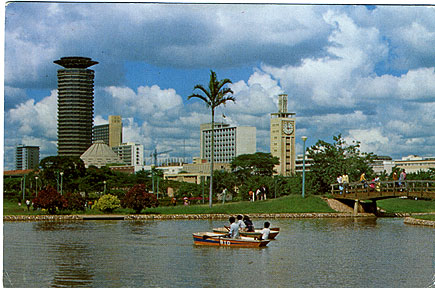
Uhuru Park (named Cutchhi Park) around '76
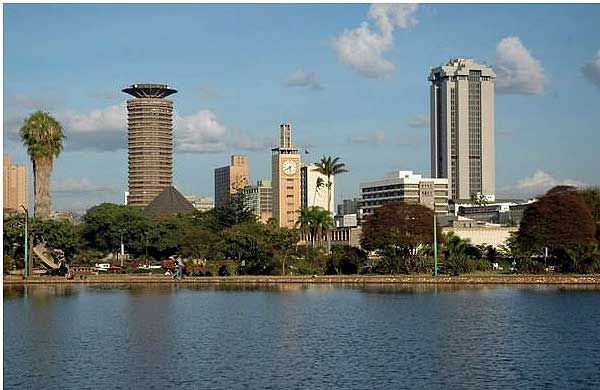
Modern Nairobi from Uhuru Park
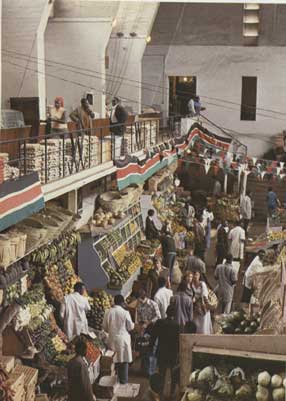
Scenes in the Nairobi market (courtesy 'The Kenya Magic' )
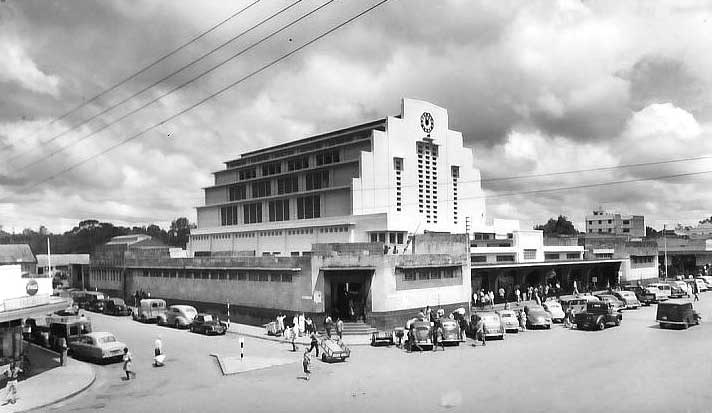
Municipal Market around 1950 (Sent by Rajni Shah)
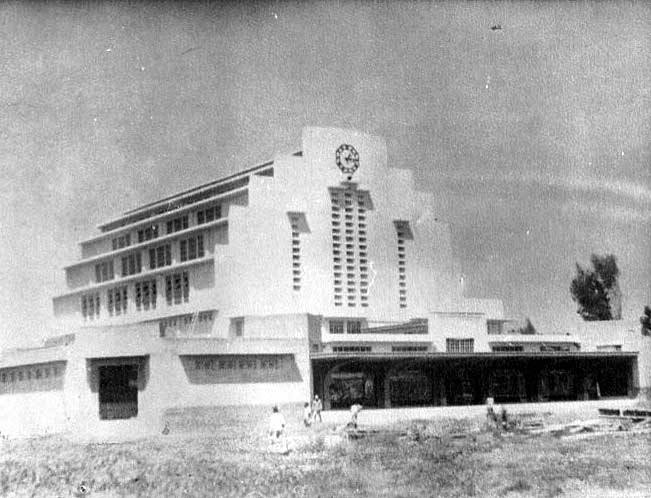
Municipal Market (sent by Rajni Shah)

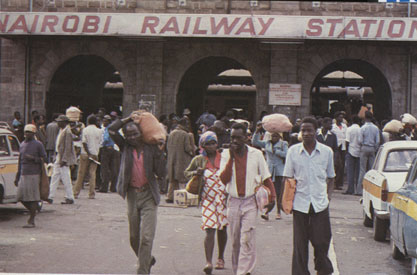
Scenes at Nairobi Railway Station (courtesy 'The Kenya Magic' )
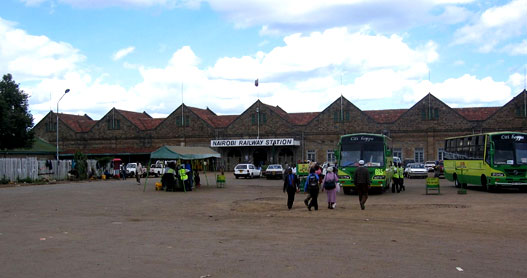
Nairobi Railway Station
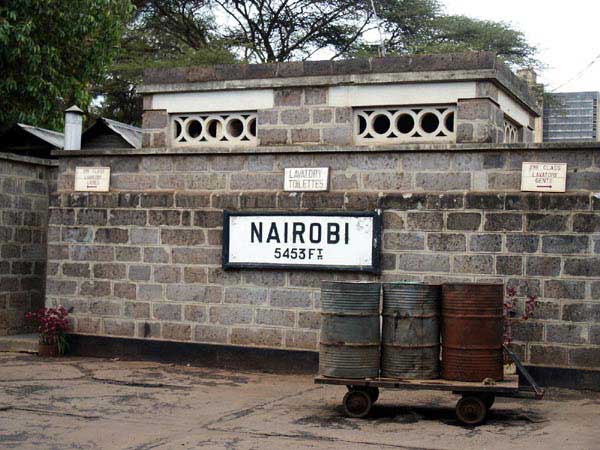
Nairobi Railway Station Toilets showing height above sea level of Nairobi
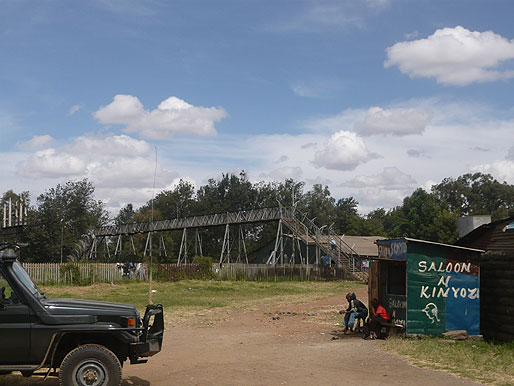
The Railway Foot Bridge from Station side to the Railways quarters (landhies) side. See the barber shop at the right!!!
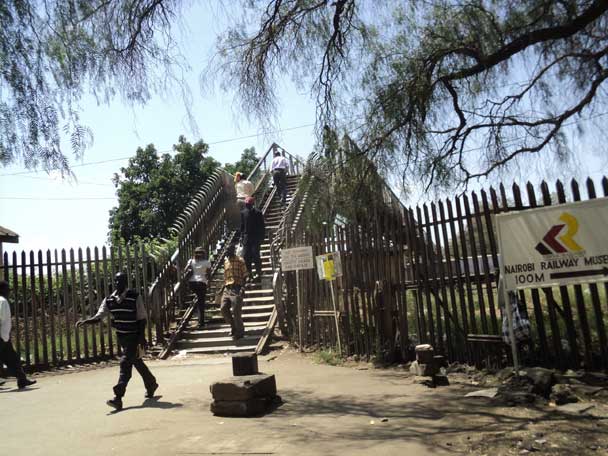
Railway Foot bridge from the station side end 2012

Ariel view of Government Road (Moi Ave) with the Khoja Mosque extreme top right 1983 (courtesy 'The Kenya Magic' )

Law Courts nairobi (Courtesy JRSP)
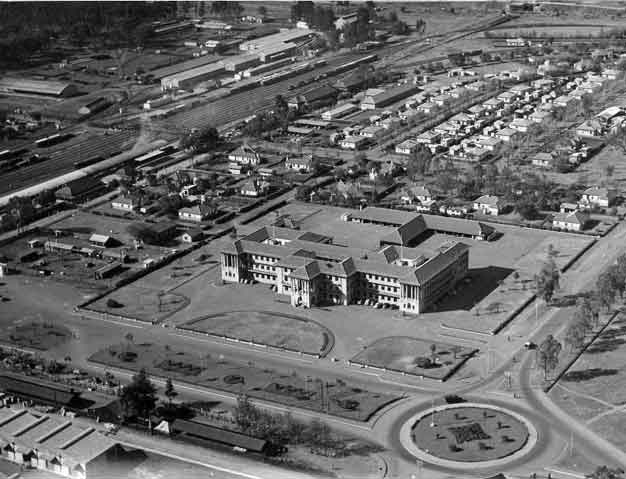
Nairobi Law Courts -around 1925/35 (sent by Pushpendra Shah)
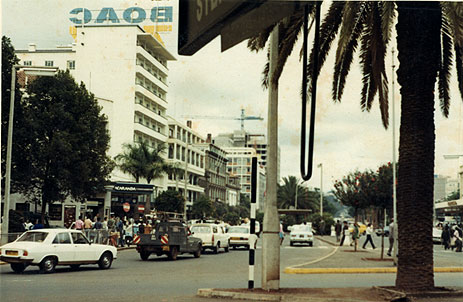
Delamere Avenue from Regal Mansion Govt. Road 1975
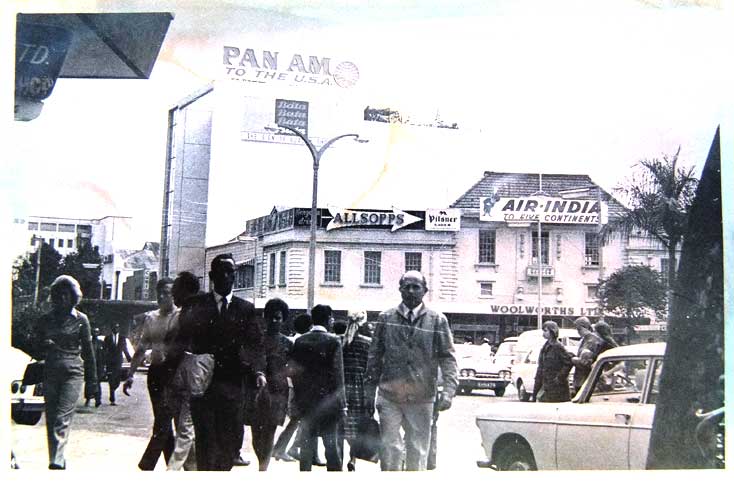
Woolworths Ltd from New Stanley Hotel around 1971(sent by Bhargav Mistry)
Now see below same location 2011 (sent by Pushpendra Shah)
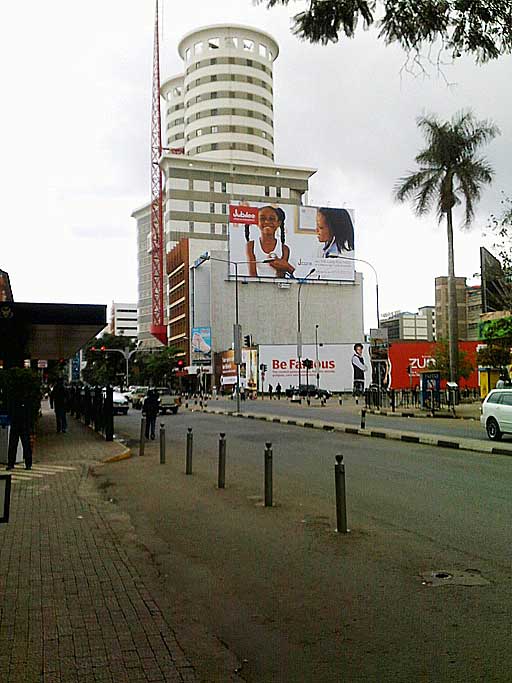
Woolworths building called Nakumat was destroyed in a fire and not rebuilt. Next door Alibhai Shariff, the Iron Mongers still there. - With The advertisement.
Then it is Victory House
The Big round TWIN TOWERS of Nairobi are the Nation Centre - The Nation Newspapers.
. This photo taken from Kimathi Street by Pushpendra 2011
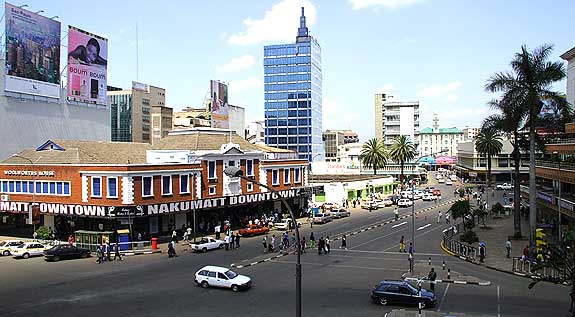
Nakumatt - Woolworths destroyed by fire -see picture on top
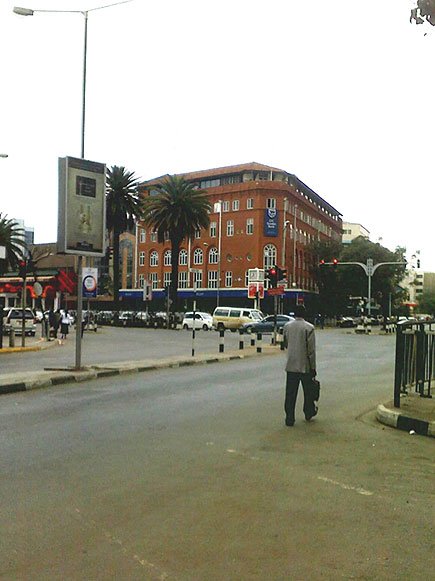
The brown building which is now Stanbic Bank ( South African ) is what used to be Torrs Hotel Opposite Woolworths Ltd. This photo taken across the road opposite Sarova (New stanley) Hotel.(sent by Pushpendra Shah 2011)

The Hilton Hotel from Stanley Hotel around 1971 (sent by Bhargav Mistry)
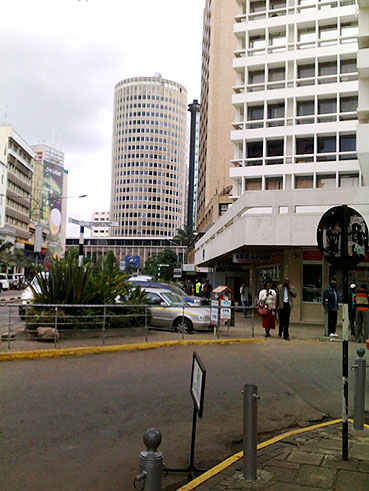
Facing the Hilton - the shop on the right is Ebrahim Camera House.(sent by Pushpendra Shah 2011)

Kimathi Street & Hilton 80's (sent by Ashwin Bahl)
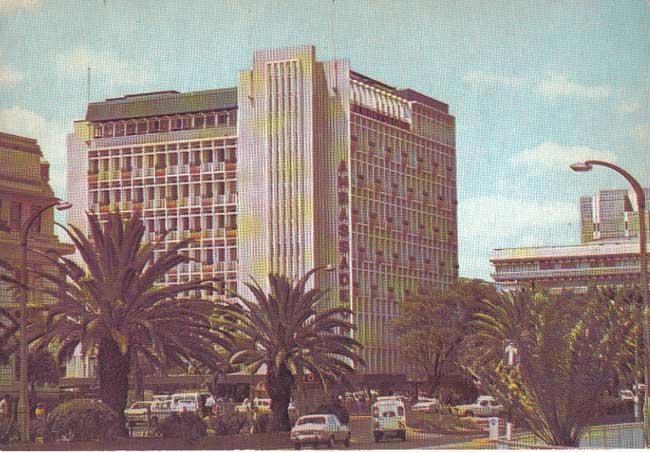
Ambassadeur Hotel (sent by Avinash Bahl)
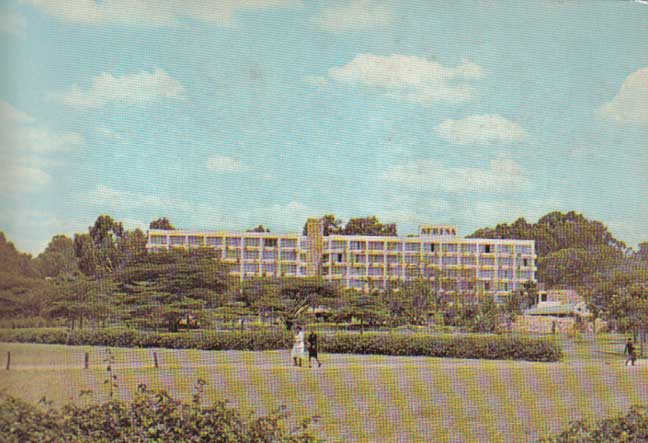
Serena Hotel (sent by Ashwin Bahl)
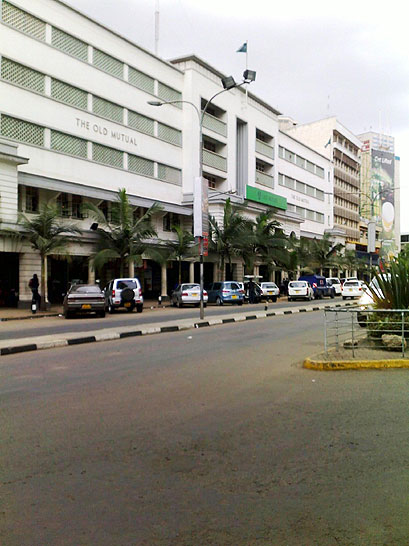
The old mutual building on Kimathi Street leading to the Hilton (sent by Pushpendra Shah 2011)
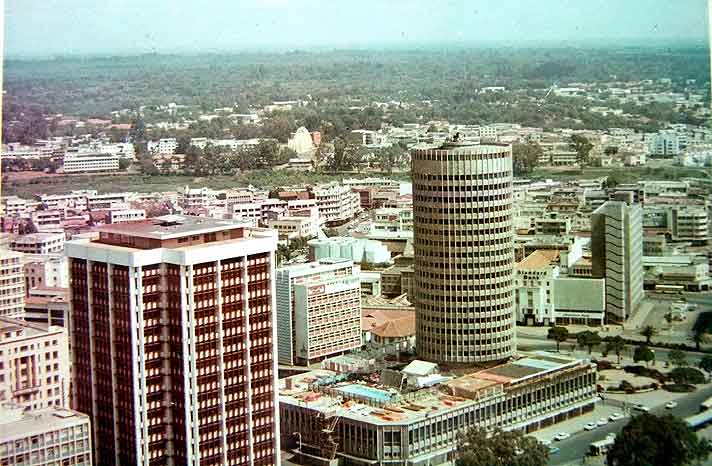
Hilton and the surrounding buildings snapped from the Kanu HQ building around 70's (sent by Bhargav Mistry)
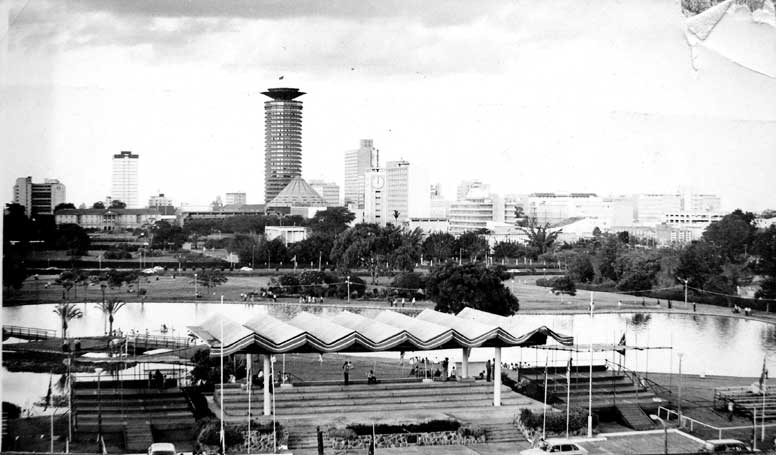
Skyline of Nairobi from Uhuru Park around 1970's (sent by Bhargav Mistry)

Photo taken from Uhuru Park Hill showing the Parliament House and other buildings around 1970's(sent by Bhargav Mistry)
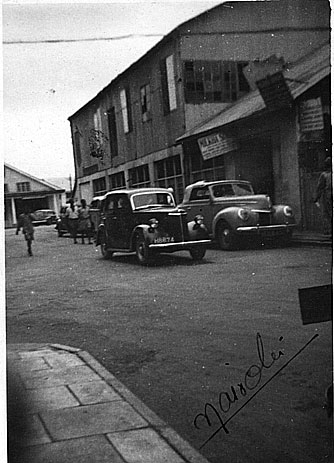
Nairobi around 50's - Prominent Firm of Milkha Singh Cushion Makers can be seen
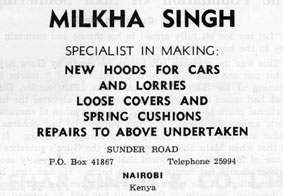
Ad 1972
Asd 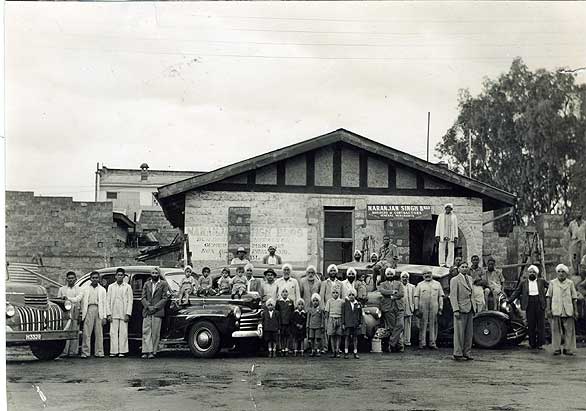
Quaint premises of M/s Naranjan Singh Bros (Building Contractors) with management & staff on Kingsway near Police Station 1951
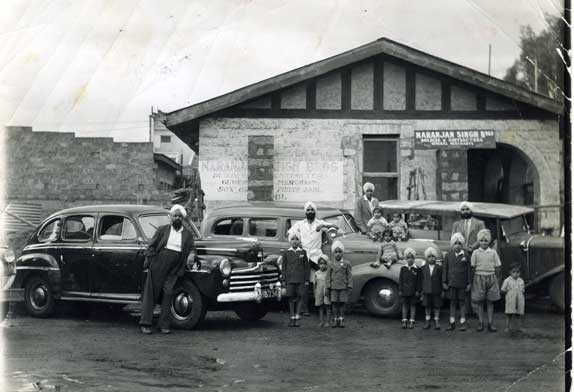
Another photograph of the directors of M/s Naranjan Singh Bros. Puran Singh, Kala Singh & Mohan Singh Alderman 1951
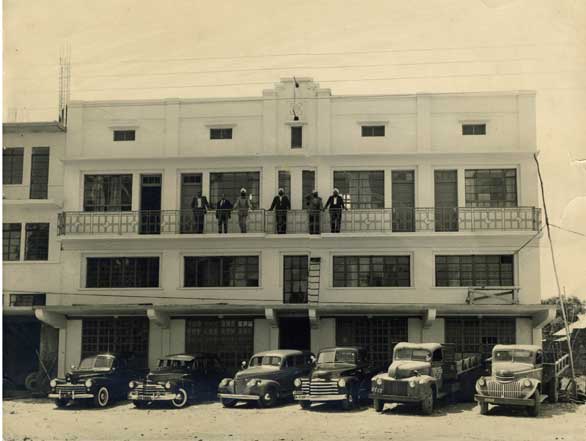
Avon House built by Naranjan Singh Bros. later premises of M/s B.S.Mohindra & Co. See the cars! Ford Mercury, Cheverolet & Dodge trucks 1956

Sir Philip Euen Mitchell in Kenya, talking to tribal chiefs in 1952
Mitchell was Governor of Kenya from 11 December 1944 until 1952. In February 1952, he received Princess Elizabeth on a visit just before her father died and she ascended the throne as Queen Elizabeth
The Royal Agriculture Show was held in honour of the Queen and the park was named after Sir Mitchell – Mitchell Park. Also known as the Mitchell park show.
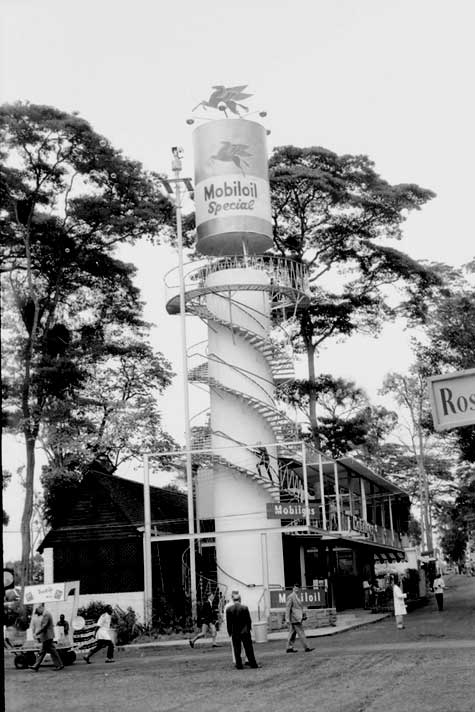
Mobil Oil stand at the Royal Show 1952/54 (sent by Rajni Shah)
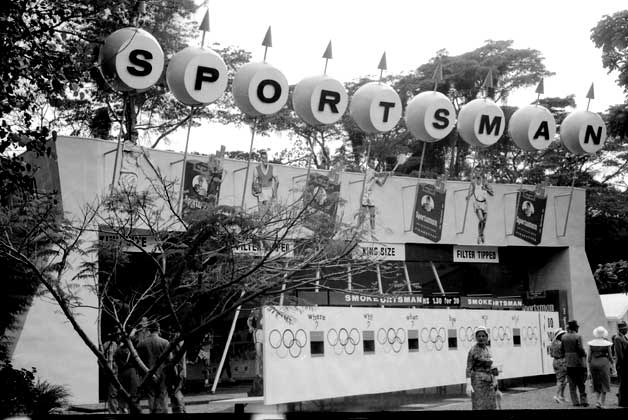
Sportsman cigrettes stand (sent by Rajni Shah)
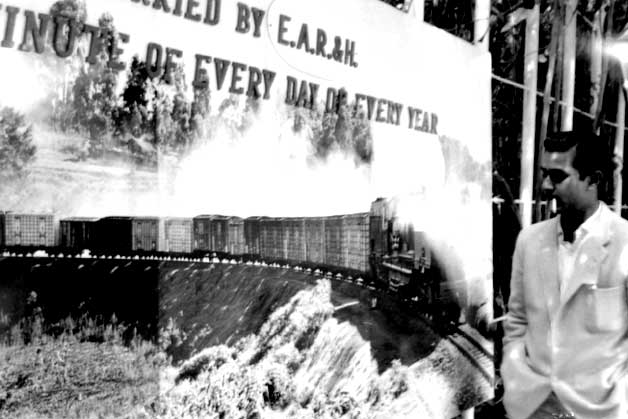
Stand of Eat African Railways & Harbours (sent by Rajni Shah)
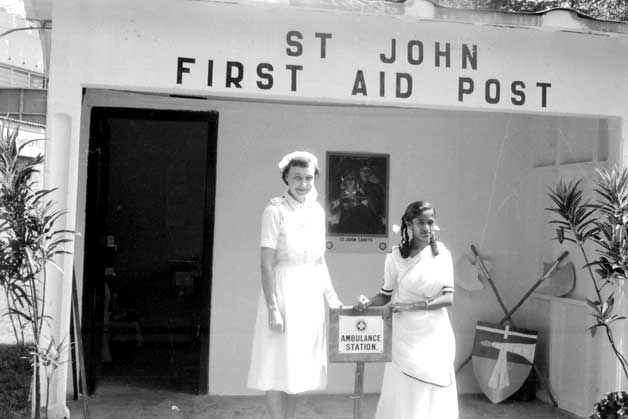
St. John Ambulance at the show (sent by Rajni Shah)
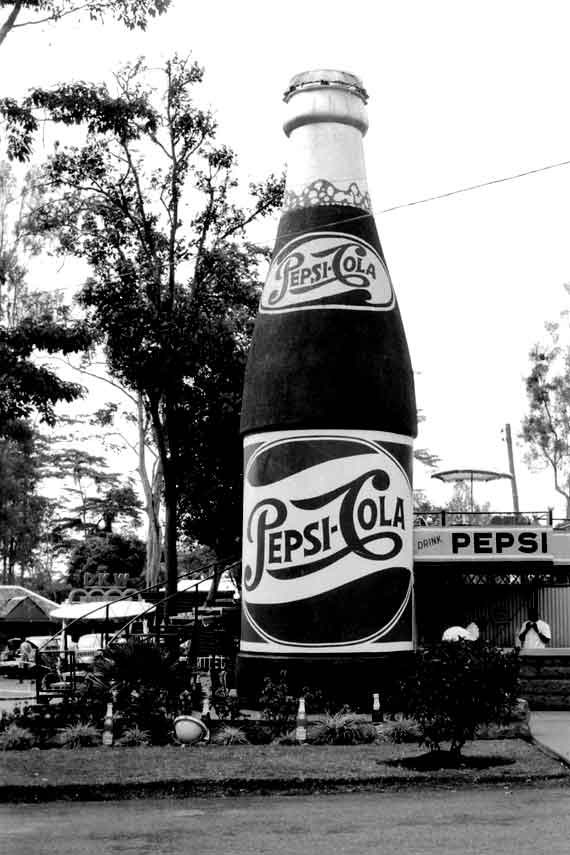
The giant bottle of Pepsi adorns its stand (sent by Rajni Shah)
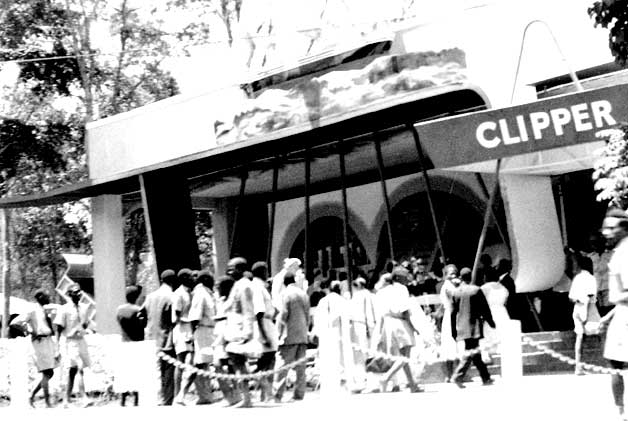
Clipper Stall 50's(sent by Rajni Shah)
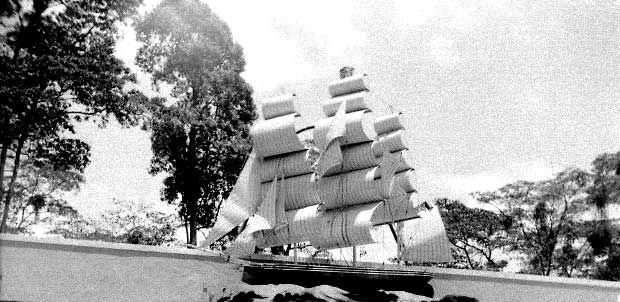
The clipper on top of the stall (sent by Rajni Shah)
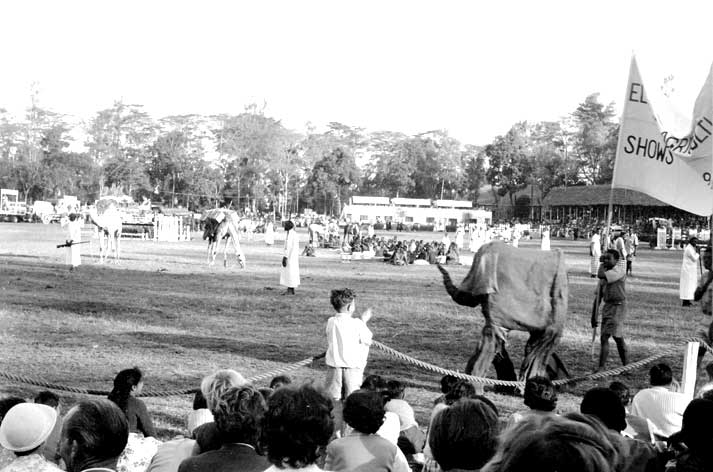
The Arena at the show (sent by Rajni Shah)
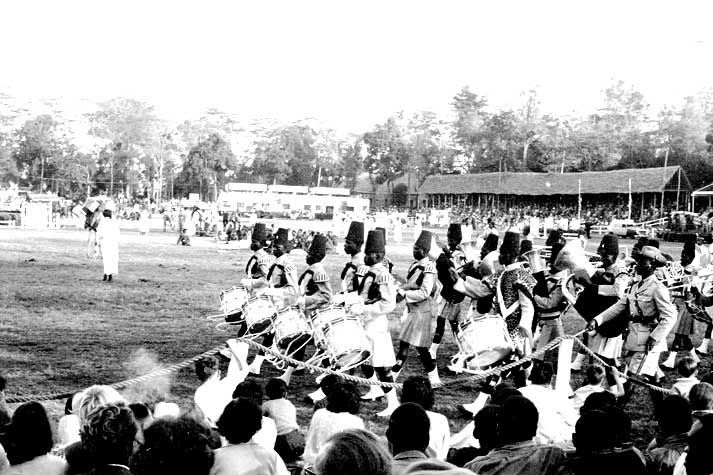
Kenya African Rifle band at the arena (sent by Rajni Shah)
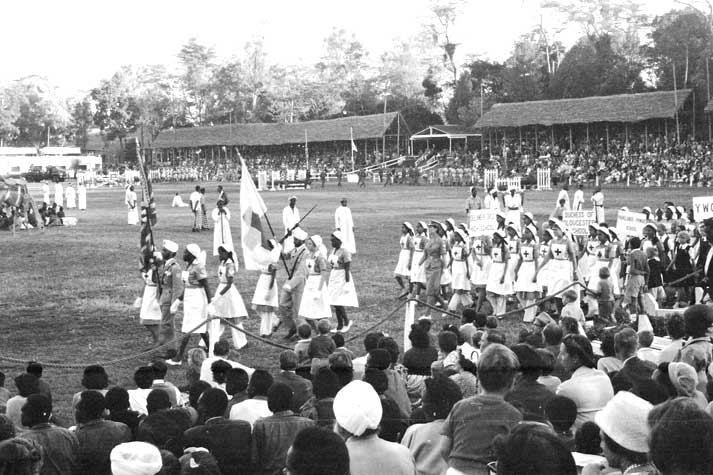
St John Ambulance parade (sent by Rajni Shah)
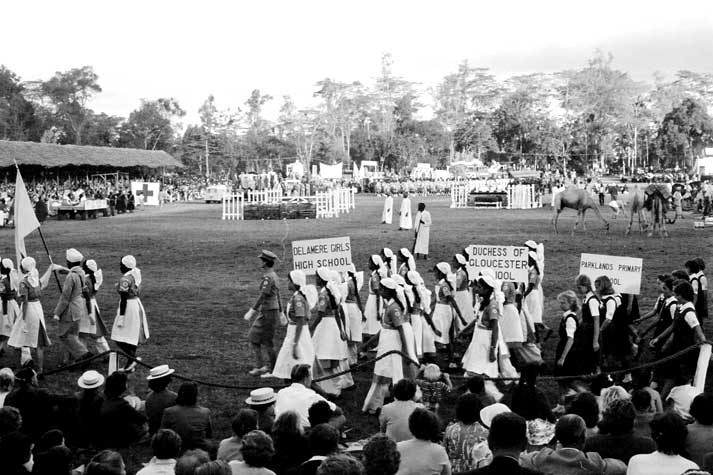
Girls Schools parading (sent by Rajni Shah)
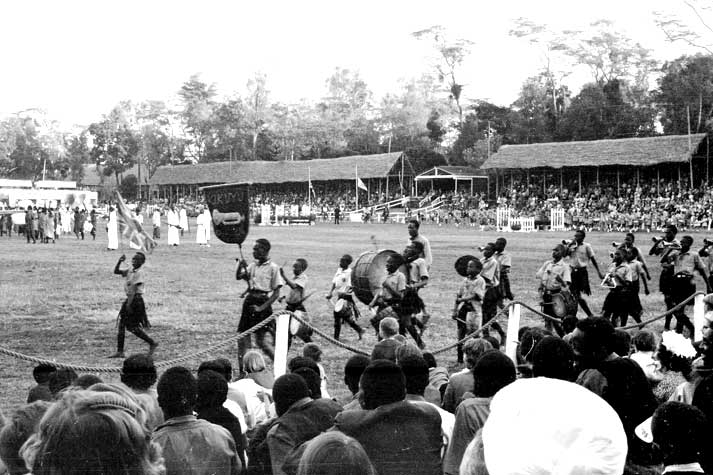
Schools parading (sent by Rajni Shah)
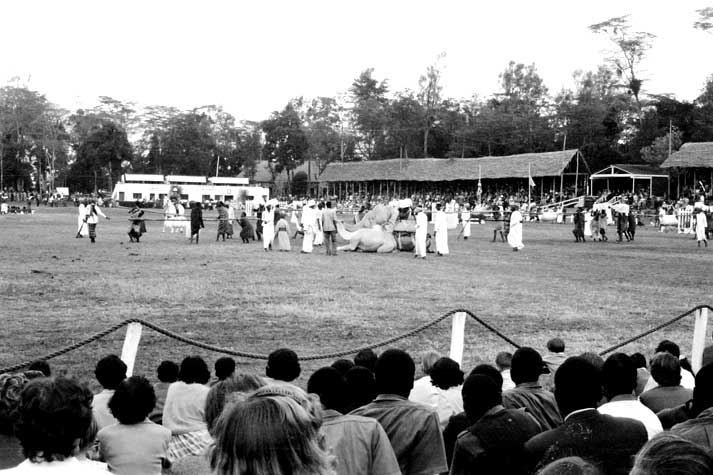
Programmes at the show (sent by Rajni Shah)
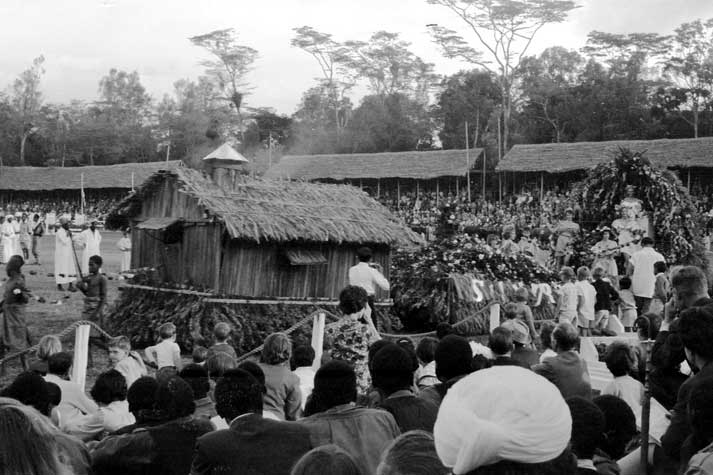
Interesting programmes were always a good sight in the arena of the show (sent by Rajni Shah)
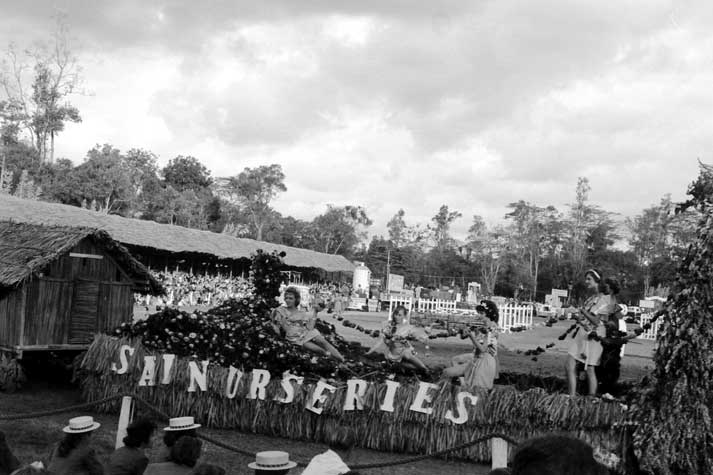
The float of Sai Nurseries (used to belong to an Asian)(sent by Rajni Shah)
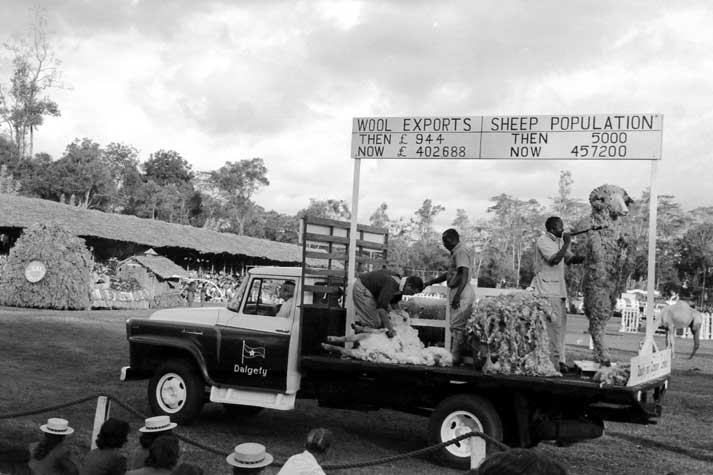
The shearing of the sheep (sent by Rajni Shah)
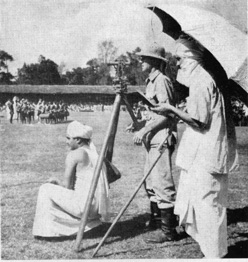
Depicting the 'Survey' of the Uganda Railways at the Royal show 1958
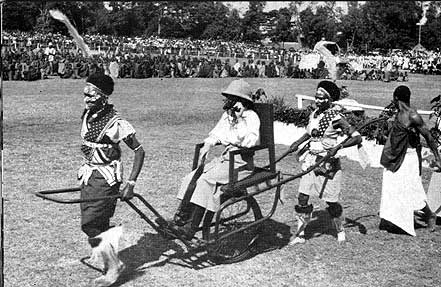
Early traveller being carried on a 'monowheel' chair (royal show 1958)
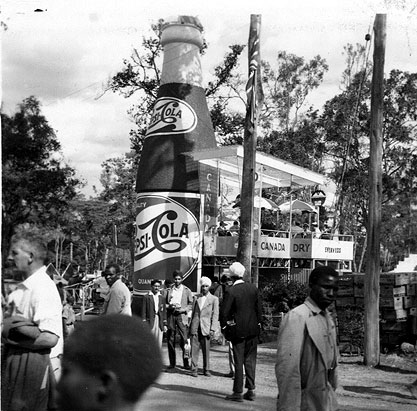
A large bottle of Pepsi Cola stands in front of the Pepsi stand at the 1958 Royal show
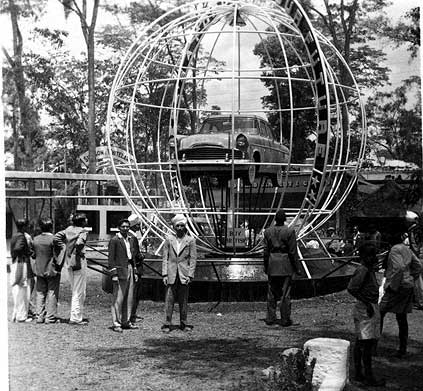
A Ford Cortina in a globe at the Ford stand

Royal Show at Mitchell Park 1956 sent by Rajni Shah)

Canada Dry stand at the Royal Show 1956 (sent by Rajni Shah)
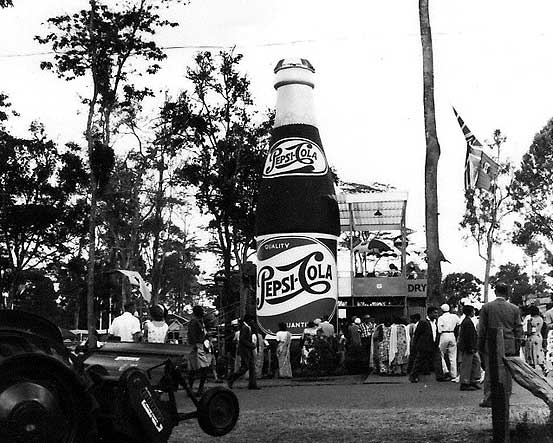
Pepsi stand at the Royal Show 1956 (sent by Rajni Shah)
ROYAL SHOW AFTER UHURU WAS CALLED AGRICULTURE SHOW
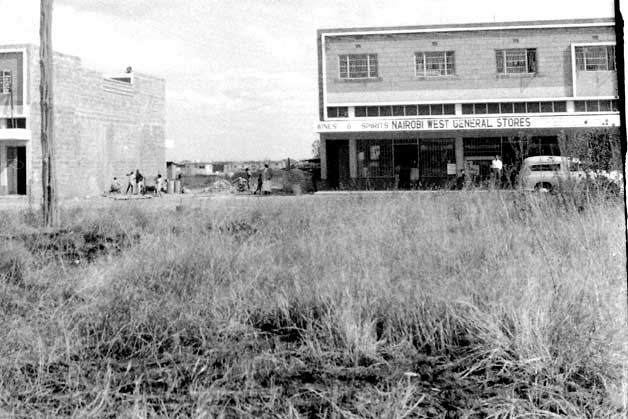
Nairobi West during the fifties (sent by Rajni Shah)
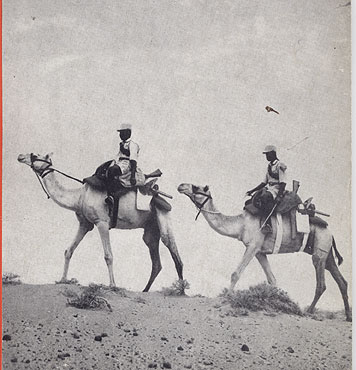
Policing the Kenya Northern Frontier-Camel Patrol (1957)

Silly, that is not the way to get in!

Earlier settlers of Kenya in a vintage car at the Royal Show 1958
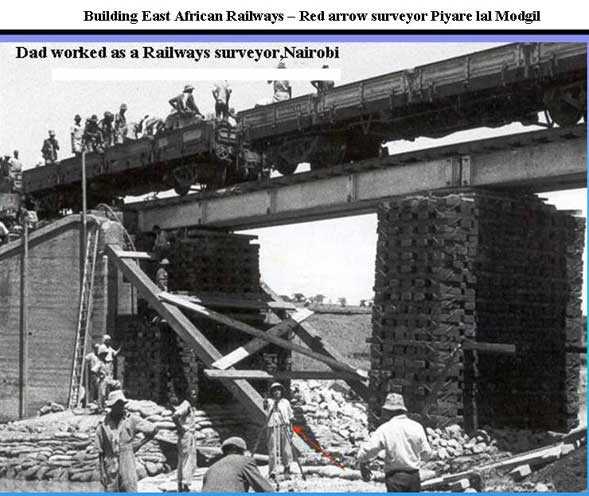
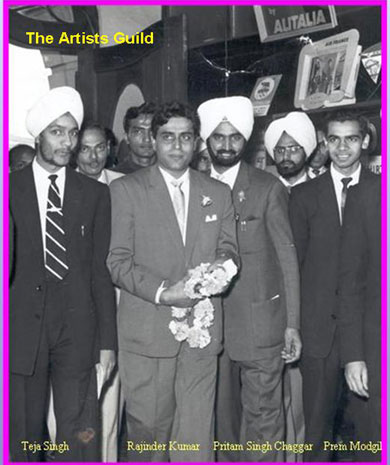
Nairobi Artists Guild welcoming actor Rajendra Kumar (sent by Prem Modgil)
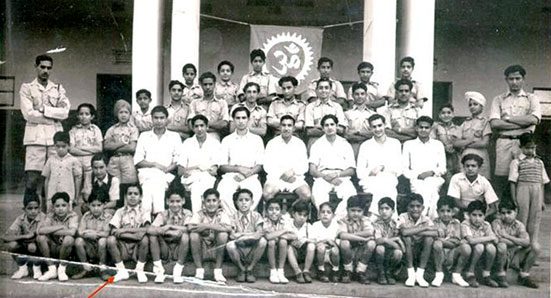
Arya Vir Dal 1951(sent by Prem Modgil)
Sitting (front): Modgill says he's 4th from left; I only know Ravi & Vijay Modgill (New Zealand); right in the middle (black shoes) is my nephew Dinesh. CK is three bodies apart.
In the elite, the first one is Gurdial, the one, once removed, is Sudershan Varma (retired Winnipeg architect); Seh Dev died a couple of years ago (London); next is Om Sharma (our childhood team's sports hero); next could be Ved Ramrakha. On the extreme right sits Chaman Aggarwal, who, with better aim, could have spared me a lot of later life.
He attacked me with a taakuaa, bent upon murder, leaving a 4" gash (mostly healed) on top of my skull and a 7" cut on my hip. When I met him a few years later (at a London Indian film show), I walked up to him and said hello -- he may have ended thereupon in an asylum.(He attacked, insanely a week after a fight outside the downtown Vedic Temple, just because I had stopped a fight, in which he said that I had not given him a chance to hit back on the other culprit. No wonder Yanquis say don't meddle in others' business.)
In the row behind, are my compadres: Dharam Vir Kaura (Engineer), Yoginder Shankardass (Accountant, Mumbai); Ranjit Khosla (Architect, Vancouver), Sat Bali-Sharma (Odinga's lawyer, my best friend, died at 34); Kewal Ahluwalia (Toronto Arya Samaj sevak) -- I can raise his e-mail address; but am sending a copy to my sister-in-law, Bala, so that she can forward this to him. An assortment of Gujjus, unknown to me, are fairly well sprinkled. Strangely, I can't place the uniformed guy, standing to the left; also, in my time we had more than sher babbars in our cohort.
Are you ready for this?! This picture was taken exactly where Chaman had attacked me only months before. This is the new Arya Girls School that all Arya Samajis helped build. Not only was my father the man who went through the whole bazaar and elicited contributions from every India businessman (Marwaris included), my parents gave all the money they had saved so that my mother could have a car -- to transport all needy women. (sent by Dr. Visho Sharma)
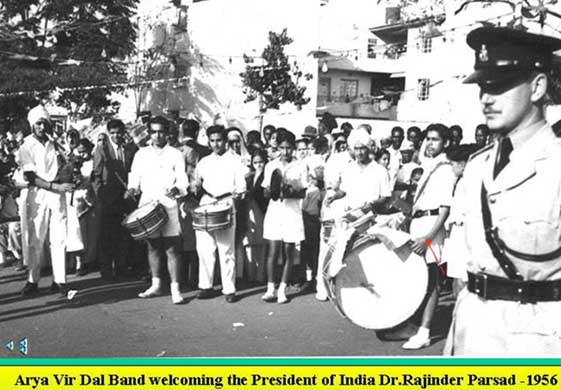
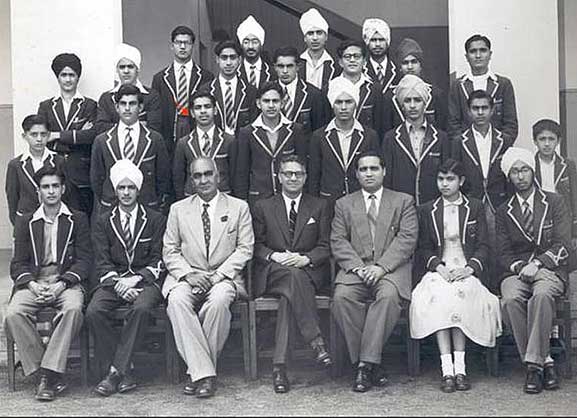
Students with teachers Duke of Gloucester School 1953-1956 (sent by Prem Modgil)
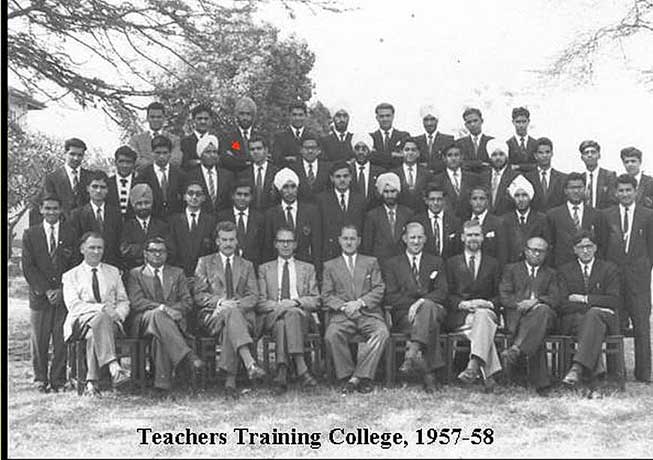
(sent by Prem Modgil)
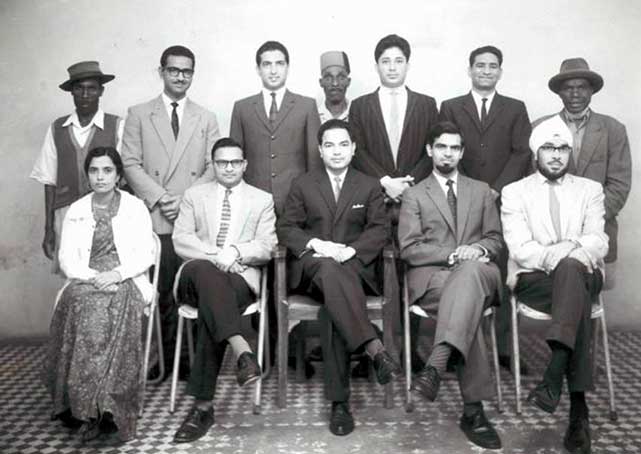
Staff Forthall Primary School Nairobi 1962-1965 (sent by Prem Modgil)
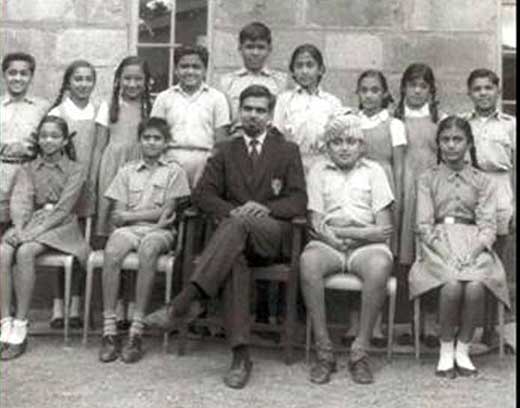
English Literary Society Forthall Primary School (sent by Prem Modgil)
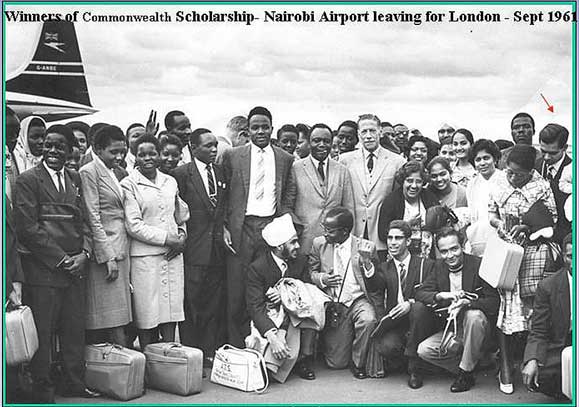
(sent by Prem Modgil)
P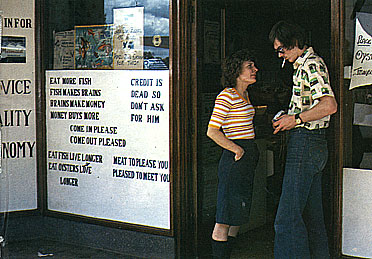
A fish shop in Westlands with interesting 'board' (courtesy 'The Kenya Magic' )
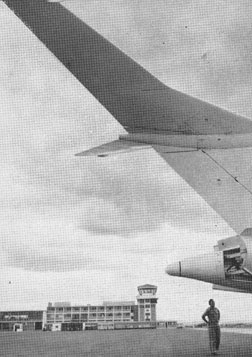
The tail assembly of an RAF Victor Bomber frames Nairobi Airport's terminal building 1959
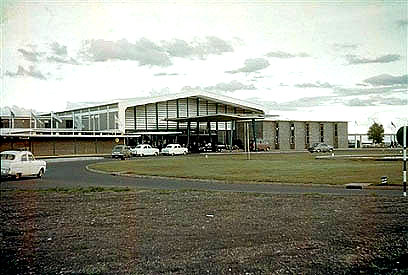
Nairobi Airport around1959 (courtesy Daphne Seager)
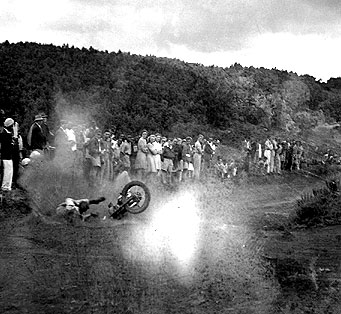
Motor Cycle races misphap on track Nairobi (Courtesy JRSP)
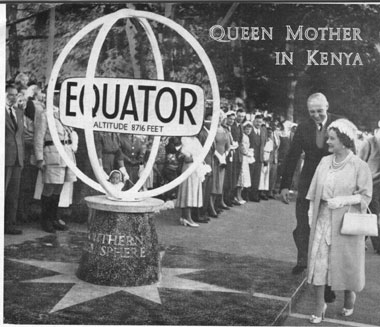
The Queen Mother's visit to Kenya -seen here with the Governor of Kenya, Sir Evelyn Baring (1959)
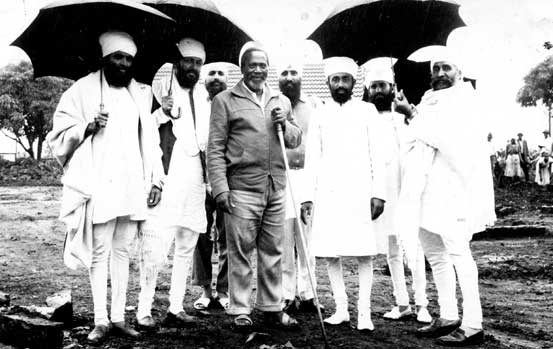
President of Kenya Mzee Jomo Kenyatta with Sri Satguru Jagjit Singh Ji at his residence in Gatundu where the Namdharis built a hospital. Circa 1973
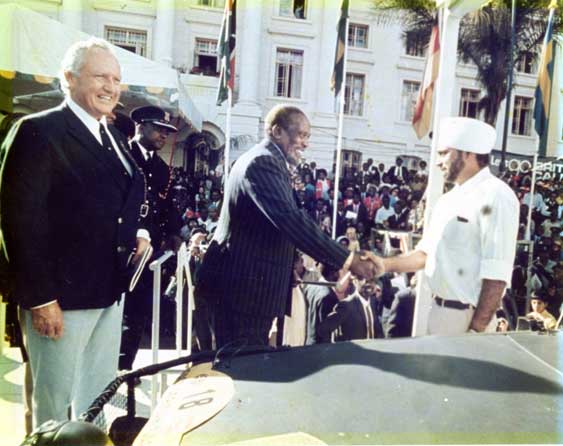
President Jomo Kenyatta greets Joginder Singh (Simba) on the start of the East African Rally (previously Coronation Rally). Eric Cecil, a safari official looks on.
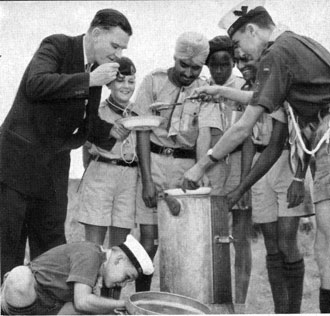
The Chief Secretary, Mr. W.F. Coutts, shares the fare cooked by Boy Scouts at the all-races 'Camporee' near Nairobi. (1958)
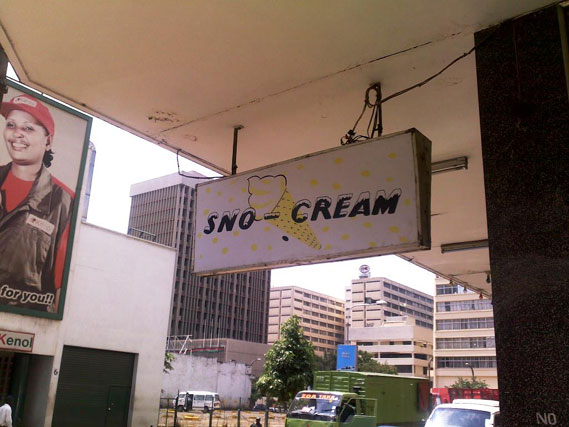
Remember!!---- The Sno Cream parlour (photo sent by Pushpendra Shah )
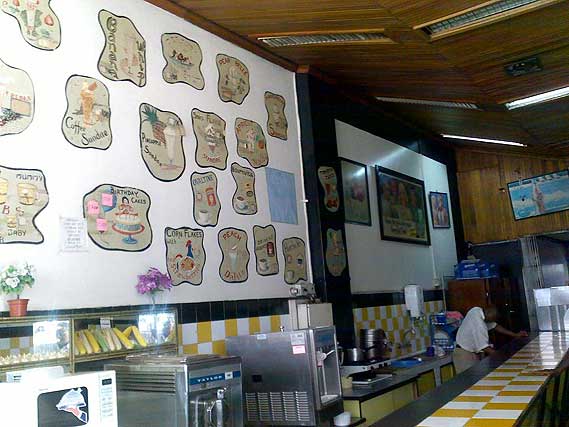
Inside the sno cream parlour (photo sent by Pushpendra Shah )
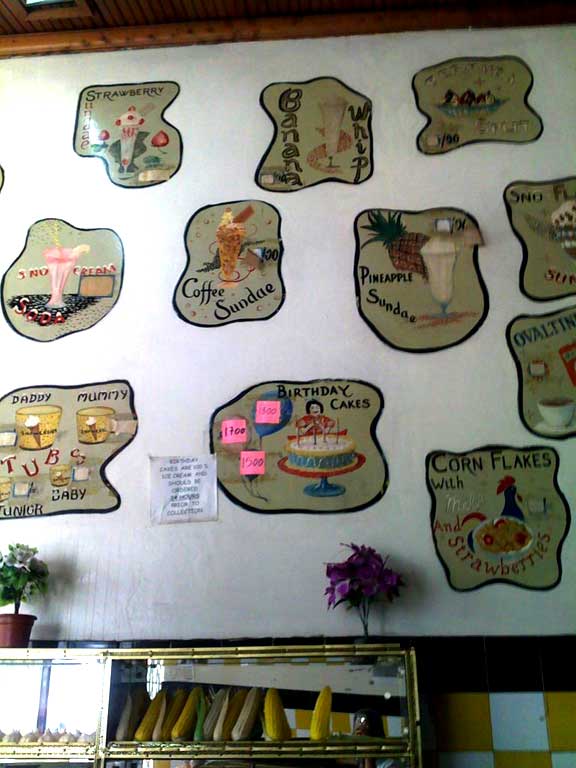
Sno Cream interesting menu (photo sent by Pushpendra Shah )
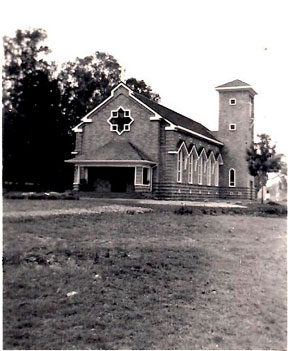
St. MARKS CHURCH WESTLANDS 1959. (sent by Roy Barratt)
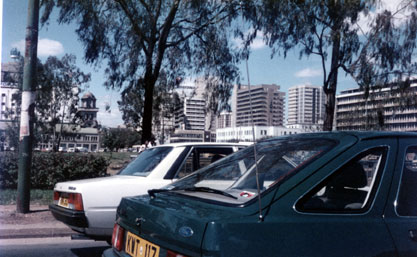
Nairobi from Uhuru Highway 1985
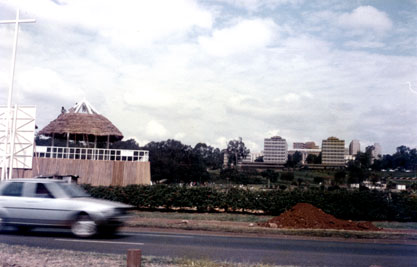
Nairobi from Uhuru Highway 1985
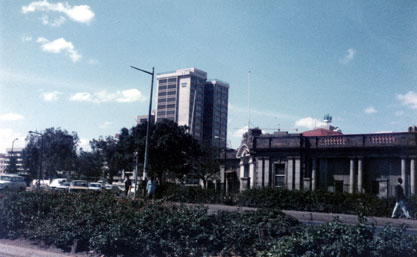
Nairobi near the GPO ..from Uhuru Highway 1985
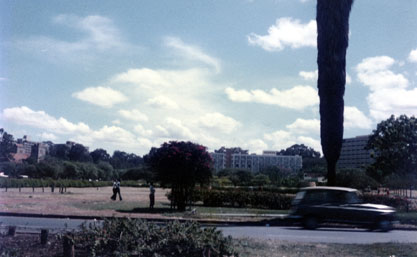
Nairobi from Uhuru Highway 1985
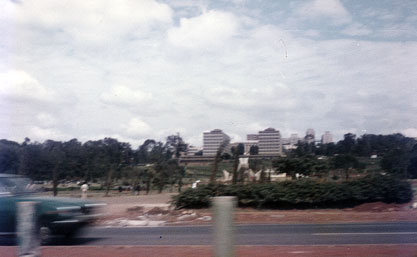
Nairobi from Uhuru Highway 1985
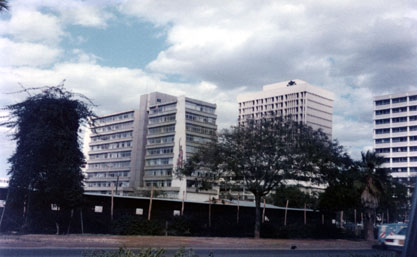
Majestic Nairobi 1985
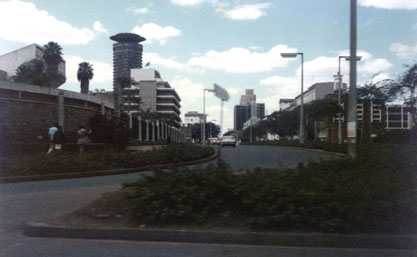
Nairobi 1985
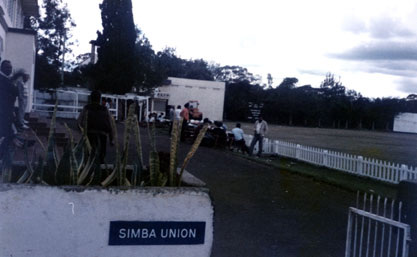
Simba Union (formerly Sikh Union) Club Forest Road 1985 [Name changed back to Sikh Union club on 10th Dec 2010]
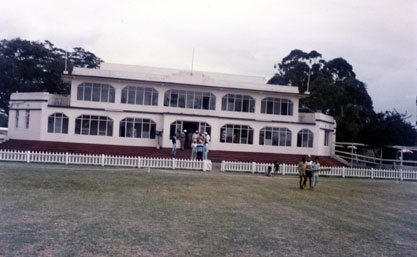
The Simba Union Club 1985
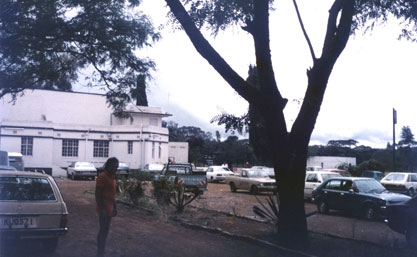
Simba Union Club 1985 - Surjit Panesar on of the best hockey players of Kenya in background
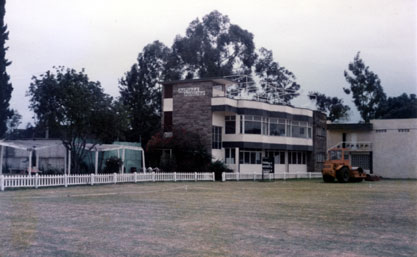
Patiala Pavilion & Squash courts of the Simba Union 1985
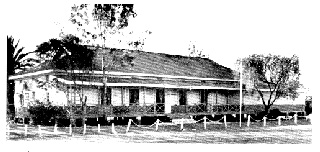
The Railway Goan Institute on Juja Road 60's

Goan Institute (GI)on Juja Road 2012
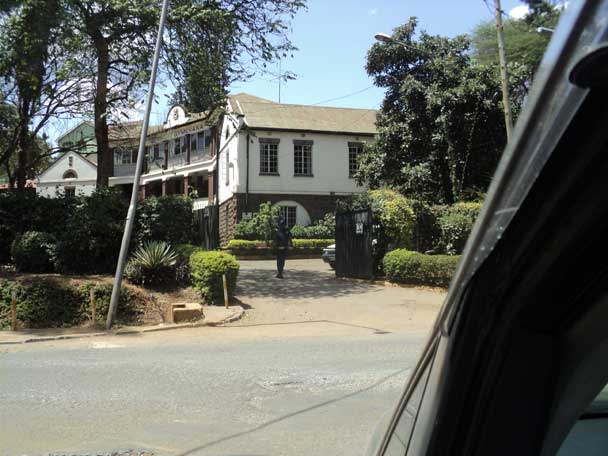
Goan Gymkhana near the museum 2012
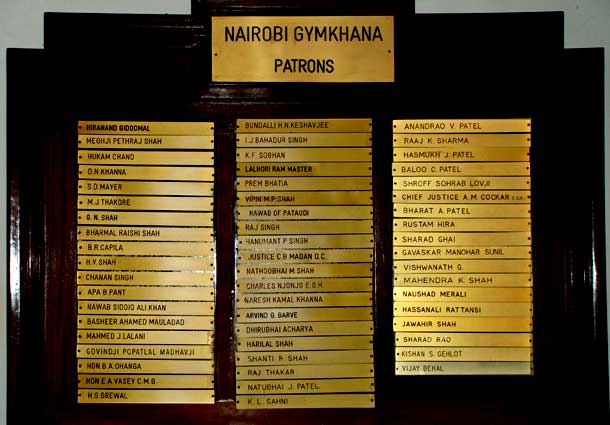
Patrons of Nairobi Gymkhana formerly Suleman Verjee Indian Gymkhana (courtesy Karam S Bharij) You might be able to recognise some well known names.
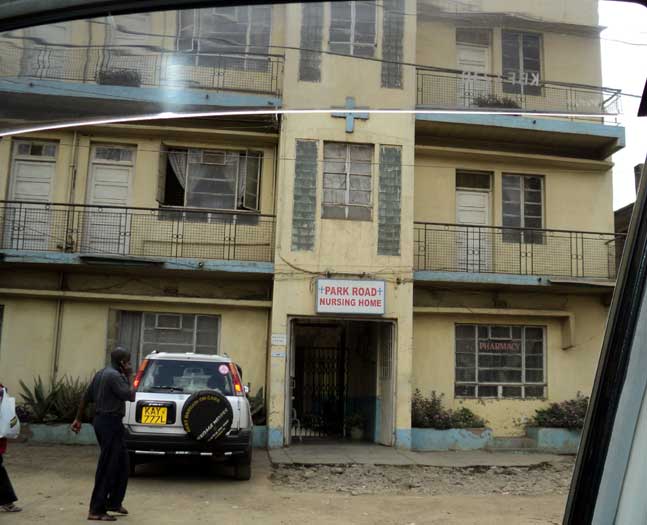
Half a century old Parklands Nursing Home still stands on Park Road in 2012
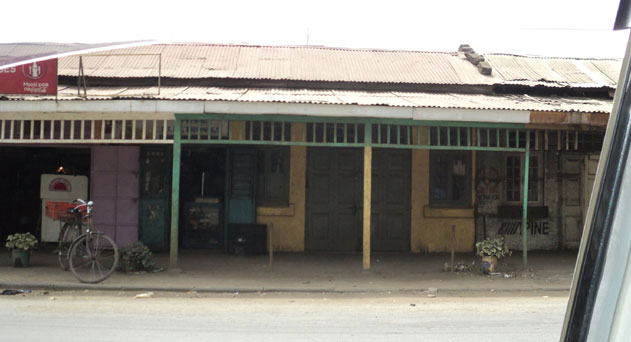
Nearly 100 years old shops still going strong on Park Road in 2012
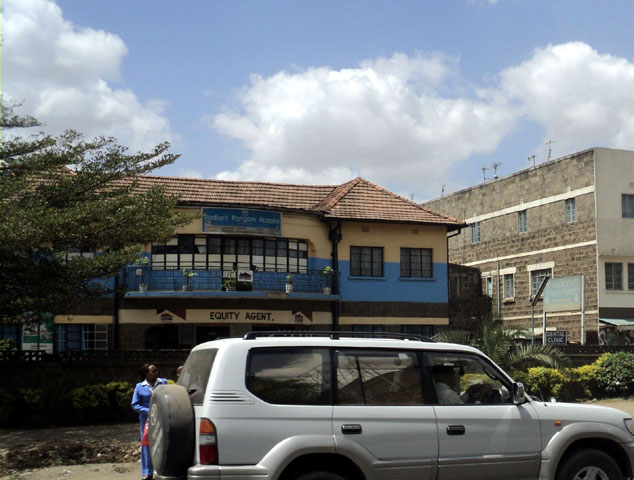
Radiant Health Clinic (known as Haq's dispensary) on Juja Road - now called Radiant Pangani Hospital 2012
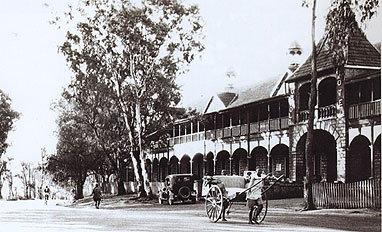
Norfolk Hotel in 1928 just after it was bought by Abraham Block from W.H.E. Edgley. (photo courtesy Nigel Pavitt)
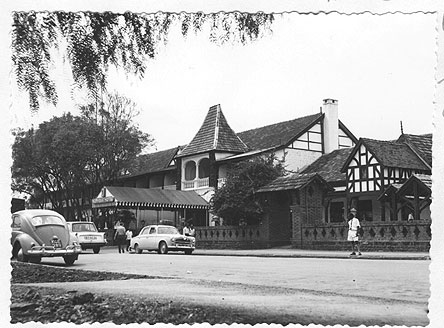
Norfolk Hotel around 1950's (sent by Max Bensheid from Germany)
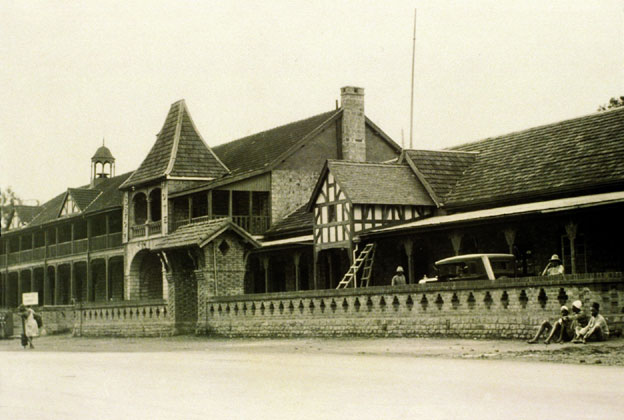
The Norfolk Hotel around the 20's
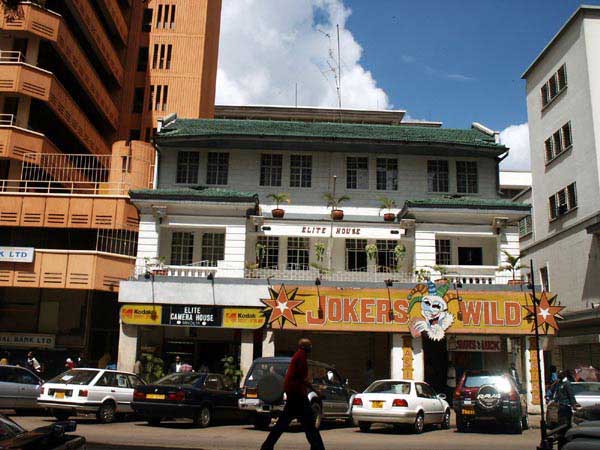
Elite House on Hardinge Street (Kimathi St)
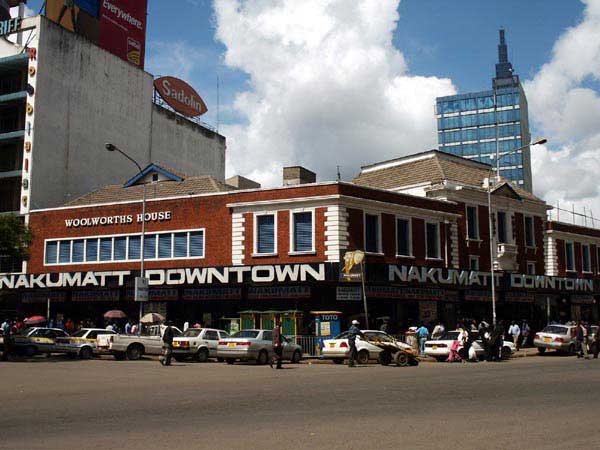
Old Woolworth
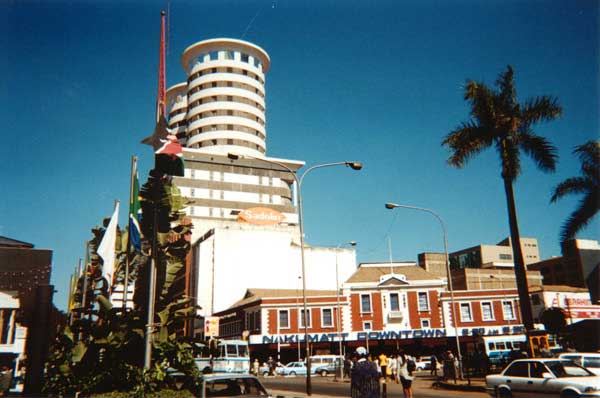
Old woolworth with twin towers in background
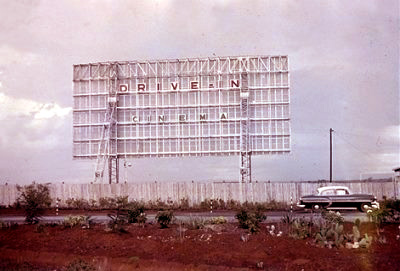
Fox Drive-In Cinema on Thika Road near Ruaraka Breweries.
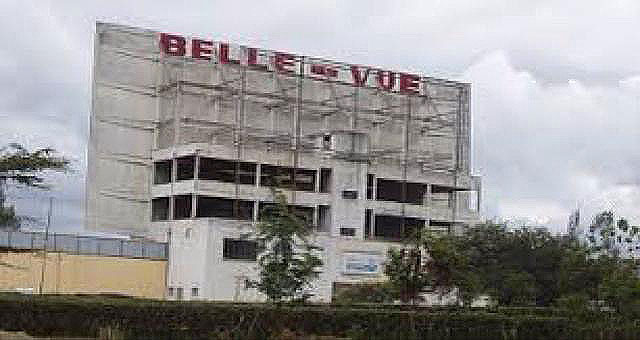
Thr Belle Vue Cinema on Mombasa Road - Meeting place for Asians on weekends.
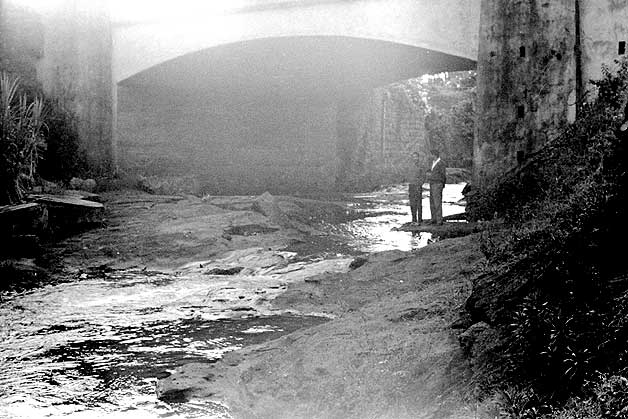
Nairobi River under the Ainsworth Bridge near the Museum 1950's (sent by Rajni Shah)
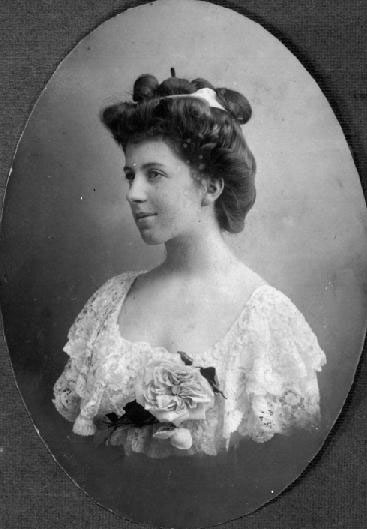
Karen Blixen (1885-1962), also known by her pseudonym, Isak Dinesen, is famous for her memoir, Out of Africa, and for several works of fiction, including Seven Gothic Tales (1934) and Winter's Tales (1942). A 2007 poll of opinion in her native Denmark lists Karen Blixen as one of the most representative personalities in Danish history. She was several times nominated for the Nobel Prize in Literature. She wrote in English, after living on a coffee farm in Kenya from 1914 to 1931. THE SUBURBS OF NAIROBI 'KAREN' WERE NAMED AFTER HER.
The farm house of Karen Blixen in 'Karen' Nairobi- now a museum
Karen calling
March 18, 2012
Nairobi was once home to Danish baroness and author, Karen Blixen. Here, sandwiched between coffee farms in the vicinity and the Ngong Hills in the distance, Preeti Verma Lal unravels a romance that might have been fodder for the writer’s soul.
In Nairobi, names can baffle you. Streets are called ‘Mama Ngina’, ‘Kinyanjui’, ‘Ngotho’; a political leader is called ‘Oginga Odinga’; a baby boy could be called ‘Bhekizitha’; ‘kuku paka’ is chicken in coconut curry; ‘samaki wa kukaanga’ is fried fish; ‘chibanga munyevu’ is black-shouldered kite; ‘kerenegendze ‘is partridge...thankfully, in the Kenyan capital you do not always have to twist your tongue. In one swish neighbourhood, all you need to know by rote is Karen. Everything is Karen here. Karen Chemist. Karen Tyre Centre.
Karen Inn, Karen Hospital. Karen Provision Store. Karen Art. Actually, an entire neighbourhood called Karen. Forgive the monotony of the countless Karens. Nairobi sure loves the Danish Baroness called Karen von Blixen-Finecke who lived in a lavish farm home from 1914 to 1931. Yes, Karen is the Danish baroness who, as Isak Dinesen, wrote Out of Africa and was immortalised in the Oscar-winning eponymous film starring Meryl Streep and Robert Redford.
Blixen’s lyrical memoir of her life in Africa begins with colloquial candour: “I had a farm in Africa, at the foot of Ngong Hills.” In Nairobi, I had shunned the zebras and the giraffes. I was in search of that famous writer with gimlet eyes, arched eyebrows, sinuous curls, thin lips; her fingers stained with ink, her typewriter clanking with beautiful stories, and the farm where she grew coffee, wove stories and narrated tales in her deeply accented, sonorous voice. The drive from the city centre is long; when the gate of the Karen Blixen Museum creaked open, I first noticed the gigantic candelabra tree, the red-hot poker flower and the white, silent clock on the gable in the originally 4,500-acre farm of which 600 was used for coffee farming.
Remnants of an African past
Marriage and coffee farming brought Blixen to Nairobi which, at the turn of the century, was a pit-stop on the Kampala-Mombasa railway line. Like myriad enterprising Europeans, Swedish Baron Bror von Blixen Finecke sailed to Nairobi with wife — and dreams — in tow. And their life unfolded in the house that was built by Swedish engineer Ake Sjogren, and had no electricity or plumbing.
“Everyone loved Karen Blixen and she loved this place,” Rosemary began the guided tour matter-of-factly. Built in typical 19th century bungalow architecture with horizontal verandahs and a gable roof, the house with bedrooms, living, study rooms and an outside kitchen still seems to breathe a bygone age. On the mahogany table lay Blixen’s Corona typewriter, on the bed a sheet of sheepskin, in the kitchen an intriguing wooden sock-dryer, in the corner room, a green iron safe that was made in Austria and imported by Madatally Suleman Verjee & Sons, Mombasa and by the mantelpiece, the menu of the 1928 dinner served to the Prince of Wales who came to Nairobi to ‘hunt’: clear soup with marrow, Mombasa fish with hollandaise sauce, partridge with peas, macaroni salad, and cream sauce with truffles.
But I was not looking for the Prince’s footprints, I wanted to see Denys Finch-Hatton, the dapper, aristocratic British game hunter whom Blixen first met in the Muthaiga Club on the evening of April 5, 1918. That evening began a love affair that would last for several years, with Blixen calling Finch-Hatton ‘the love of my life’. Blixen was wont to hang a kerosene lamp on her door to inform Finch-Hatton that she’s home: green lamp when she was happy, red when grouchy. I wanted to see the Edwardian gentleman who even took his Limoges and gramophone on hunting expeditions. Then, I saw him. In black and white, framed in wood. All around him are photographs of Blixen and memories of their romance. I was despondent. Finch-Hatton was no Robert Redford. He was bald; his famed cat-like grace of movement elusive in the nearly-sepia photograph.
Not everything in the house is original, though. Some of the artefacts displayed were used as props in the film and later gifted to the museum. The film was not shot in this house because “it was too dark and too small”. As I stepped out into the manicured lawn and squinted to see the majestic Ngong Hills, I hummed what Blixen called a song of Africa, of the giraffe, of the African moon lying on her back, of the ploughs in the field, of the sweaty faces of coffee pickers…and of the Danish Baroness who lived in this farm at the foot of Ngong Hills.(sent by Ameer Janmohammed)SEE COLONIAL KENYA PHOTOS..Click here
TO SEE MODERN NAIROBI CITY CENTRE
CLICK HERE
REMEMBERING OLD RESTAURANTS AND EATING PLACES. click here.
---------------------------------------
SEE MODERN KENYA- PHOTOS BY ATEEQ AHMED SIDDIQUI (sent by Nareandra Shah)..click here
--------------------------------------------
NEW ROADS & BRIDGES BEING BUILT IN NAIROBI
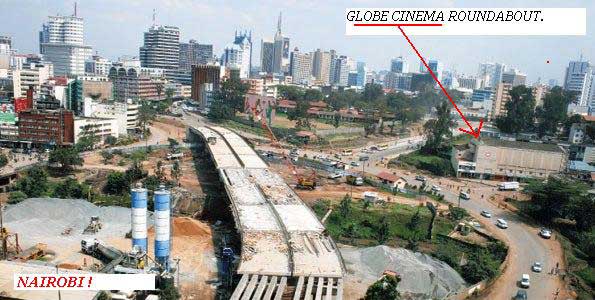
The new Flyover near Globe Cinema 2011 Latest Nairobi photo sent by Pushpendra Shah
